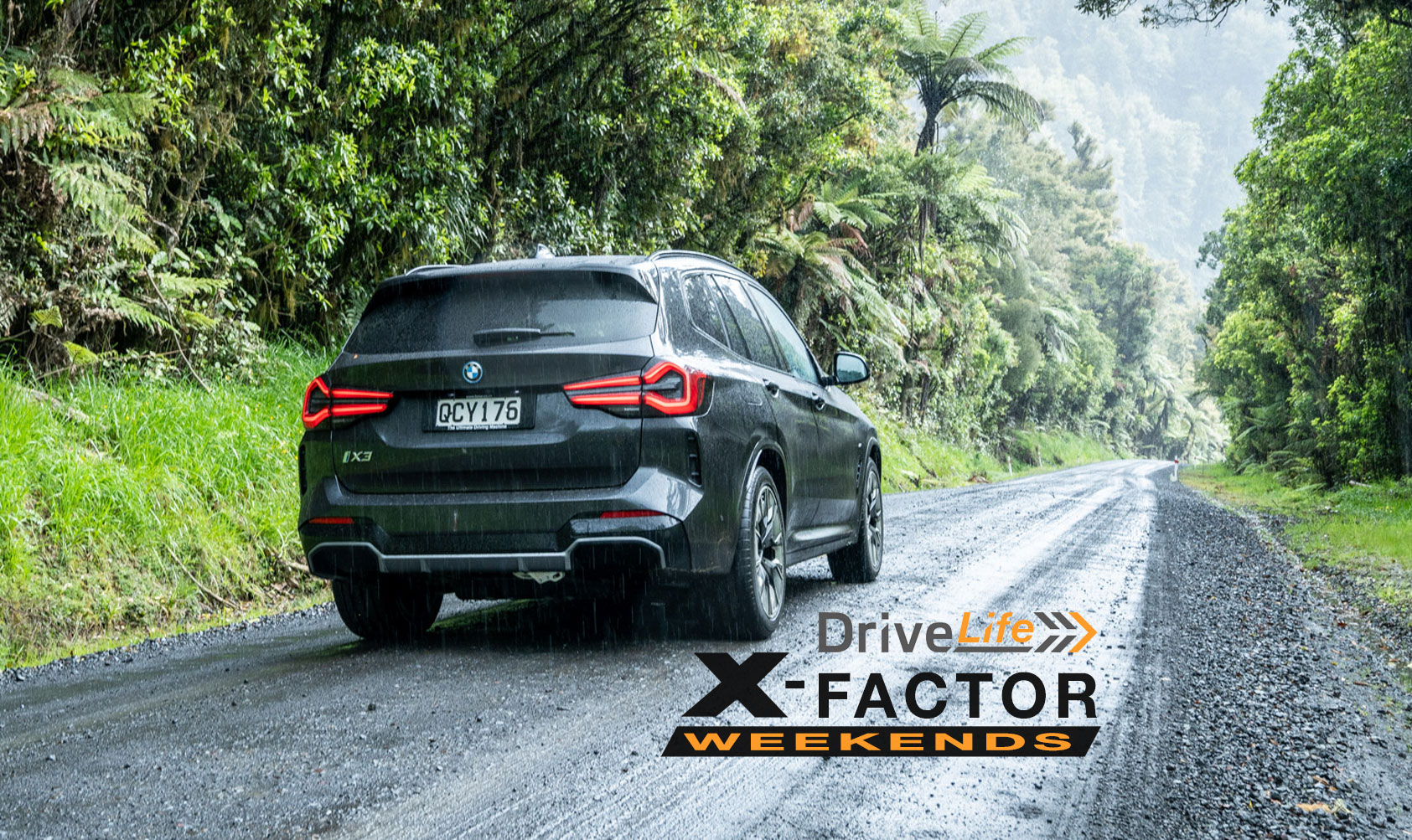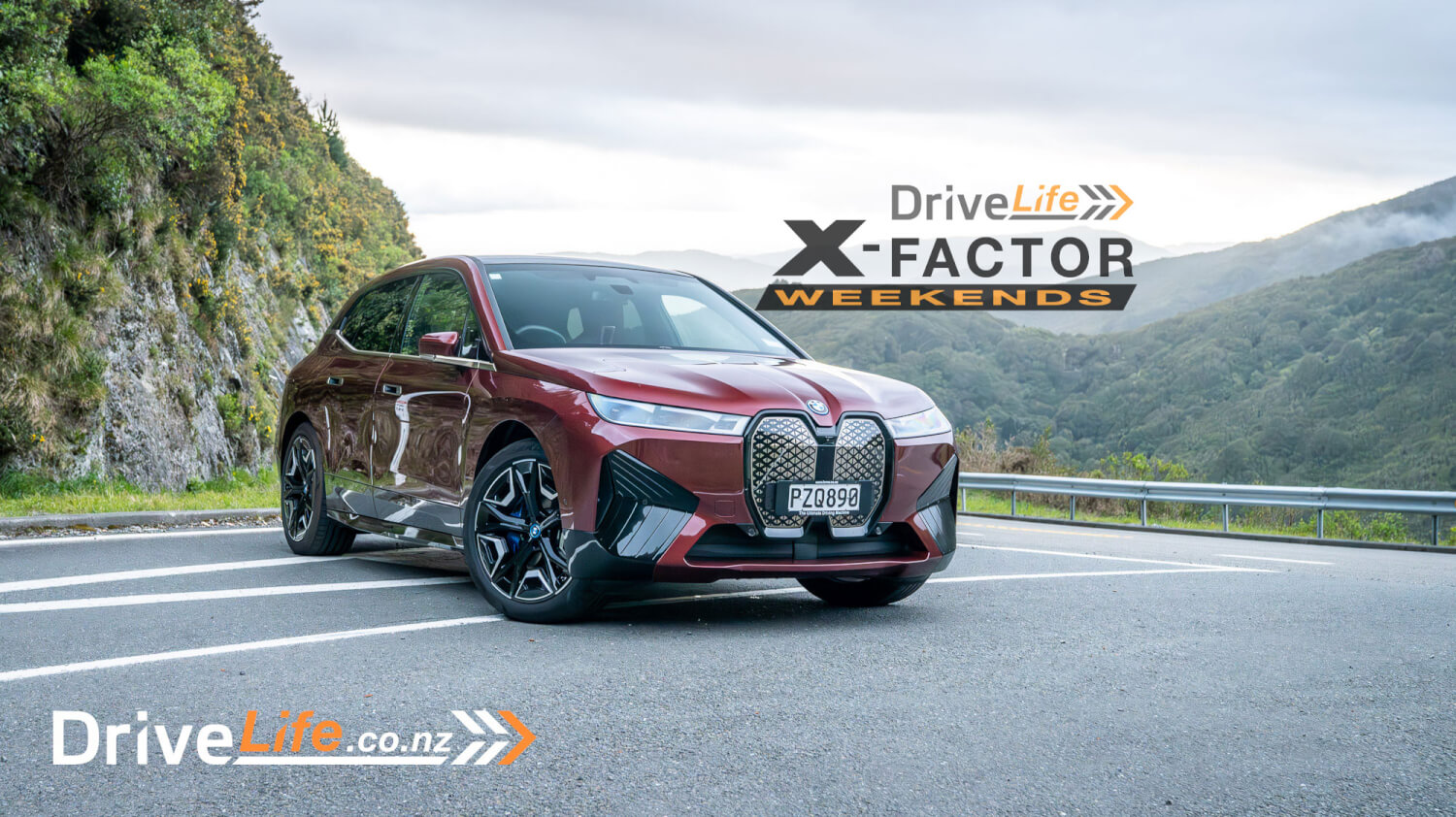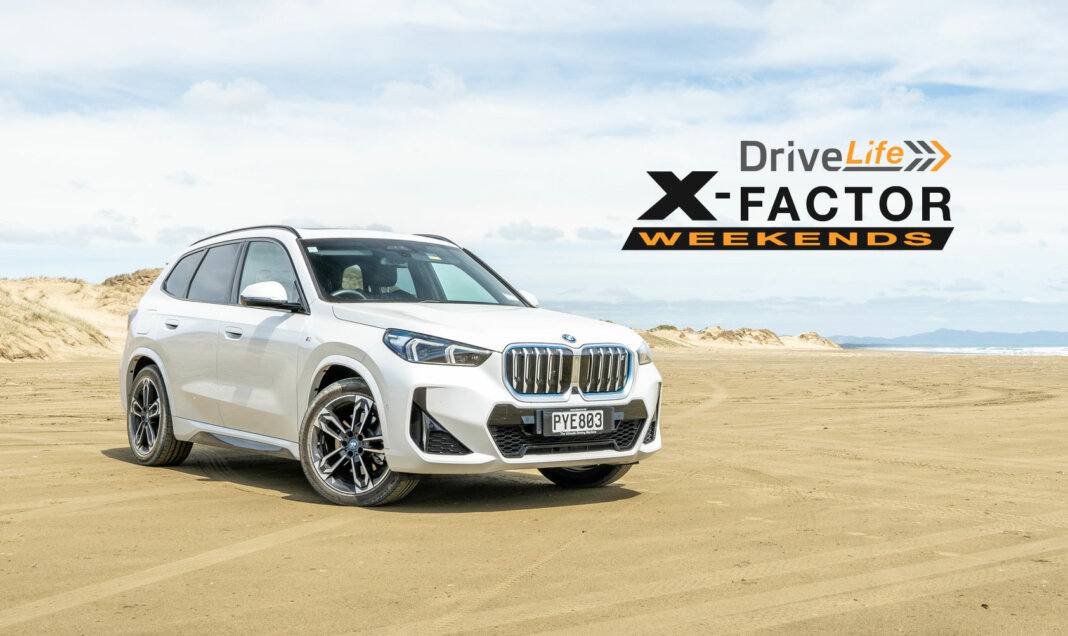DriveLife has partnered with BMW New Zealand to showcase some of the amazing landscapes, roads and attractions in New Zealand while promoting sustainable mobility. BMW is committed to this topic and has challenged us to take to the roads in several of BMW’s electric vehicles to experience the superb driving capability and drive range. This collaboration reflects the growing trend towards electric vehicles globally and in New Zealand.
A recent study conducted by BMW has shown that 53% of New Zealanders would consider purchasing an electric vehicle at some point in the future. With the X-Factor challenge, DriveLife will see how far these electric vehicles have come and also encourage people to experience the versatility of driving them on several adventurous weekends away, across beautiful New Zealand.
The same survey suggests electric vehicle ownership will surpass combustion-powered vehicles by 2035 in New Zealand. That’s a bold claim, which means they have to be able to handle some travelling, as Kiwis love their road trips.
Our third trip starts in Auckland, heading north on State Highway 1. Along the way, we stopped to see Whangarei Falls and the Whangarei Quarry Gardens. Then, we set up a base in Paihia and from there visited the very tip of New Zealand, Cape Reinga, The Giant Sand Dunes, Ninety Mile Beach, Russell, and Tane Mahuta.
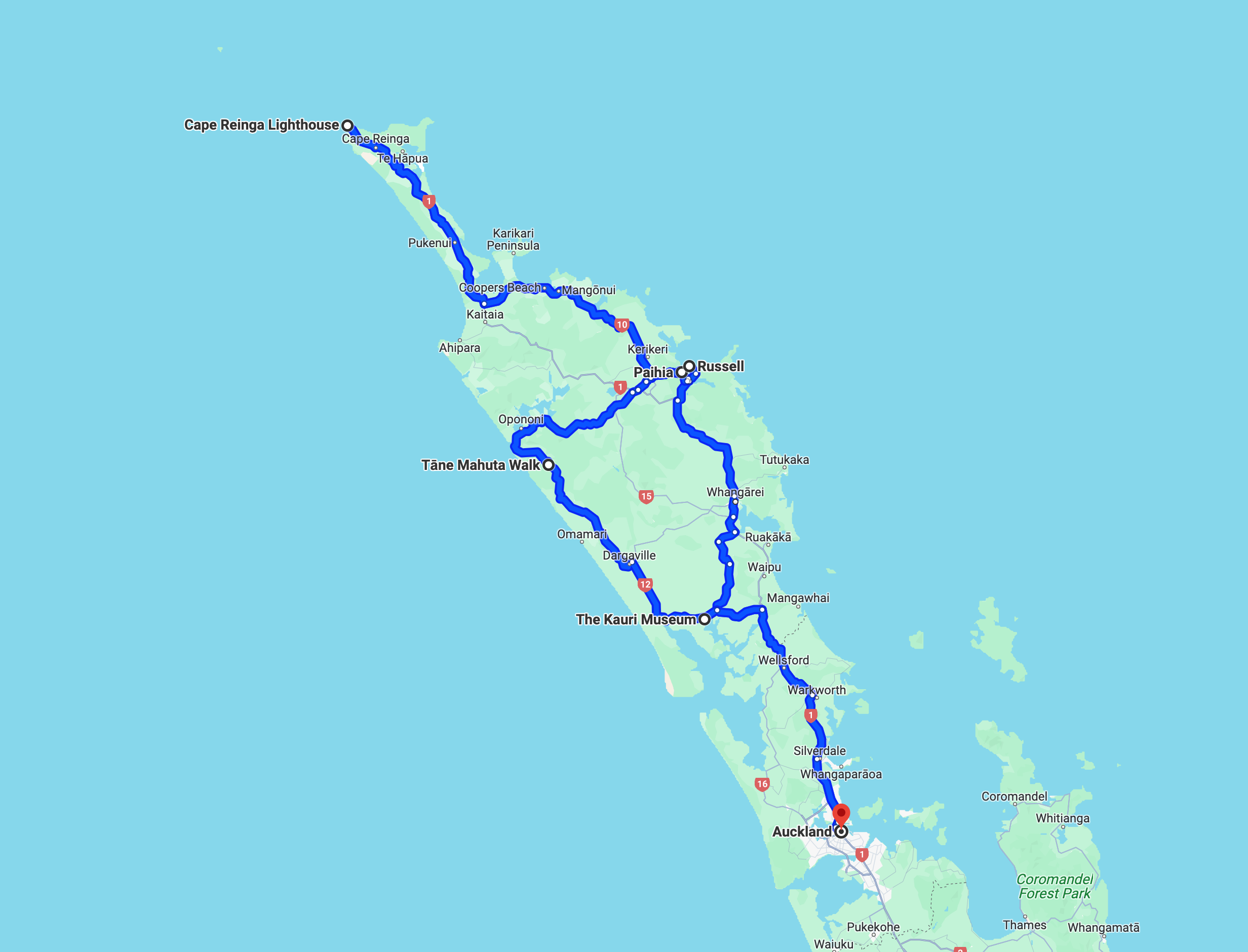
North of Auckland, two things become apparent; there are fewer roads, and there are fewer charging stations too. So, we needed to carefully plan where these chargers were so they could be used for short top-up stops. One app you can use for planning a trip in a fully electric vehicle is PlugShare. This app will showcase the location of all chargers within your region. It shows public and private chargers too, like hotels, where they are for guests only. So, take the time to look across your route to see where the best stops are.
As three out of four New Zealanders expressed concern about running out of charge due to the lack of nearby charging stations, it’s a great way to put the vehicle through its paces.
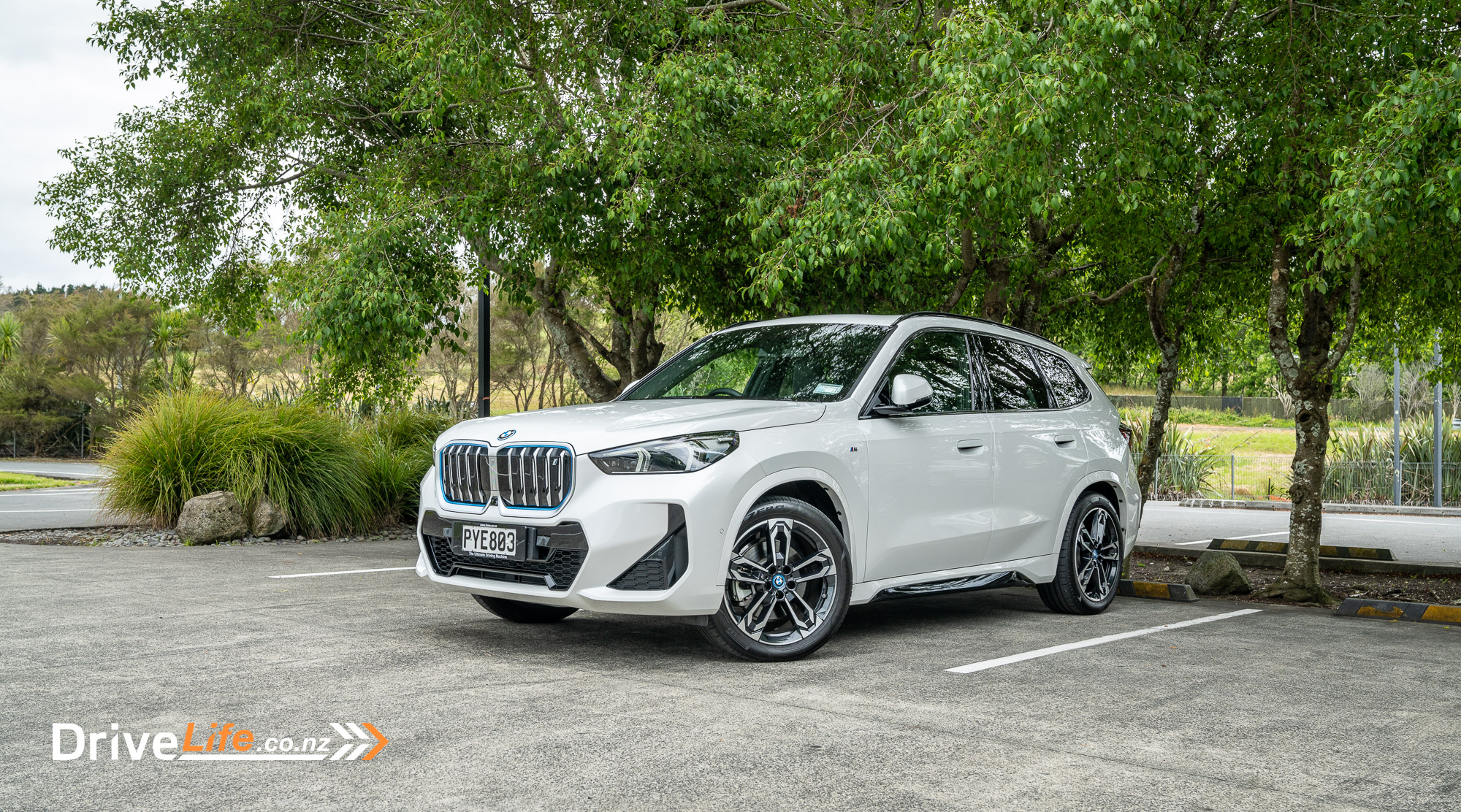
Vehicle – BMW iX1 xDrive30
Our third trip is behind the wheel of the 2023 BMW iX1 xDrive30, the entry point to BMW’s fully electric line-up. Our second trip took us down The Forgotten World Highway in the BMW iX3, and our first was to the beautiful Wairarapa in the BMW iX. Most of the EVs DriveLife reviews slot into our daily lives, but this experience will be different and should help clear some common concerns and superstitions surrounding EVs, offering a perspective on their practicality and performance. The trip up to the very top of New Zealand would prove a great test for the small but powerful iX1.
In terms of updates, and interior styling, the iX1 sits somewhere in between the iX and iX3 as it has the newer generation driver displays and UI like the iX. I like the inside of the iX1; it’s very clean and simple. I especially like the standing wireless charging pad at the top of the centre console. Connecting my phone was a breeze and from there I was able to use Android Auto and Google Maps wirelessly throughout the entire trip. There was a lot of storage room under the main armrest, which is floating – great for road trips.
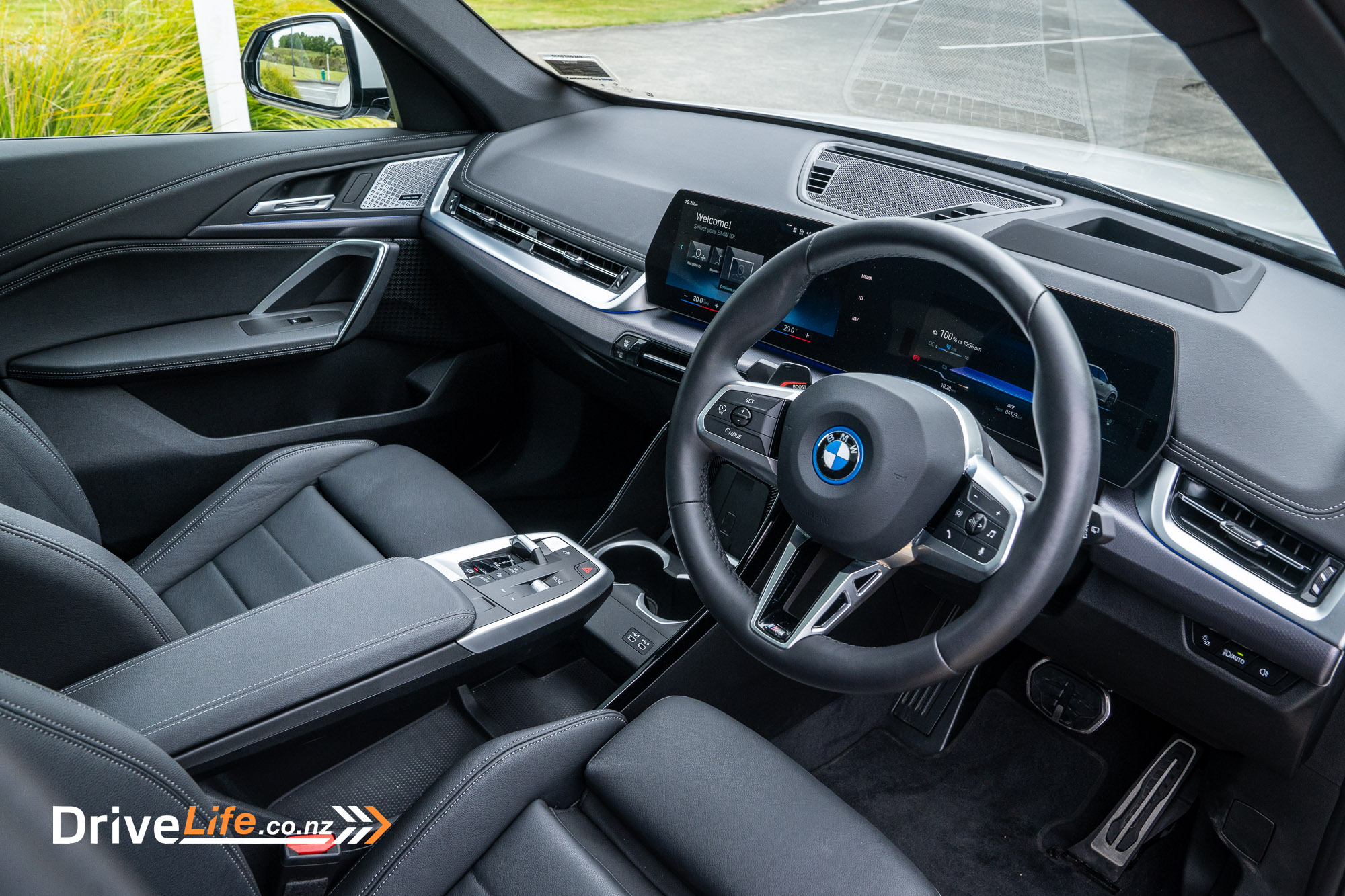
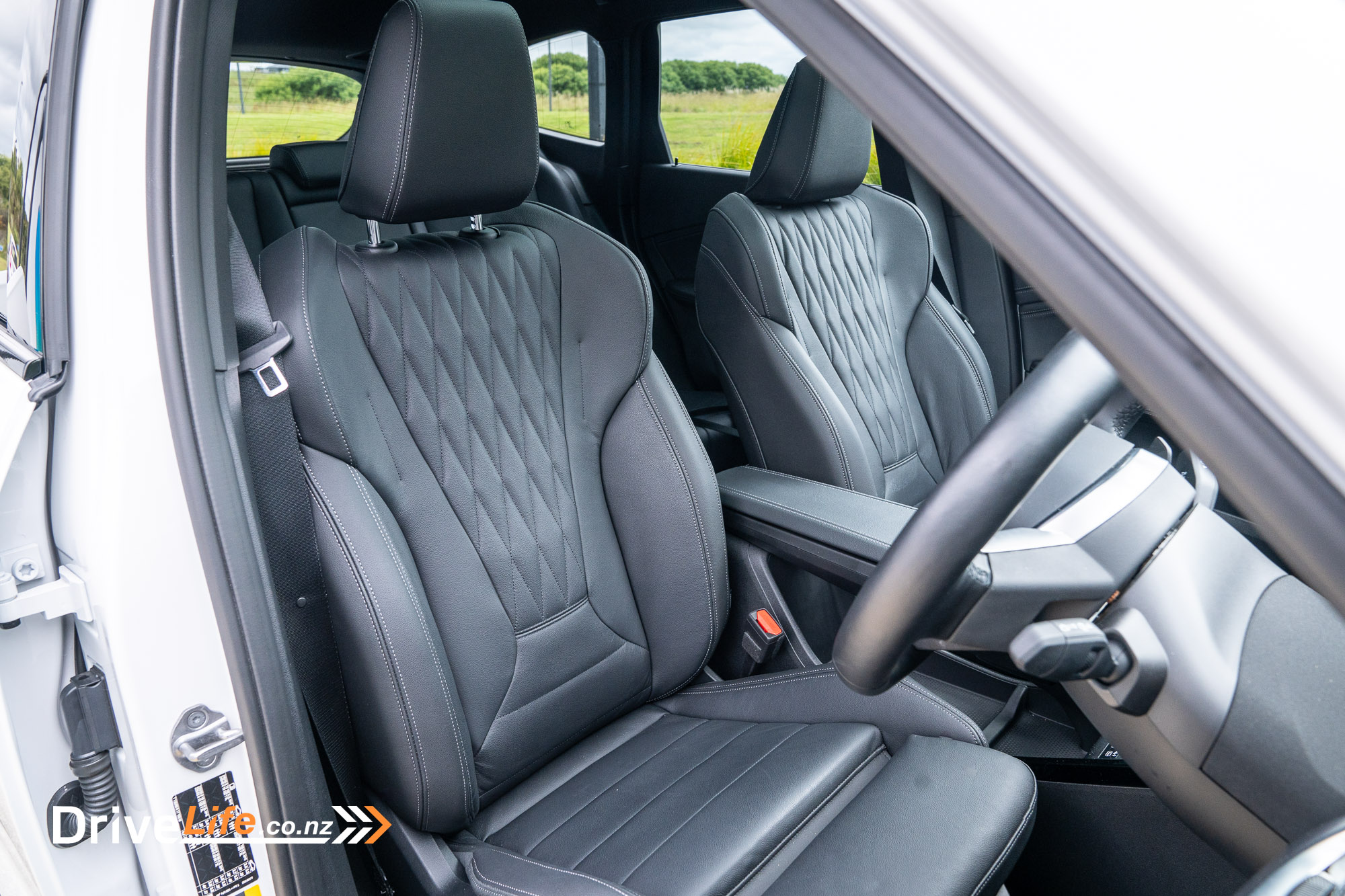
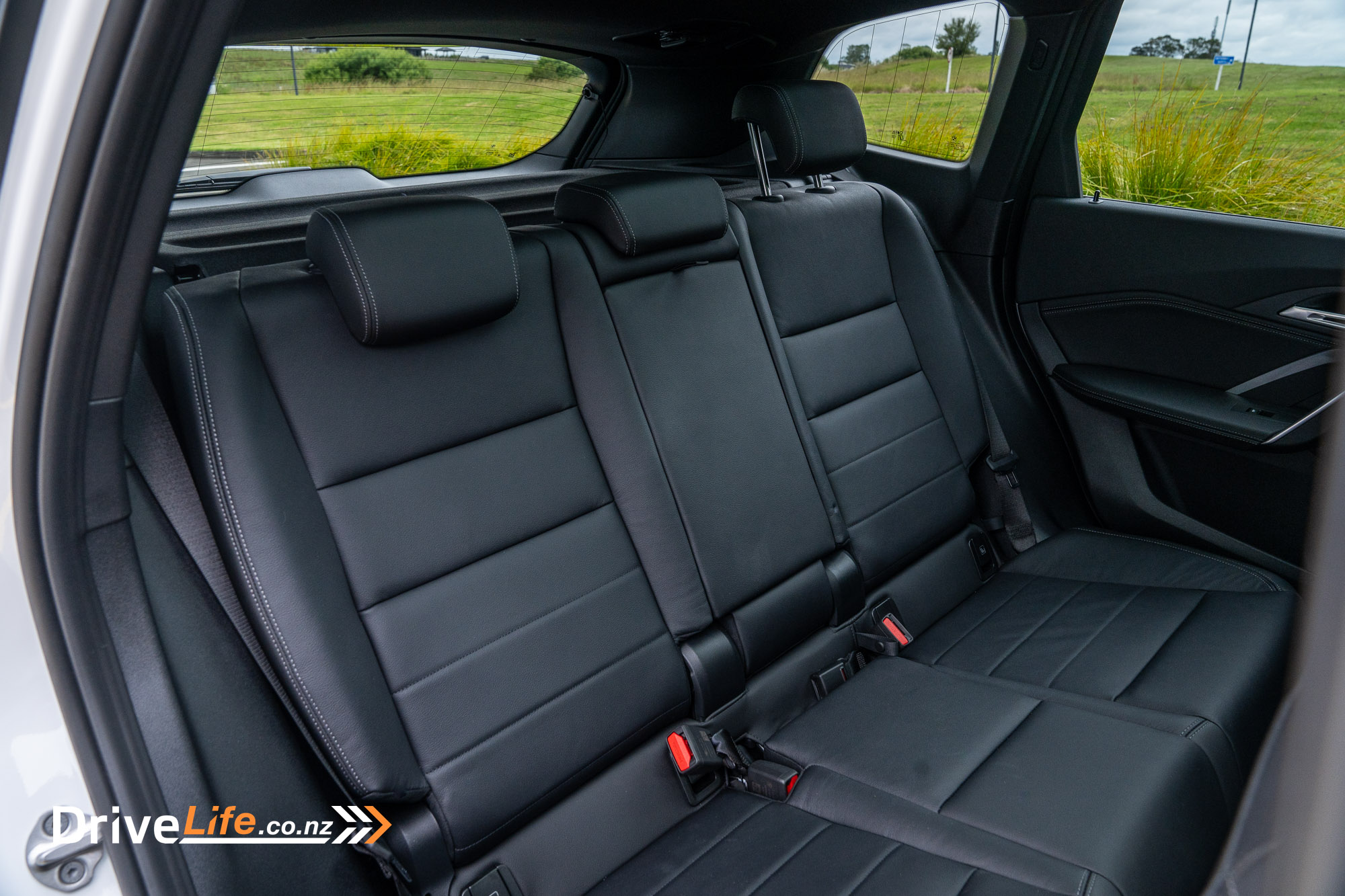
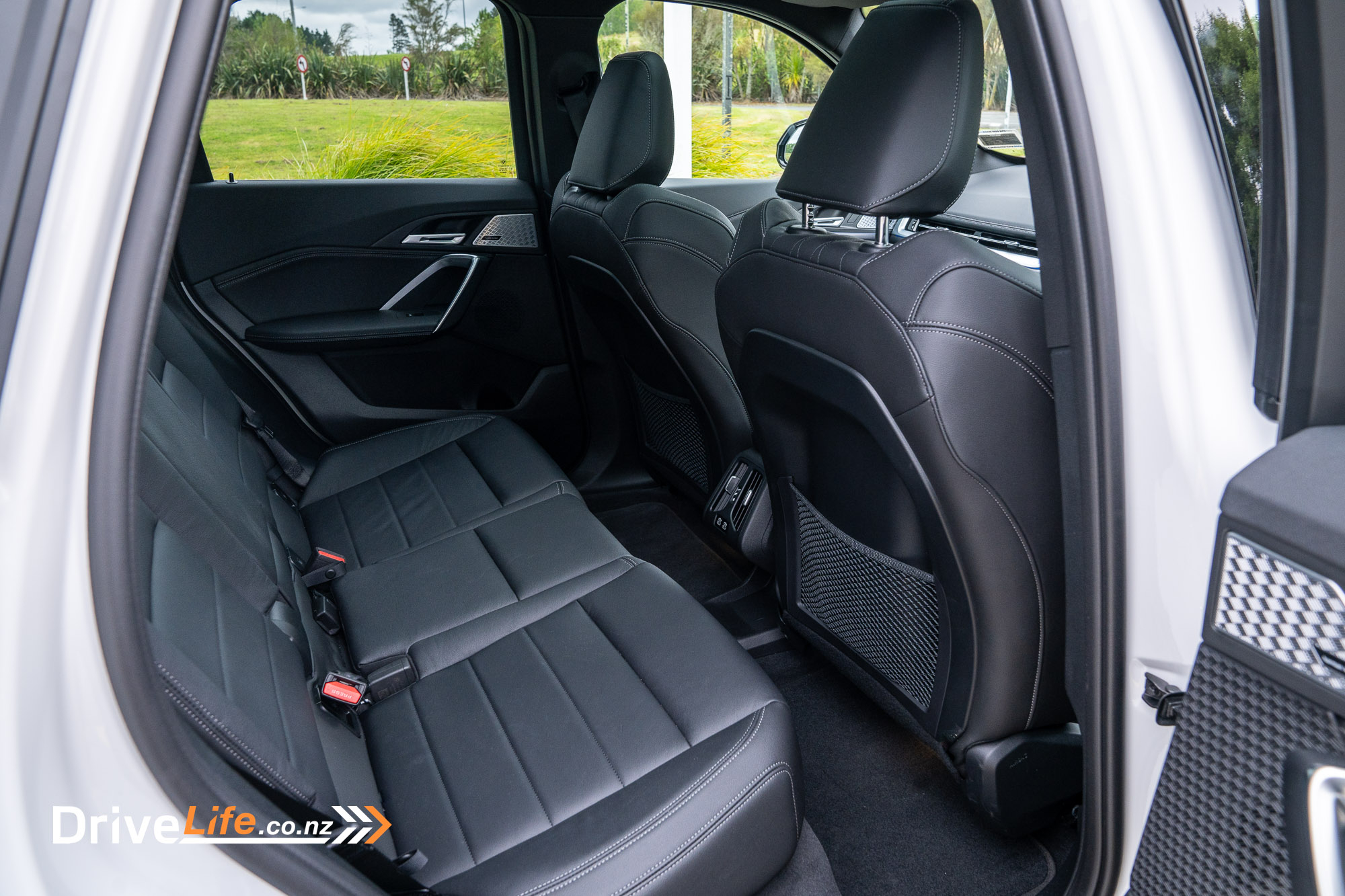
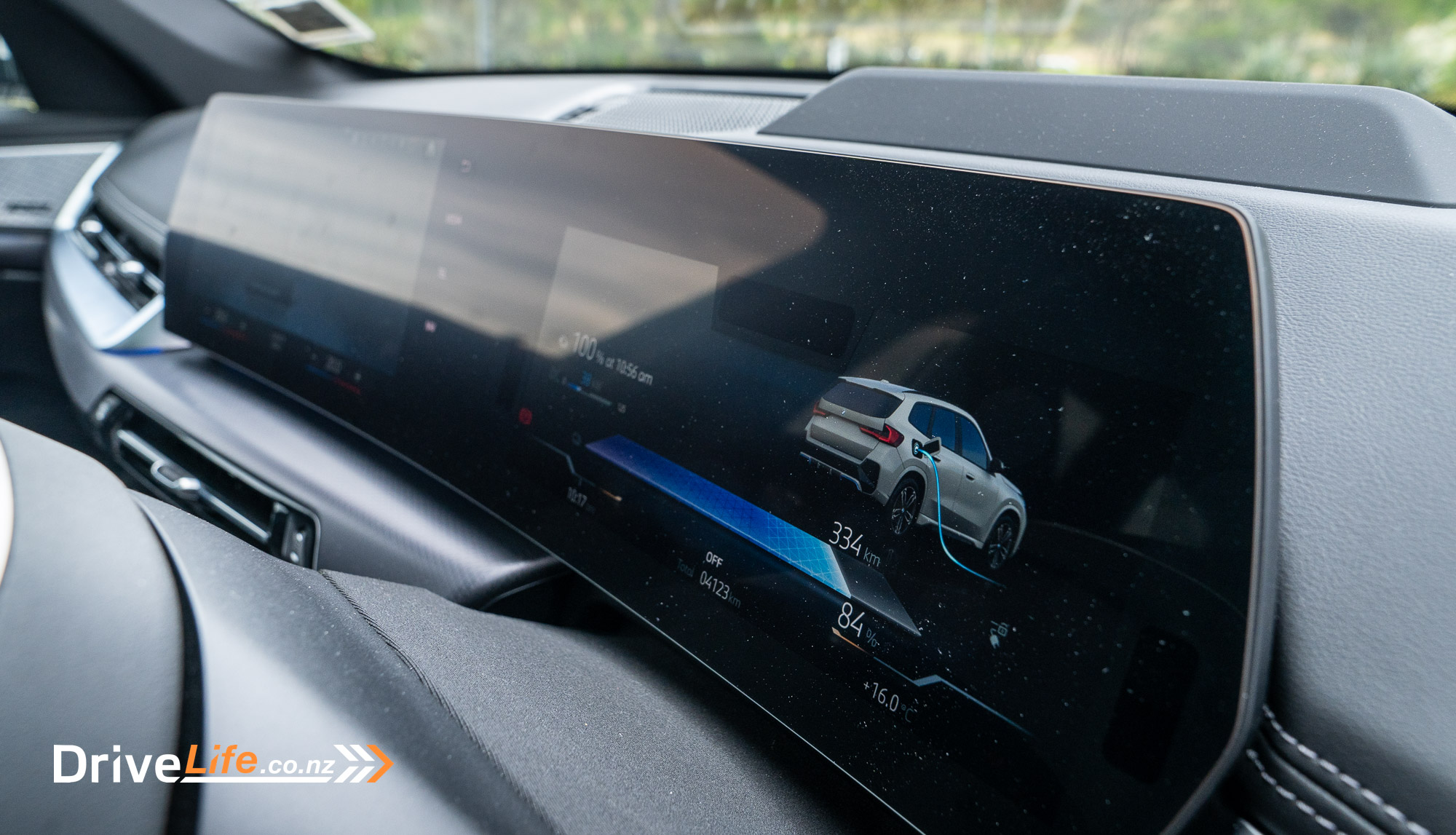
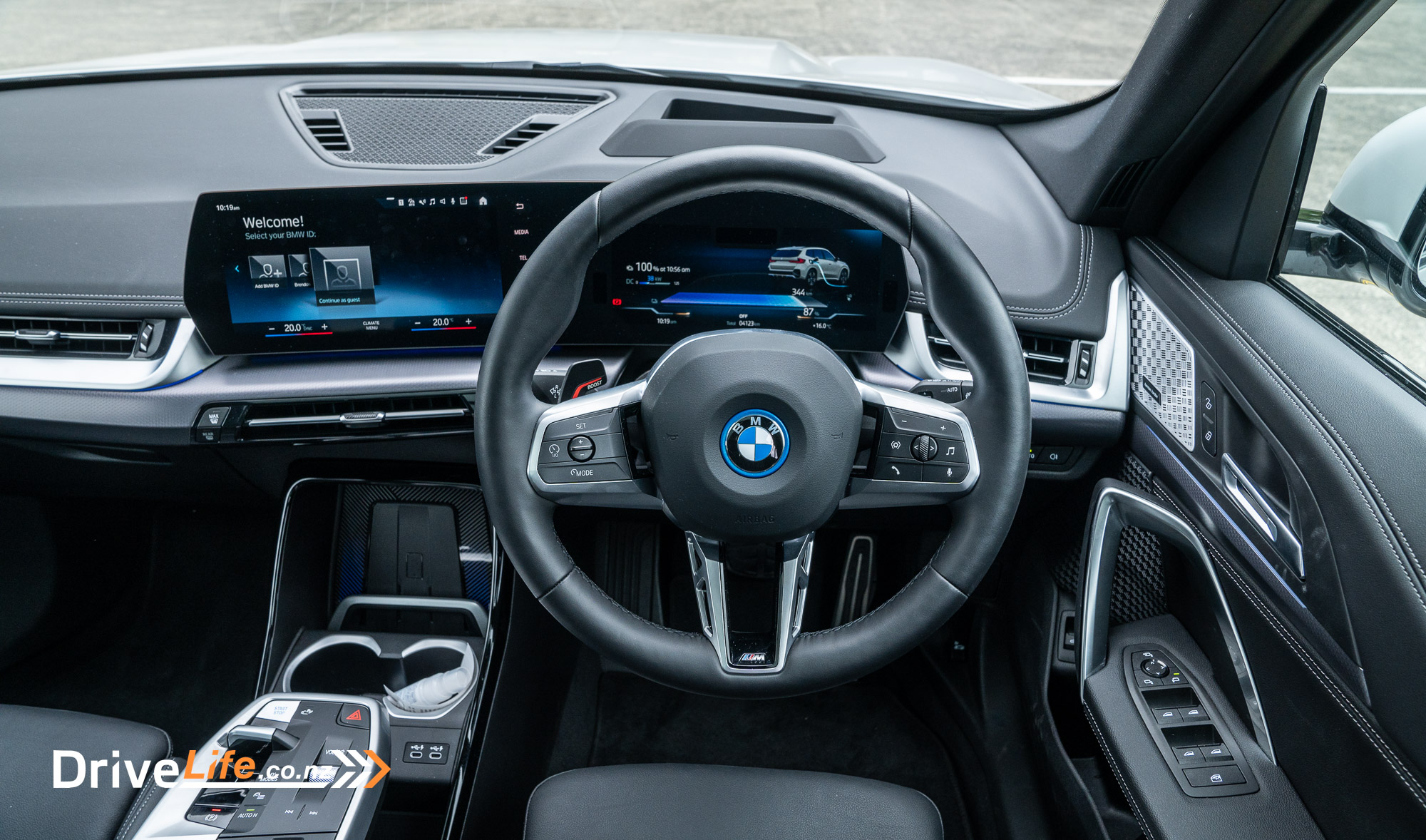
The inside is very clean and surprisingly spacious for what is a compact electric SUV. The seats are well sculpted, with great side and lumbar support. Once again there was a little salute to the EV powertrain with the blue EV BMW logo on the steering wheel.
The iX1 boasts a 440 km range and an electric consumption of 18.1 kWh/100km, which makes it a very suitable candidate for everyday life and long trips away. Throughout the weekend, we will be able to see just how well the BMW iX1 stands up to BMW’s claims.
The iX1 xDrive30 we drove has a base price of $96,900. That includes a raft of standard equipment including adaptive LED headlights, climate control, a head-up display, a panorama glass sunroof and Mineral White metallic paintwork. Its luxury and comfort features include electric seat adjustment, seat heating for the front, wireless charging, automatic climate control, and a powerful Harman/Kardon surround sound system.
Additional features on our test car included a towbar ($2,600), sun protection glazing ($1,000), and leather upholstery ($2,800) – bringing the as-tested total to $103,300.
Day 1 – Friday – Auckland / Bay of Islands
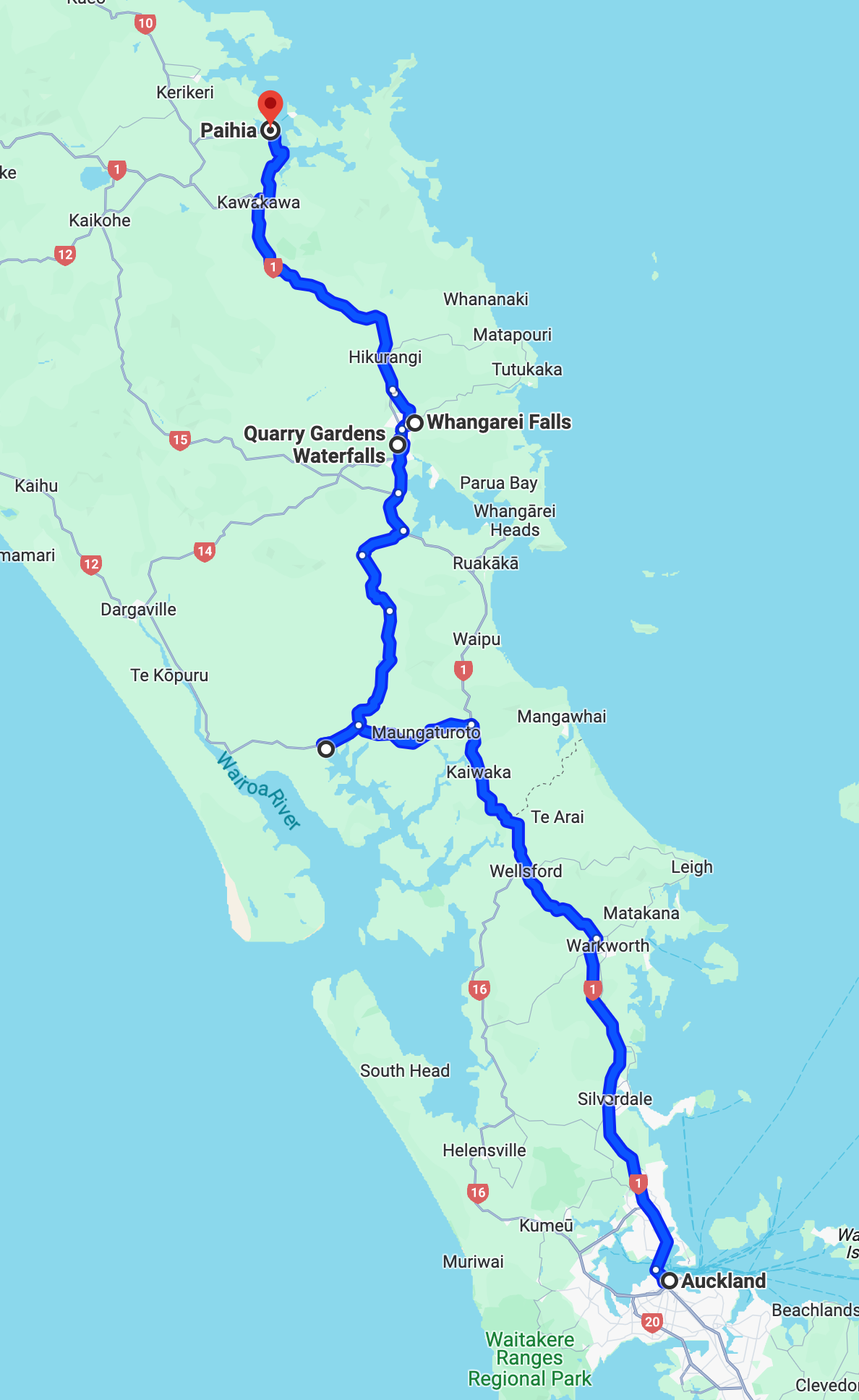
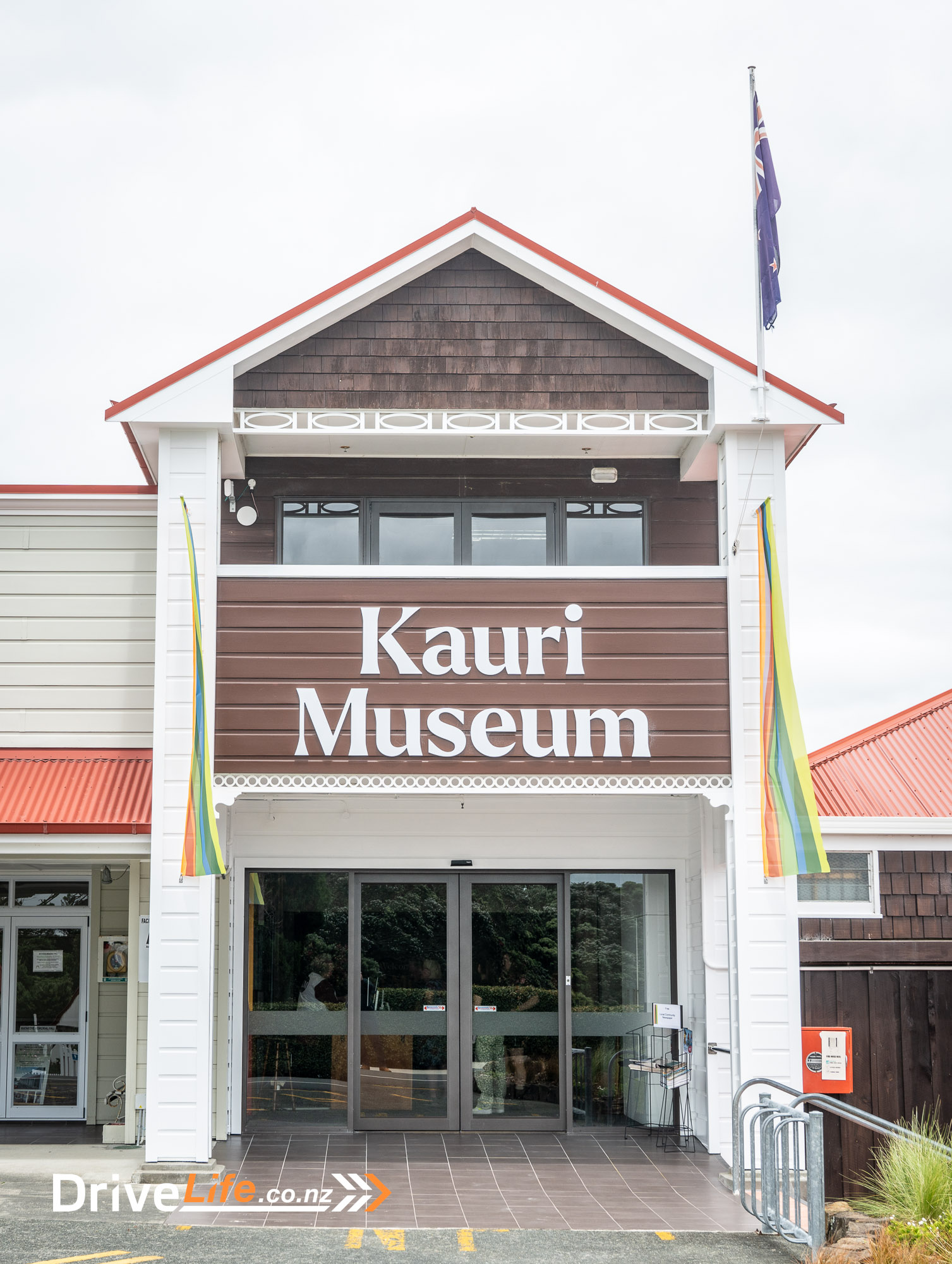
This trip started in the big city of Auckland, ready to head north on State Highway 1. During this X-Factor Weekend, the plan was to cover some of the amazing locations North of Auckland and go as far as the road will let us, all the way to the tip of New Zealand, at Cape Reinga.
The goal for Day 1 was to reach the hotel for the weekend in Paihia, which was 276km away. On the way, we’d stop at The Kauri Museum, Quarry Gardens and Whangarei Falls.
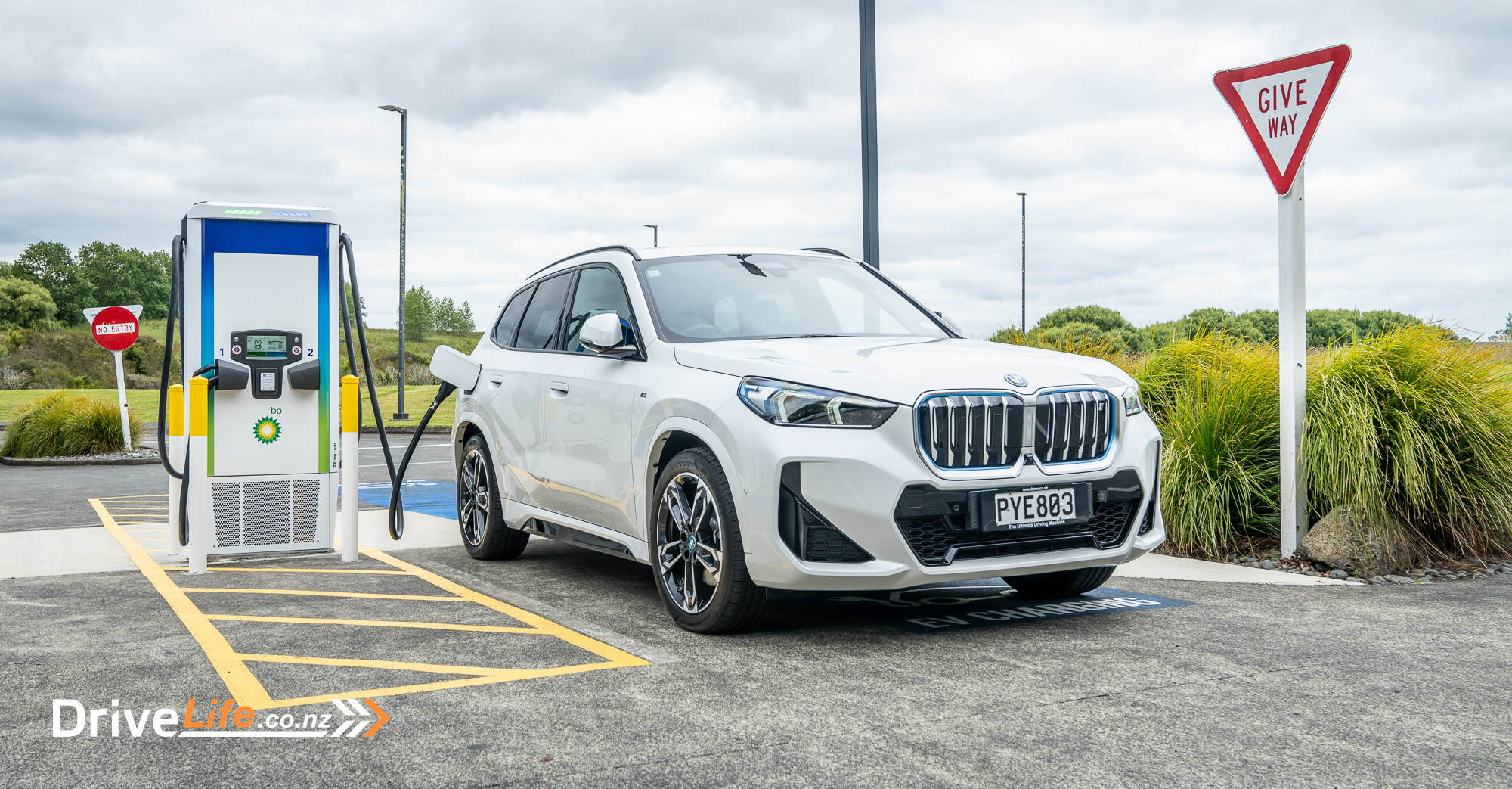
First things first, we needed to charge up. Due to some logistic challenges, our car did not have time to fully charge. But that’s ok and somewhat more true to life; we don’t always get a chance to fully fuel or charge a vehicle whilst juggling all of life’s challenges. On SH1, we stopped at BP Dairy Flats, which is the typical last stop leaving a big city. It has multiple food stops, a big petrol station and some shops. BP also cater for electric vehicles, with four 75kW chargers on site, two of which are set up to charge with a trailer attached. It only took 30 seconds to set up the app and we were charging away, with 40 minutes on the clock until full. After a coffee and some snacks for the road, we jumped back on the motorway and began to head North.
The motorway north is a great road. Part of it is also a toll road, so it should be good. Once we passed Warkworth, the road changed back to the typical 2 lane highway as it wound through the hills. The BMW iX1 handled the motorway with ease, so quiet and relaxing. Even when we got onto the windy roads it always left me with confidence, thanks to the xDrive all-wheel drive system.
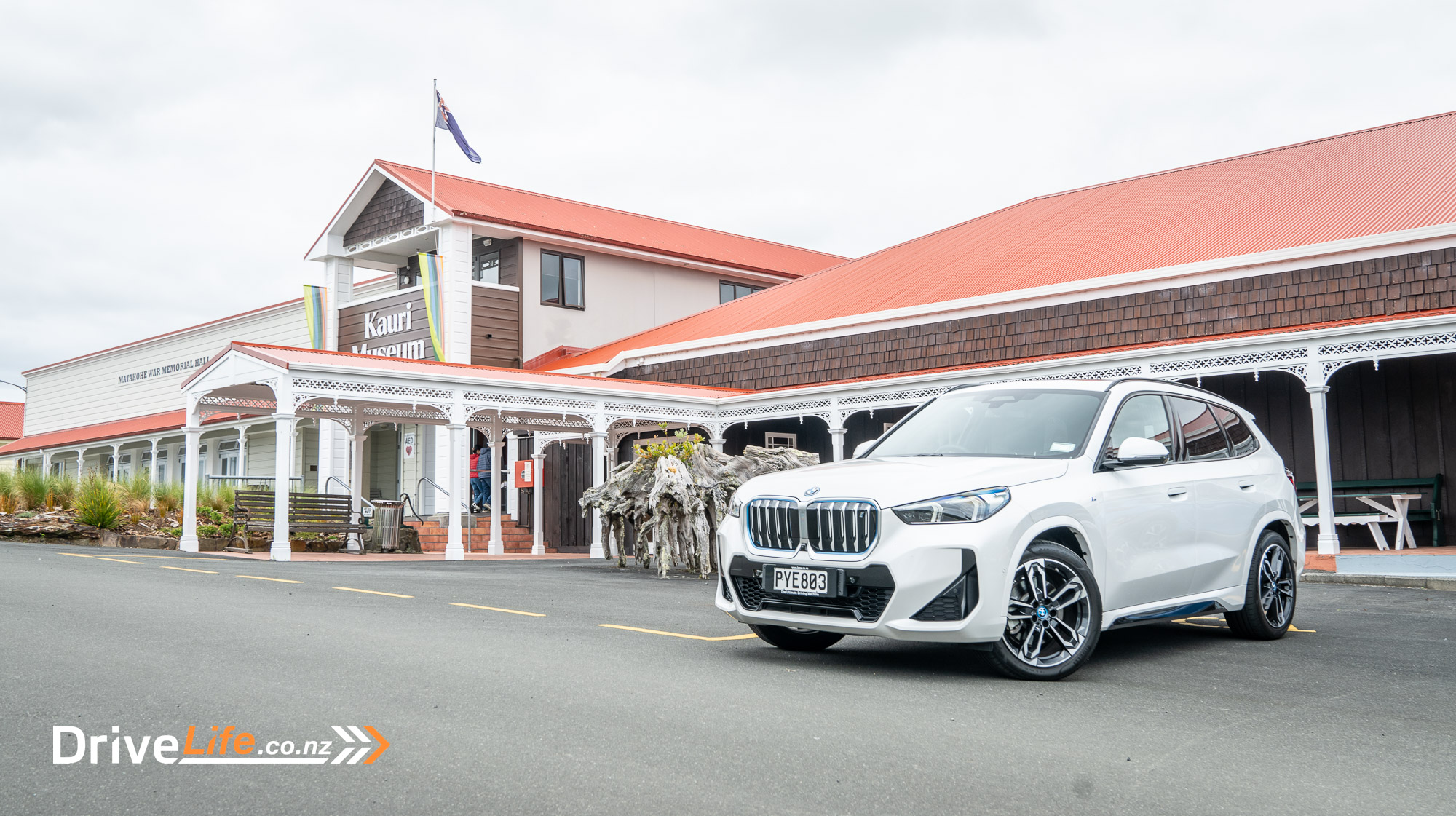
Just under two hours later, we reached our first stop, The Kauri Museum at Matakohe. This place is big, covering 4,500 sqm and is the largest undercover attraction in Northland. The museum celebrates everything to do with kauri and the people of northern New Zealand/Aotearoa, and the museum has stories of the Māori of the North Eastern Kaipara, of European pioneers, of foresters and sawmillers, gum diggers and farmers, and of business people, fishers and the families who have made this area their home. Before we left we also checked out the rose gardens opposite, part of the church grounds also linked to the Museum.
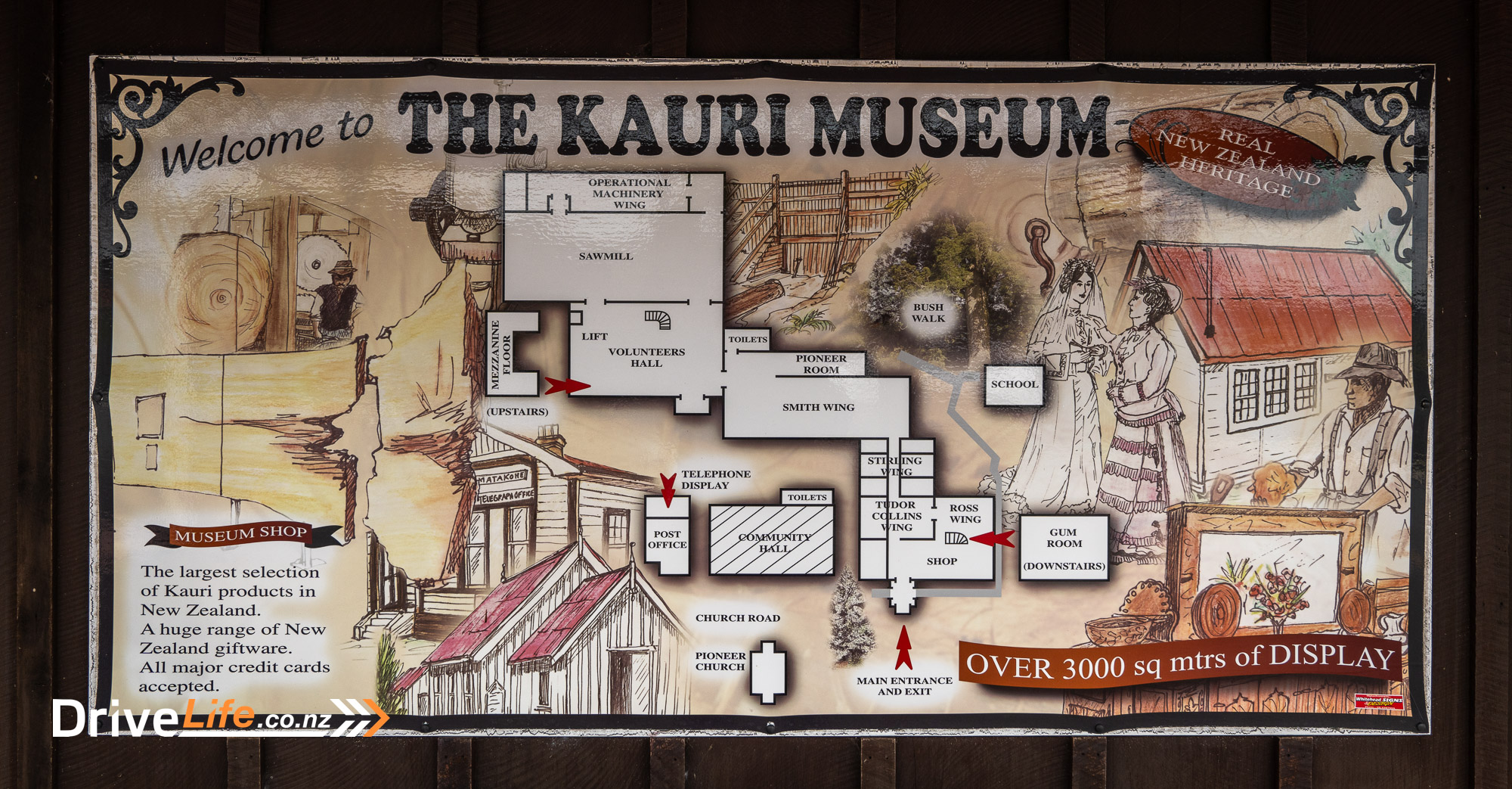
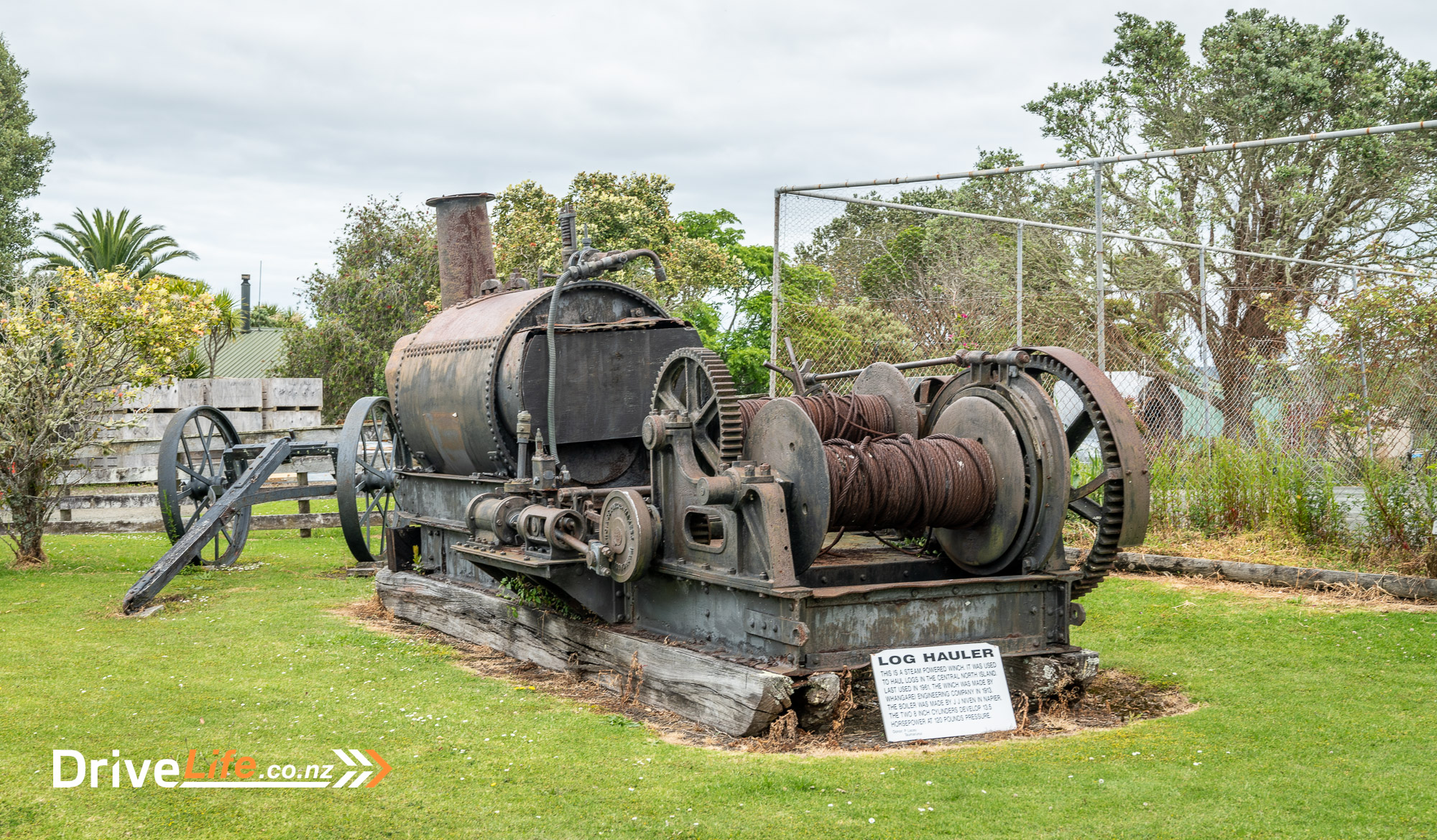
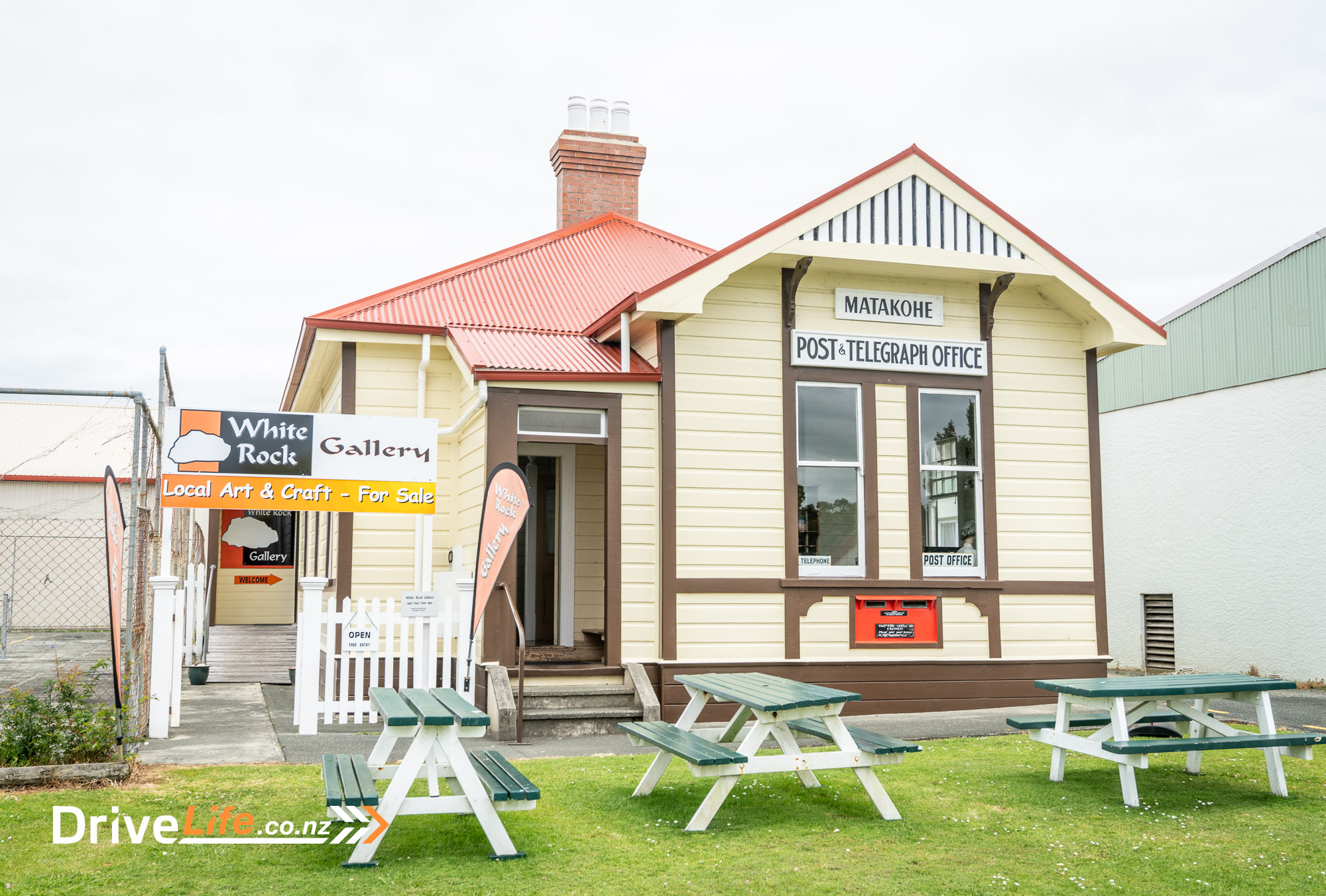
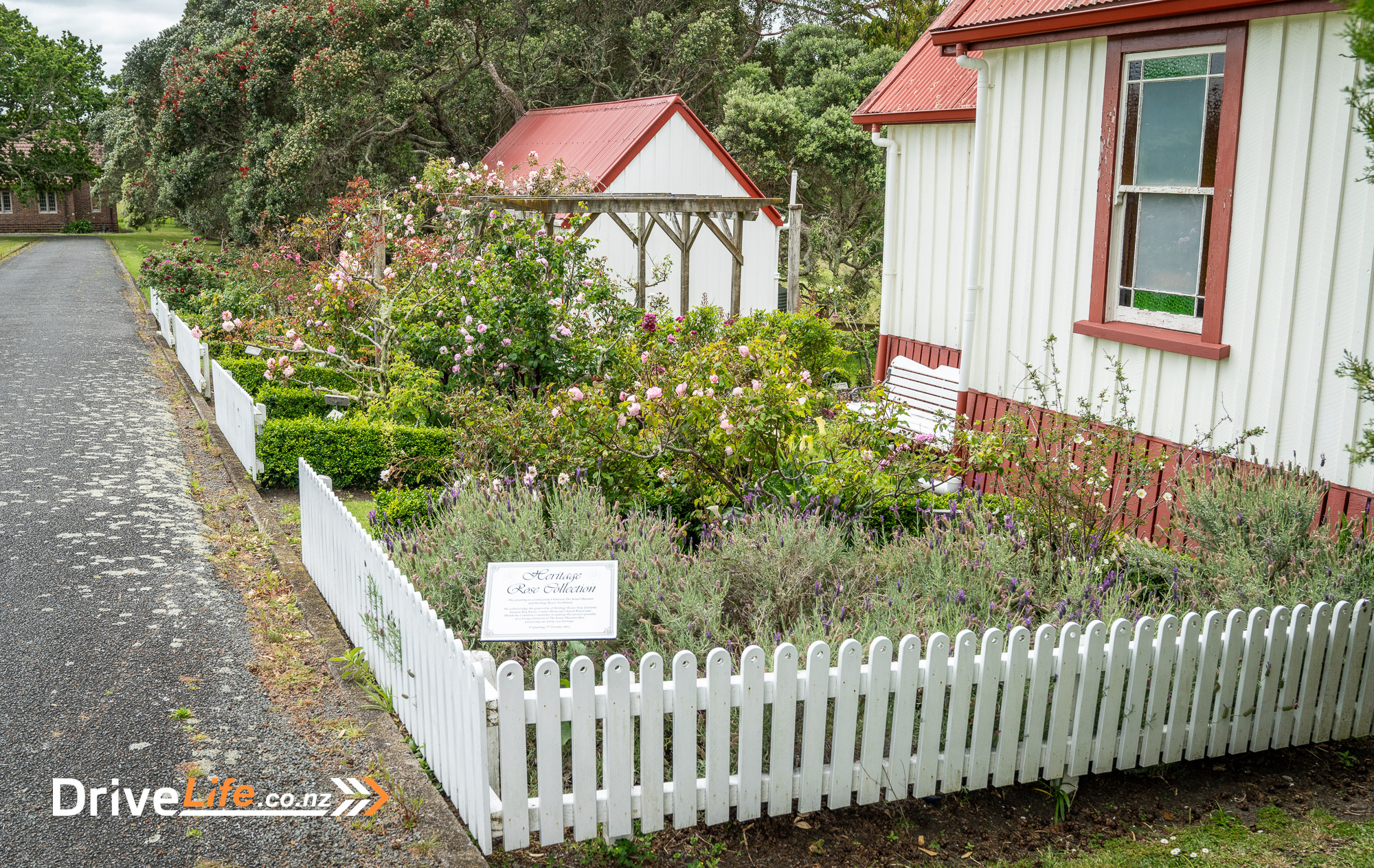
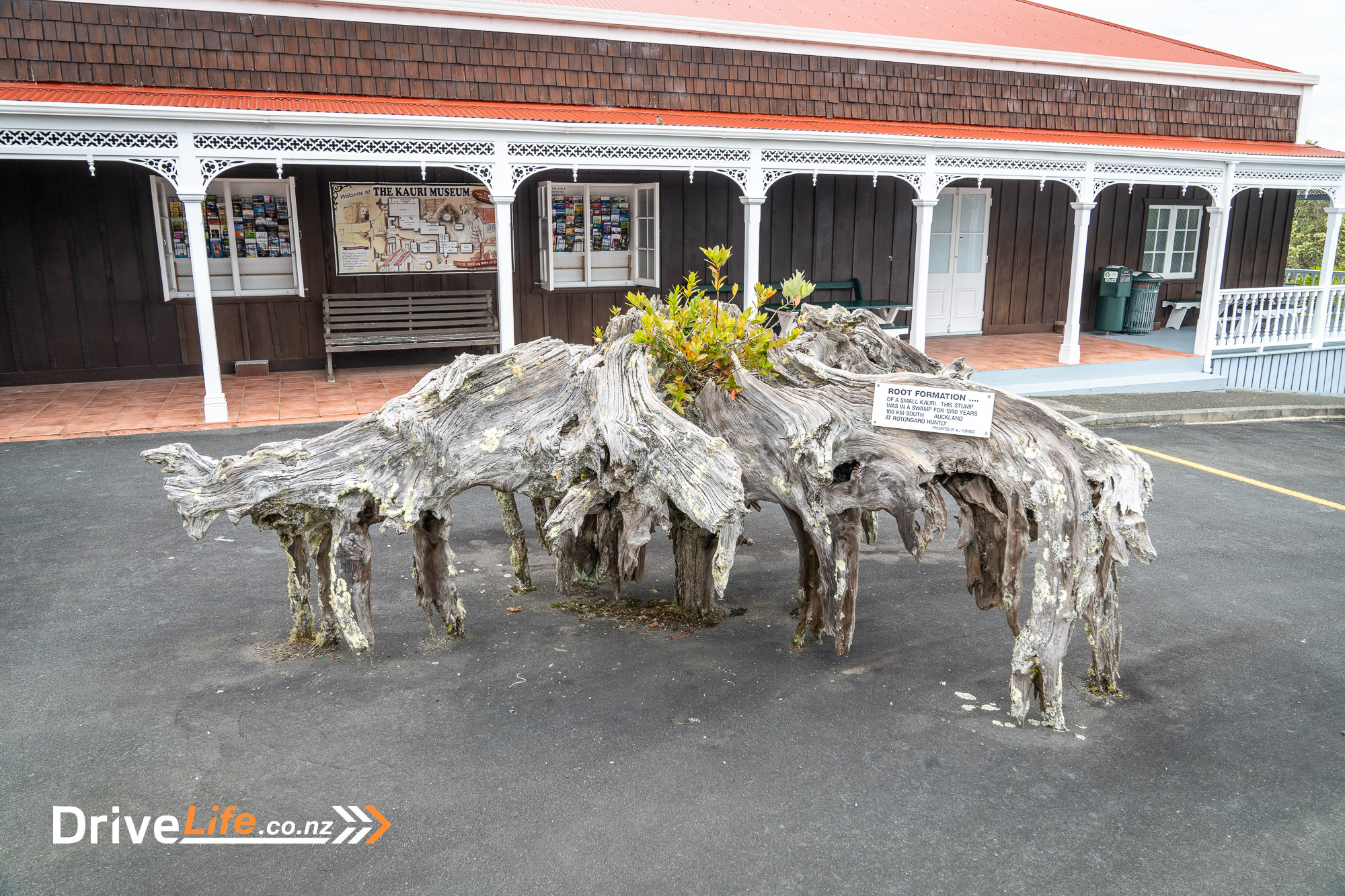
On the road again and our Android Auto map indicated it would be 60 minutes to our next stop, Whangarei Quarry Gardens. The gardens are a volunteer-run nature space in a former quarry with subtropical gardens, and a cafe. It’s a great place to get out and stretch after a bit of driving. The gardens cover a large quarry and there are many walks around the gardens that unlock little treasures along the way. There is a waterfall that feeds the quarry lake at the very back of the gardens.
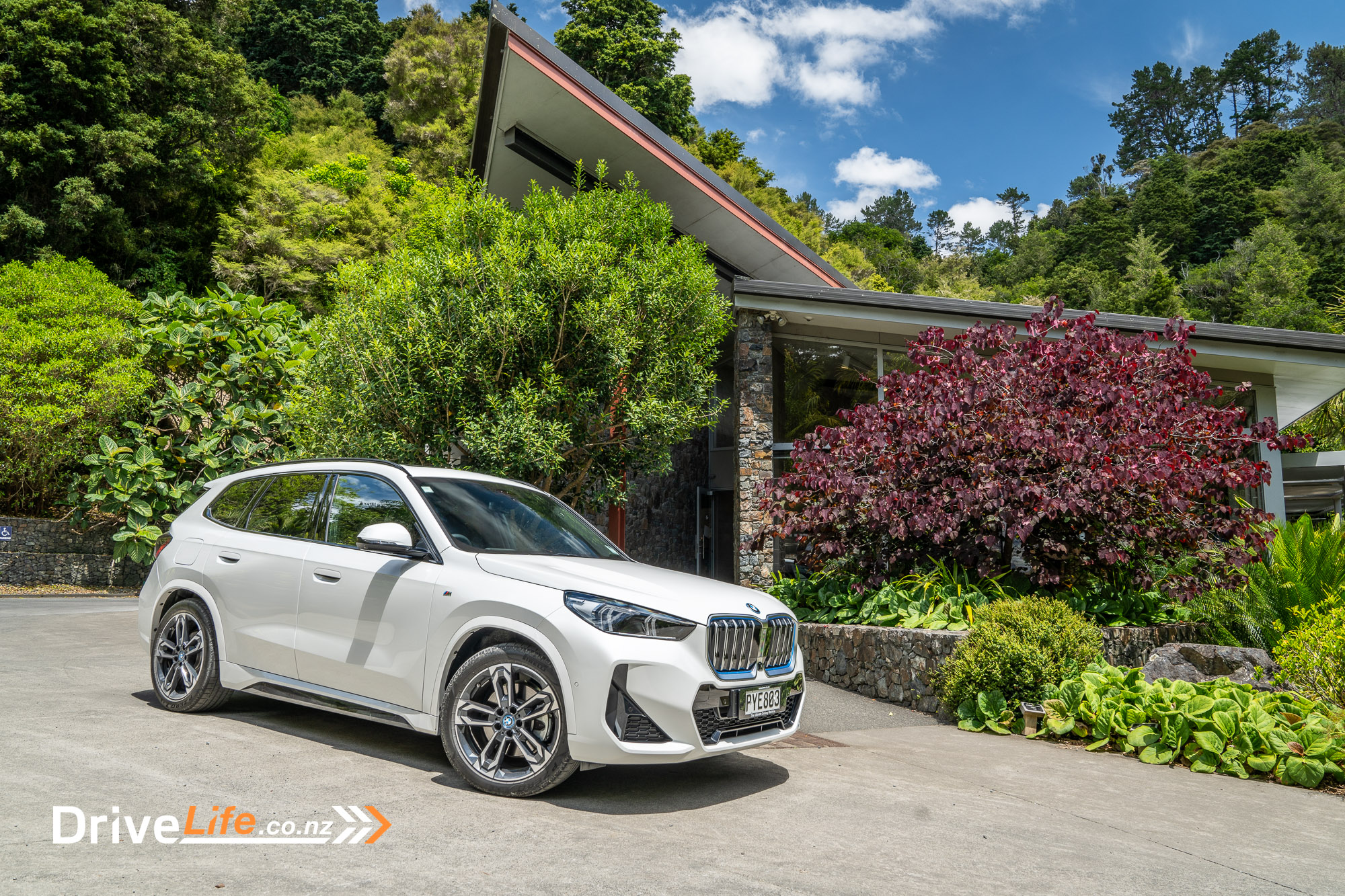
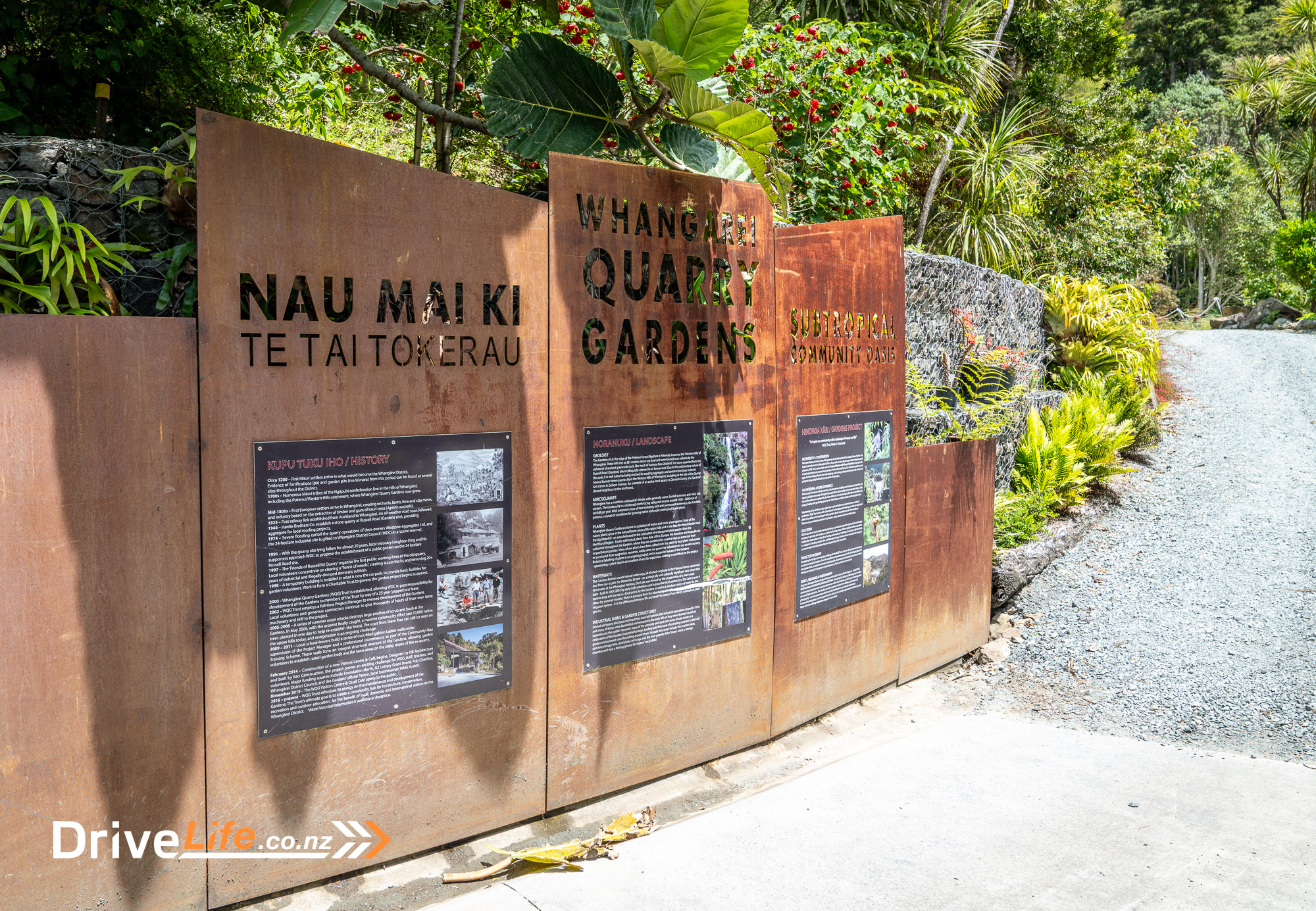
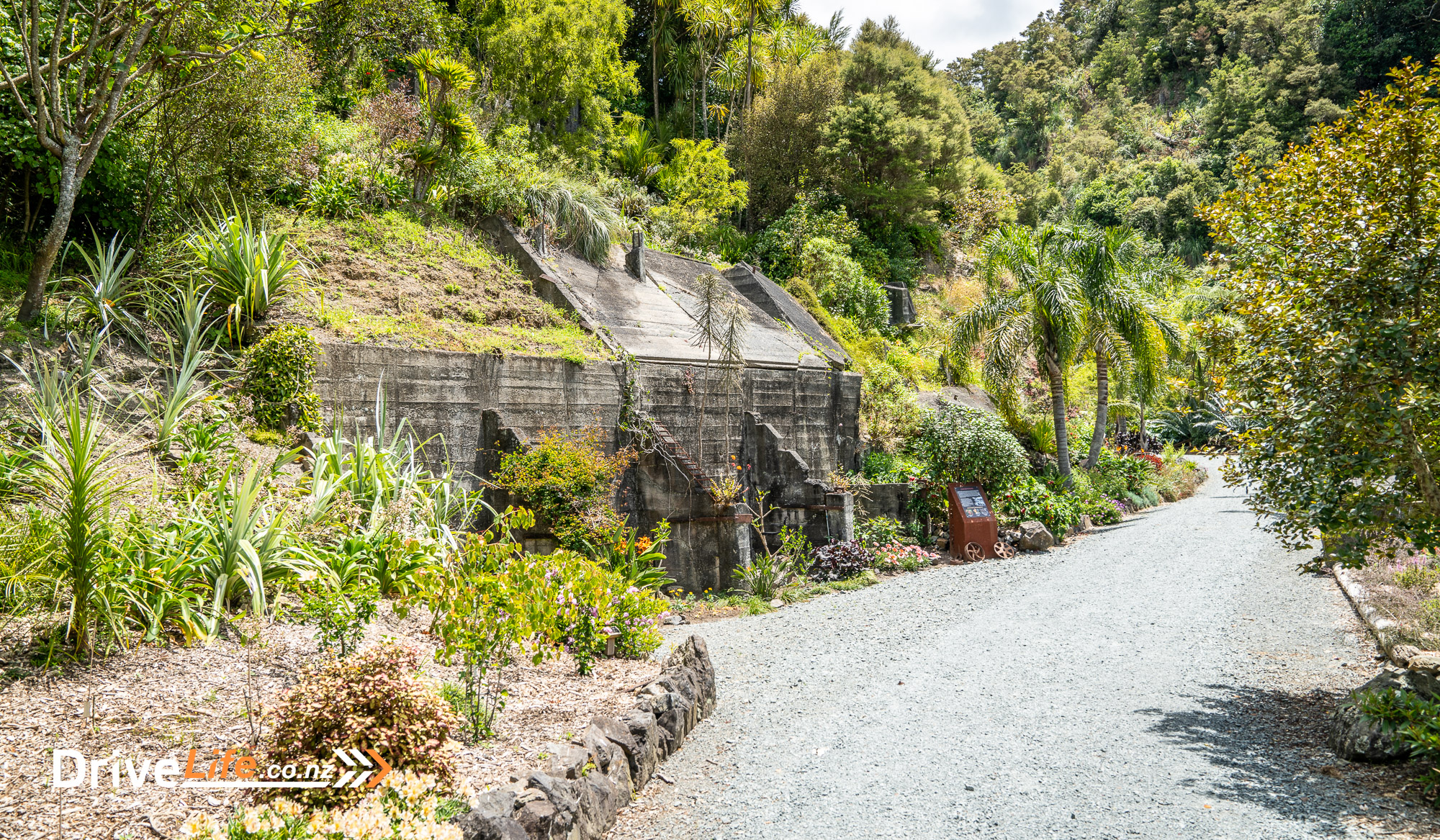
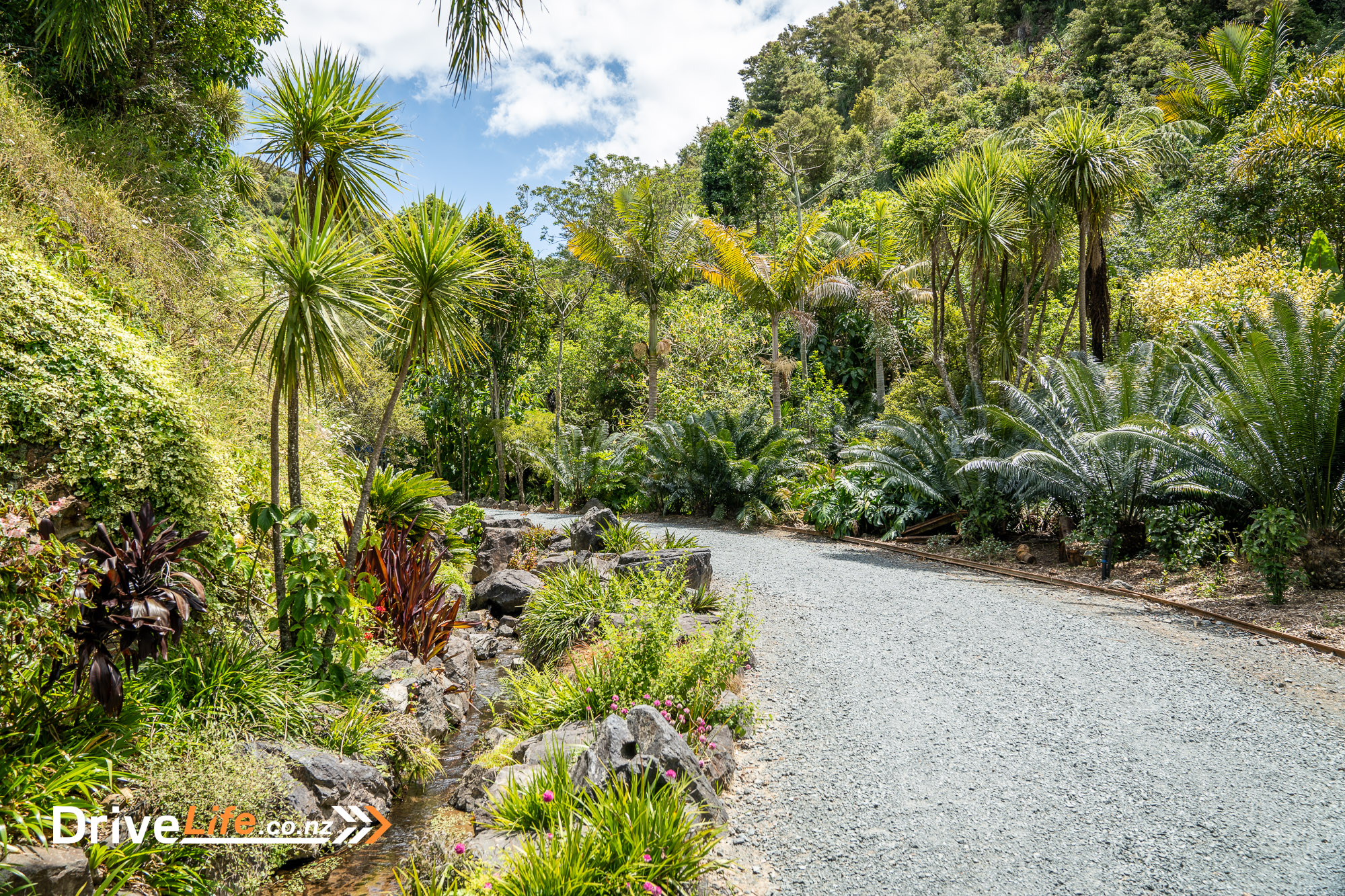
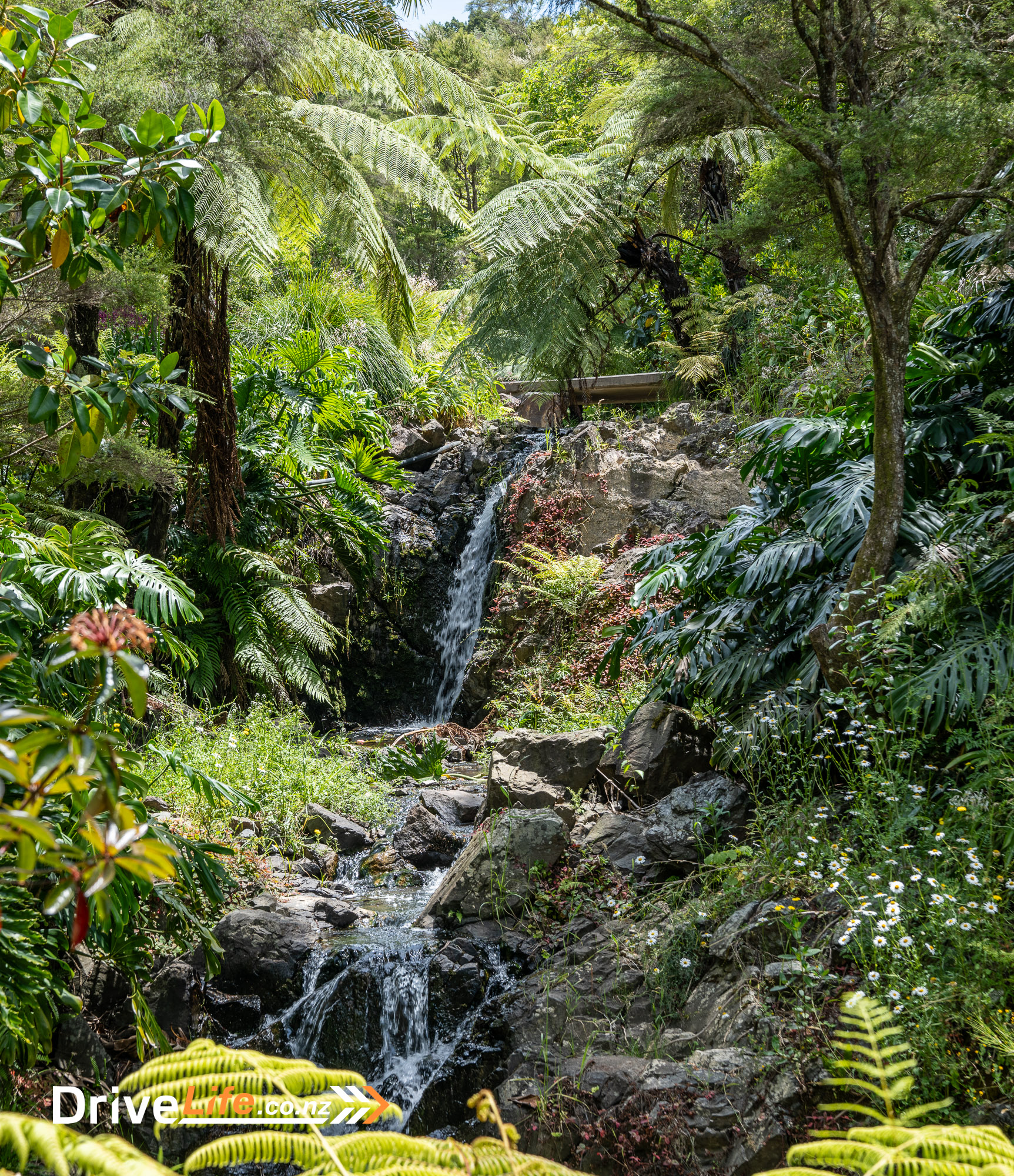
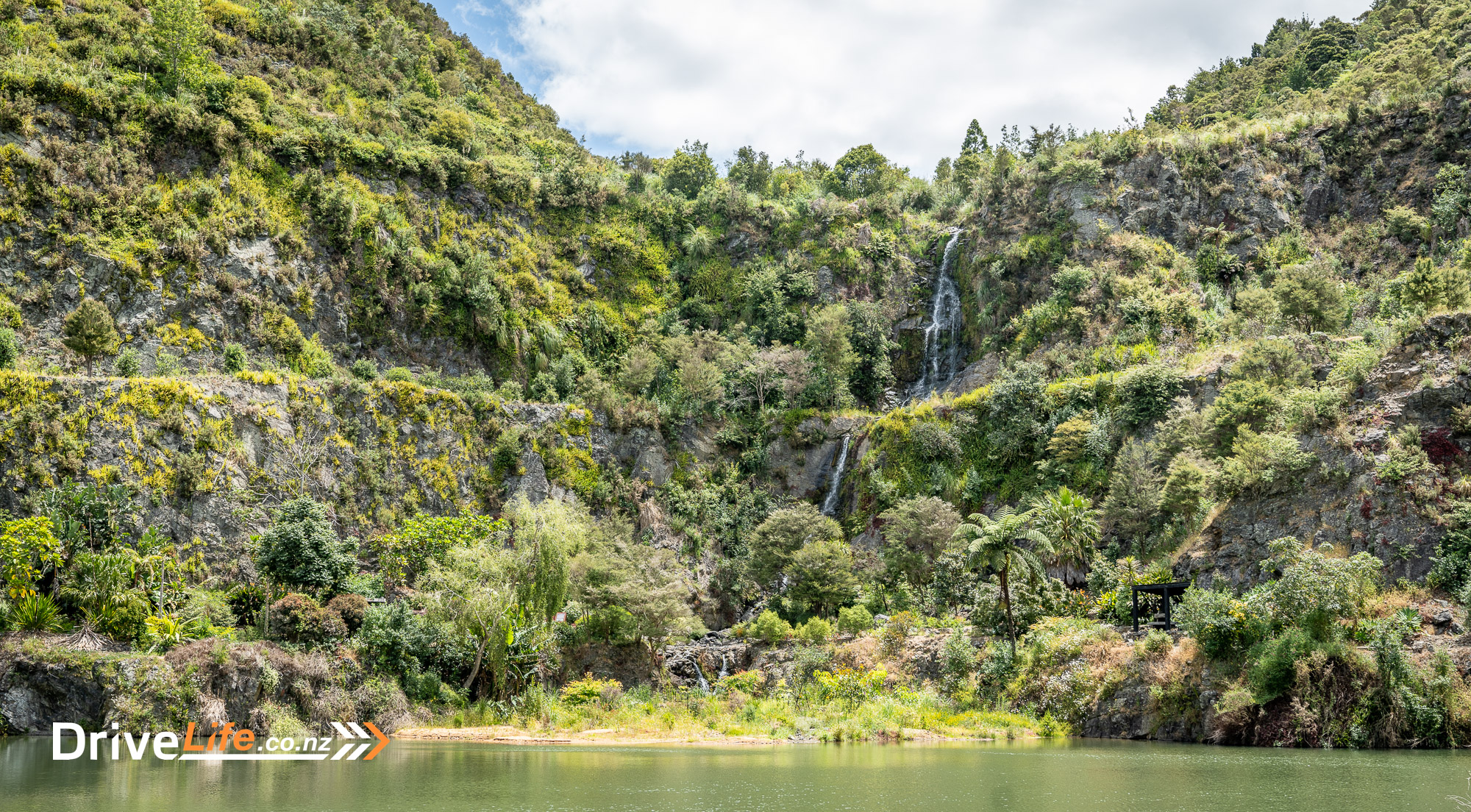
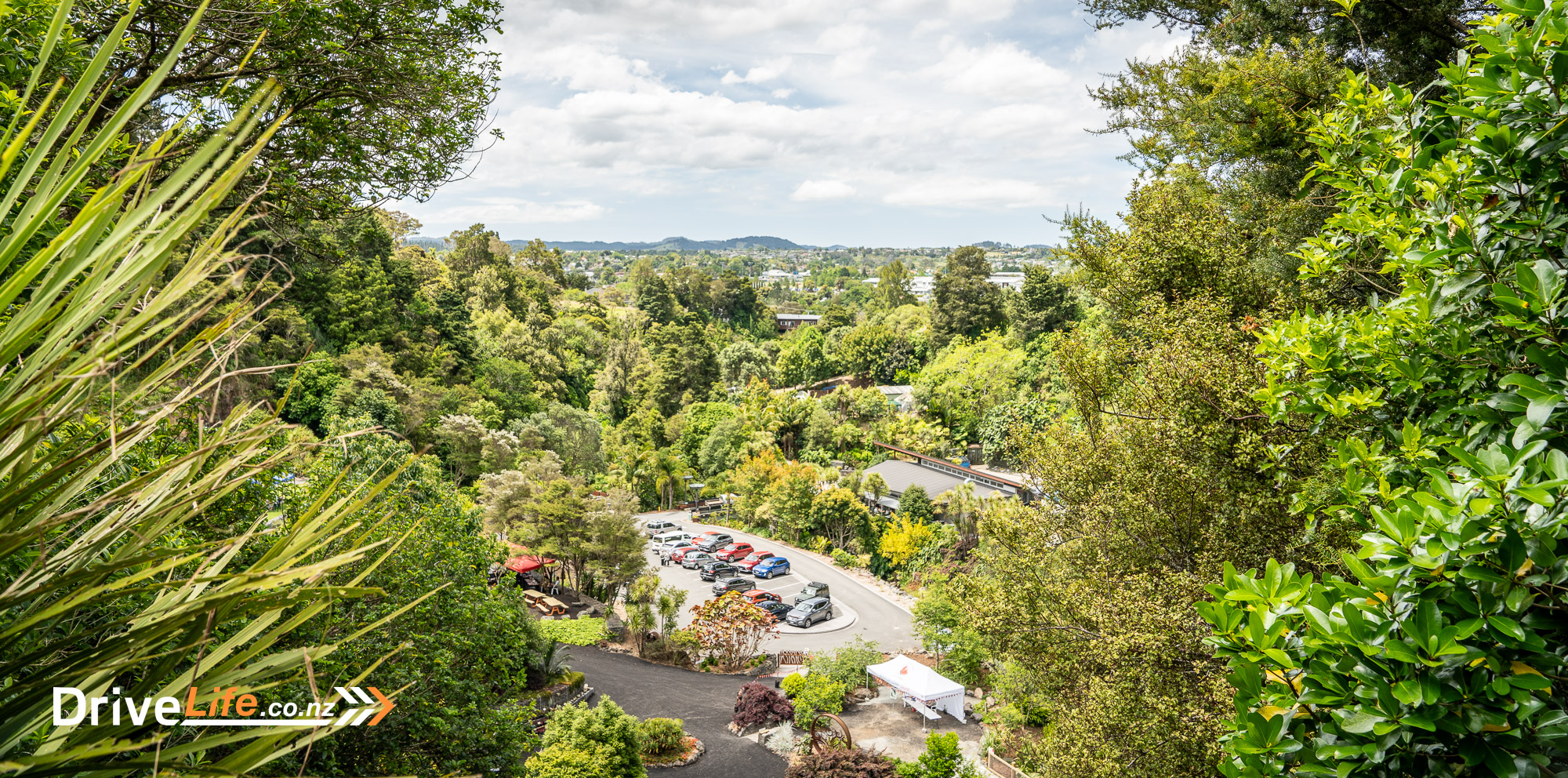
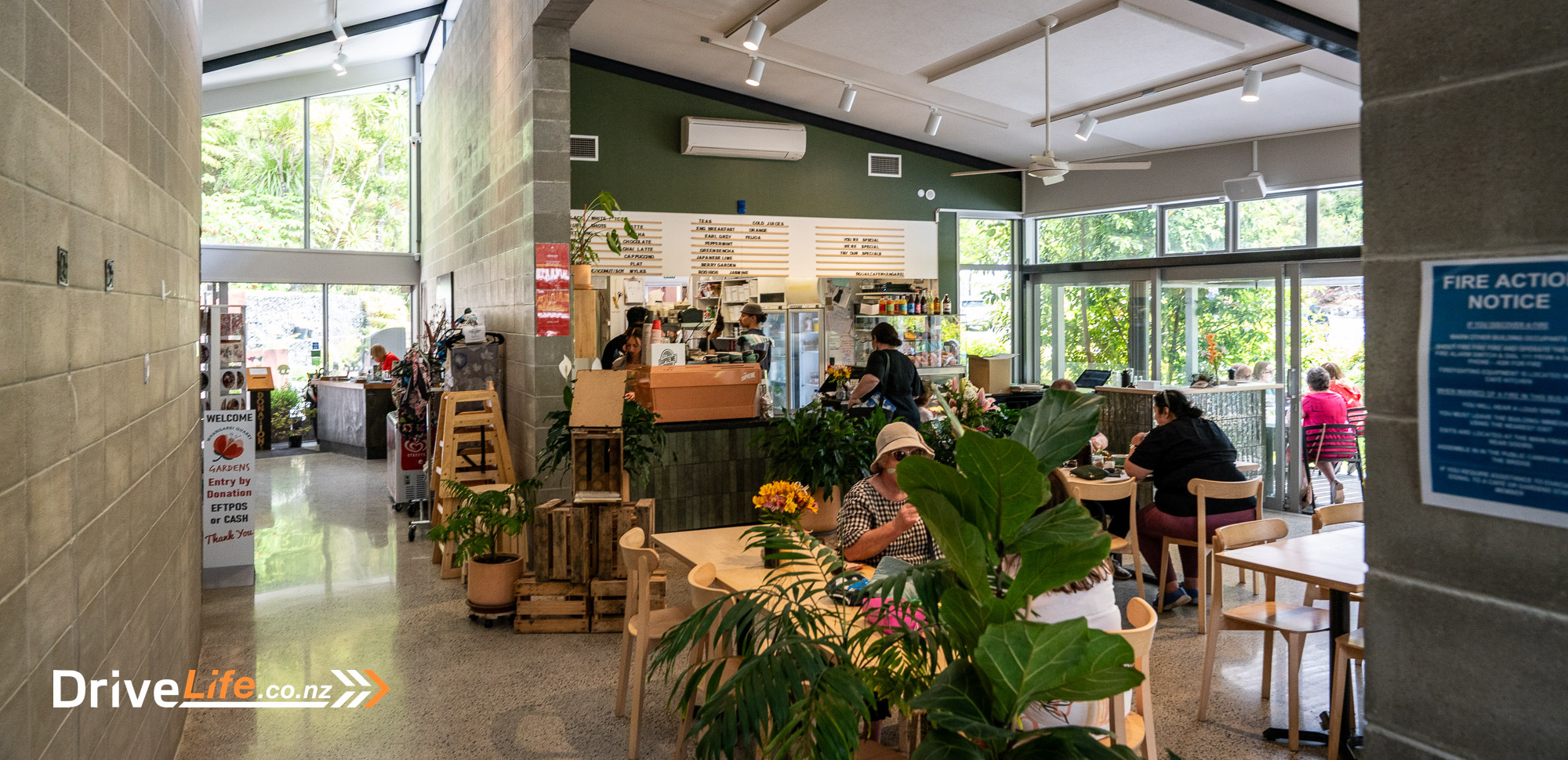
Whangarei has another waterfall too, one that’s much more impressive than the quarry and only 10 minutes away. Whangarei Falls is part of the Hatea River which runs through Whangarei and I have to say that I was not expecting it to be as impressive as it was. The car park near the falls is a 10-15 minute walk from the top of the falls to the base. This is where the real magic is, it feels like you’re far away on a tropical island, not in the middle of the city. It is a stunning location and one you should not miss if you’re passing through.
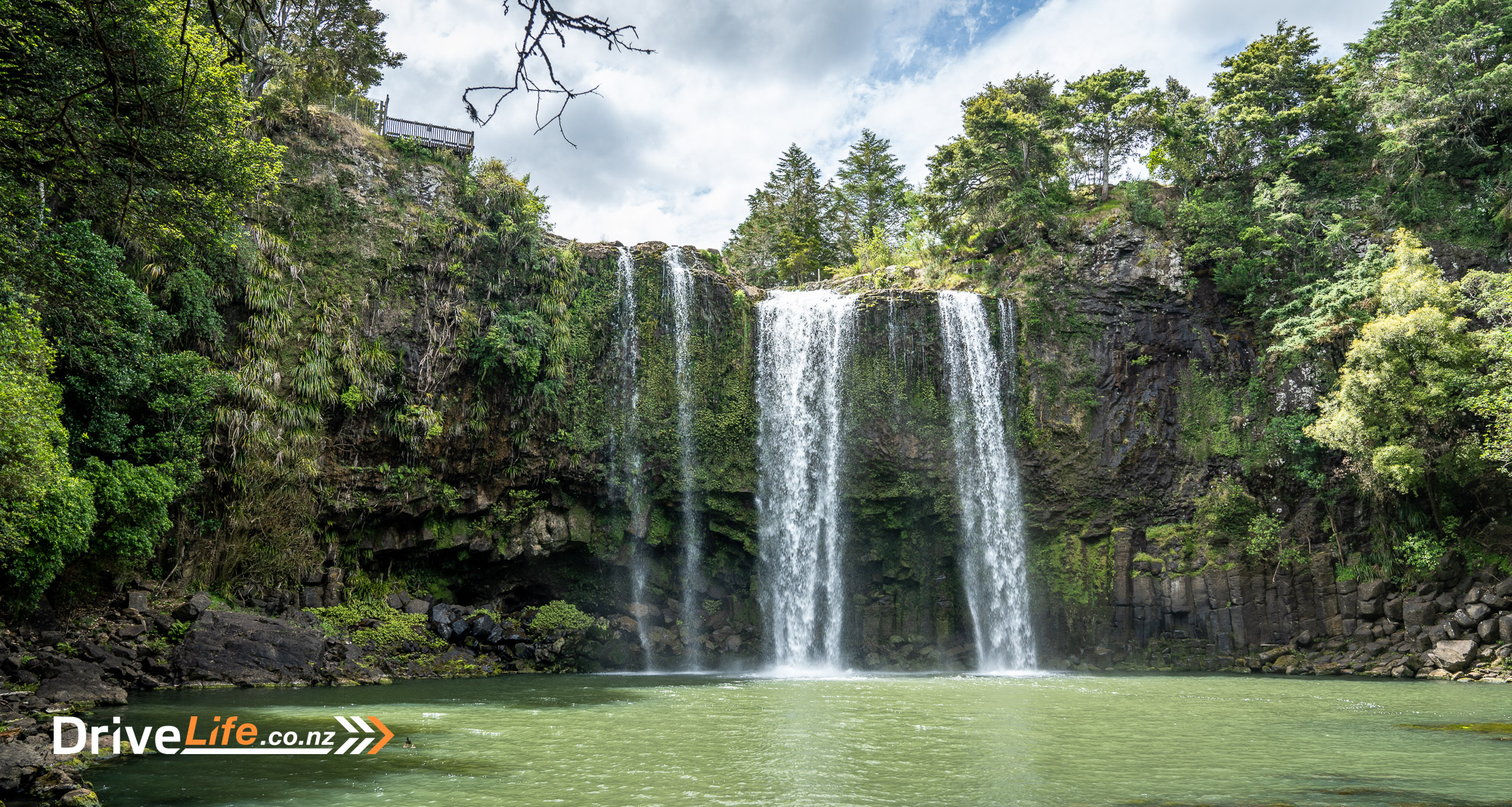
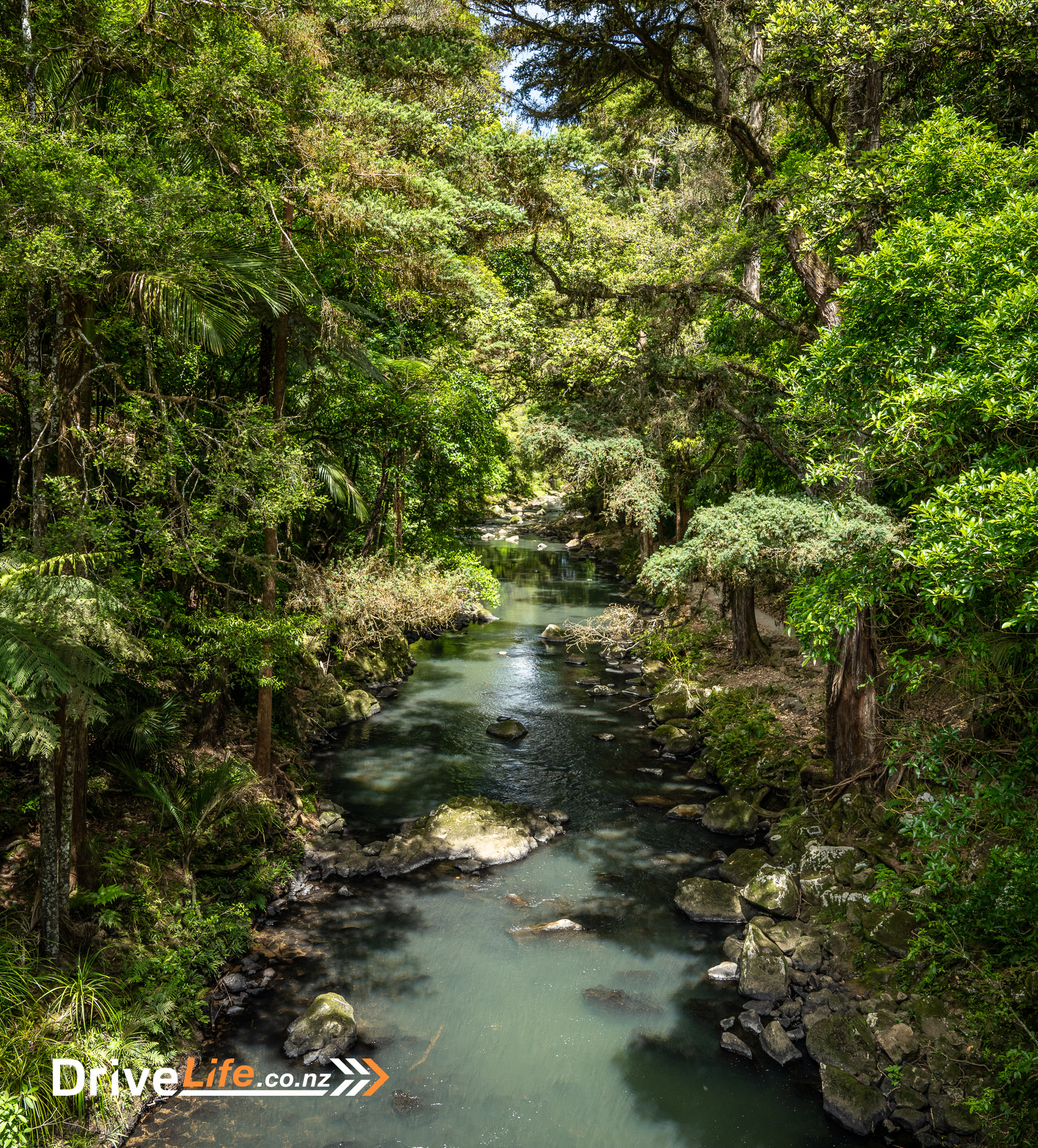
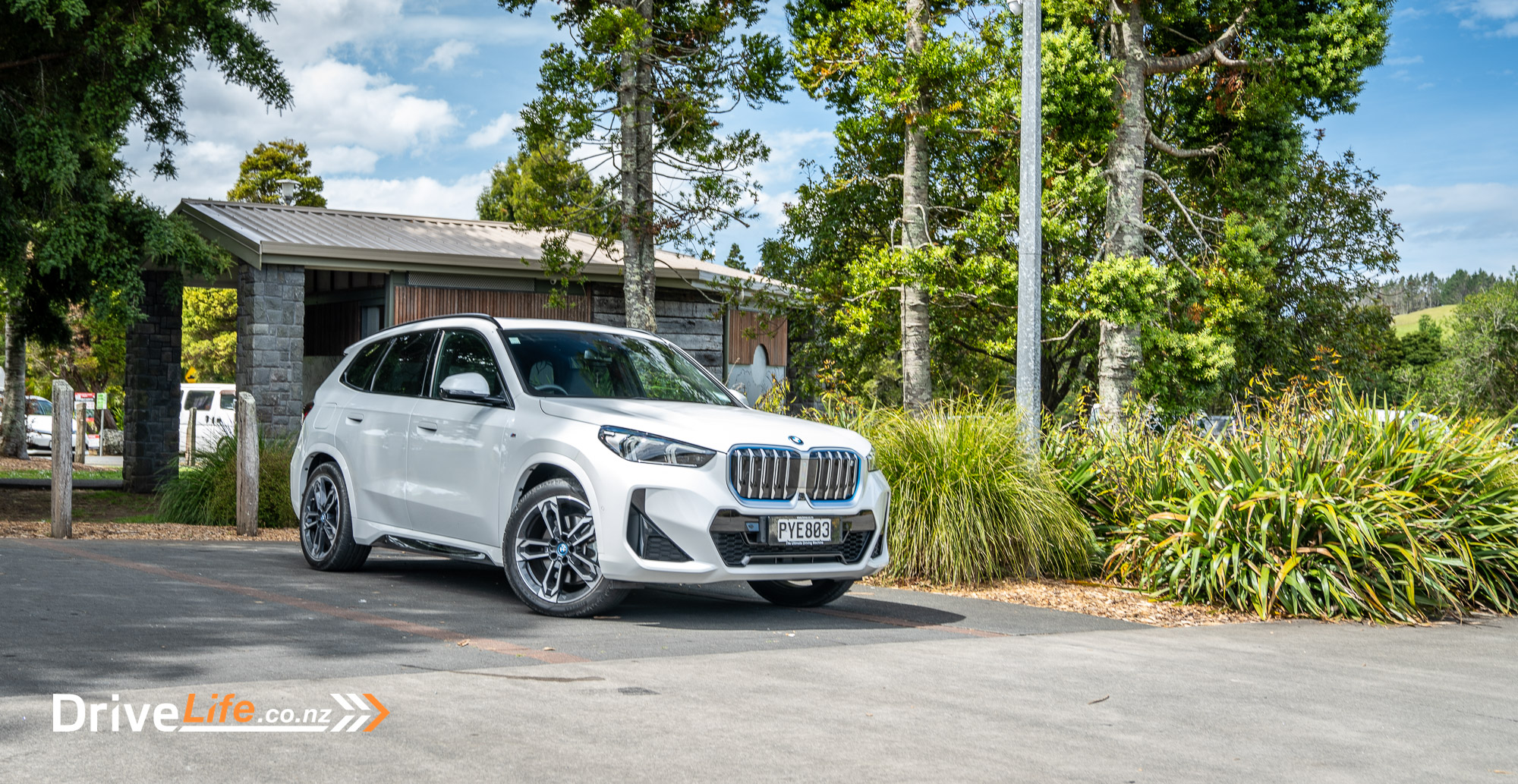
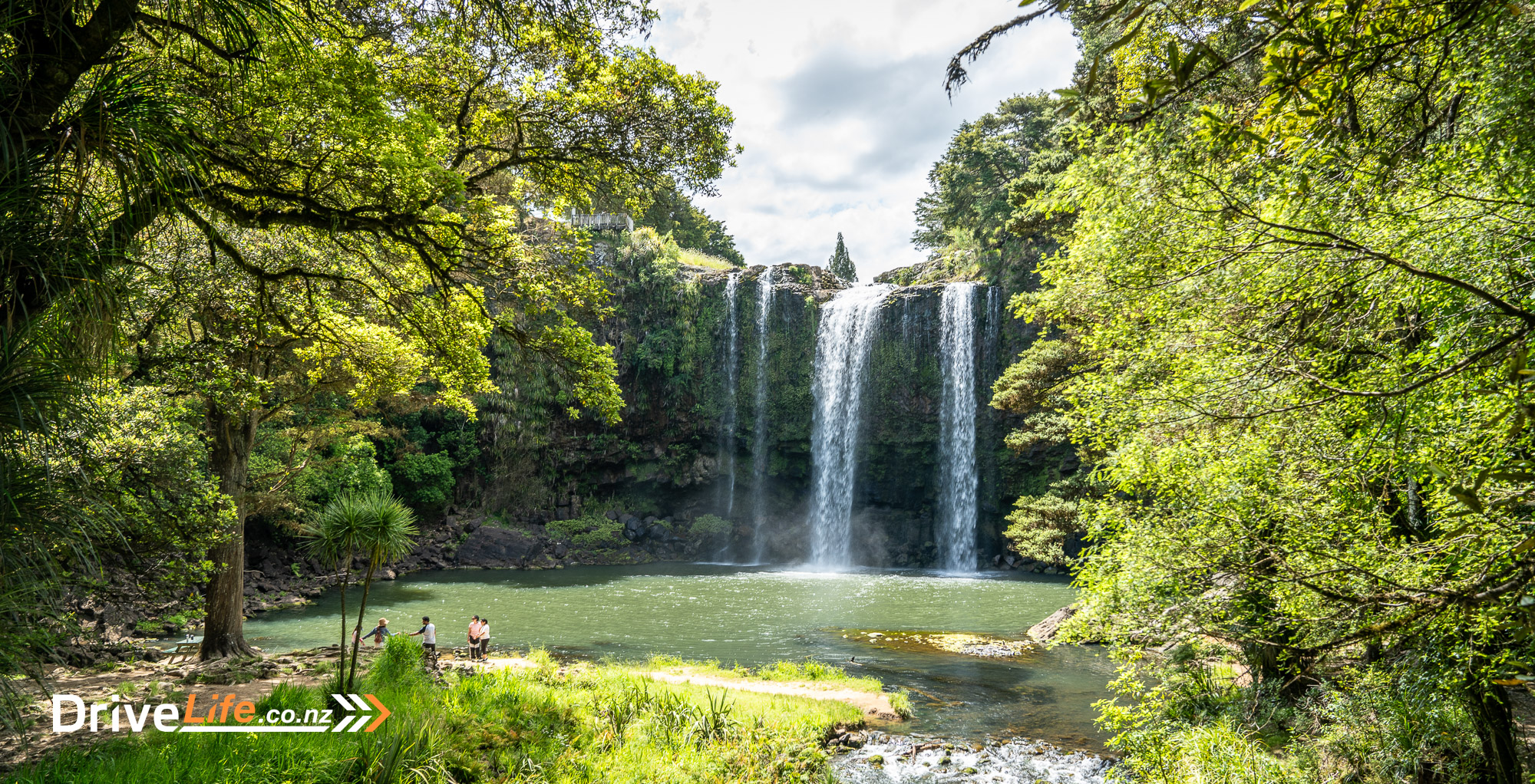
Before we set off, we did a quick top-up charge at Paramount Plaza in Whangarei while having a bite to eat for lunch. Electric vehicle use benefits greatly from the short and often top-up mentality. You do not have to wait until you need a big charge, small top-ups here and there, especially if you plan to stop to eat, are a great way to top up before heading off on the road again.
Back on the road and it was another hour to get to Paihia Beach Resort & Spa in the seaside town of Paihia, in the Bay of Islands. This would be base camp for the weekend, right on the waterfront and about a 10-minute walk from the central township. Our room had a great view, overlooking the inlet. The background noise of the waves lapping at the beach was very therapeutic.
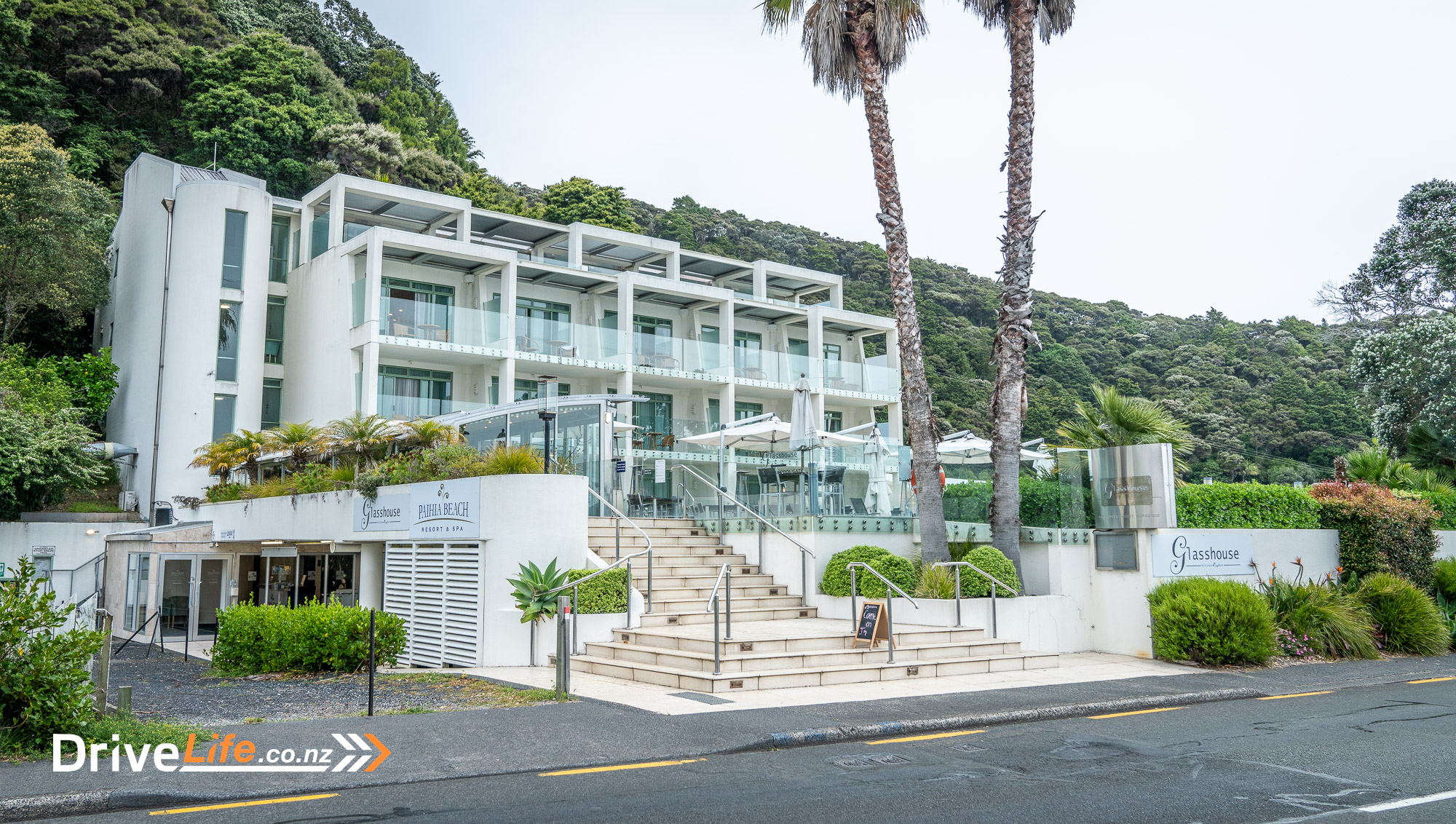
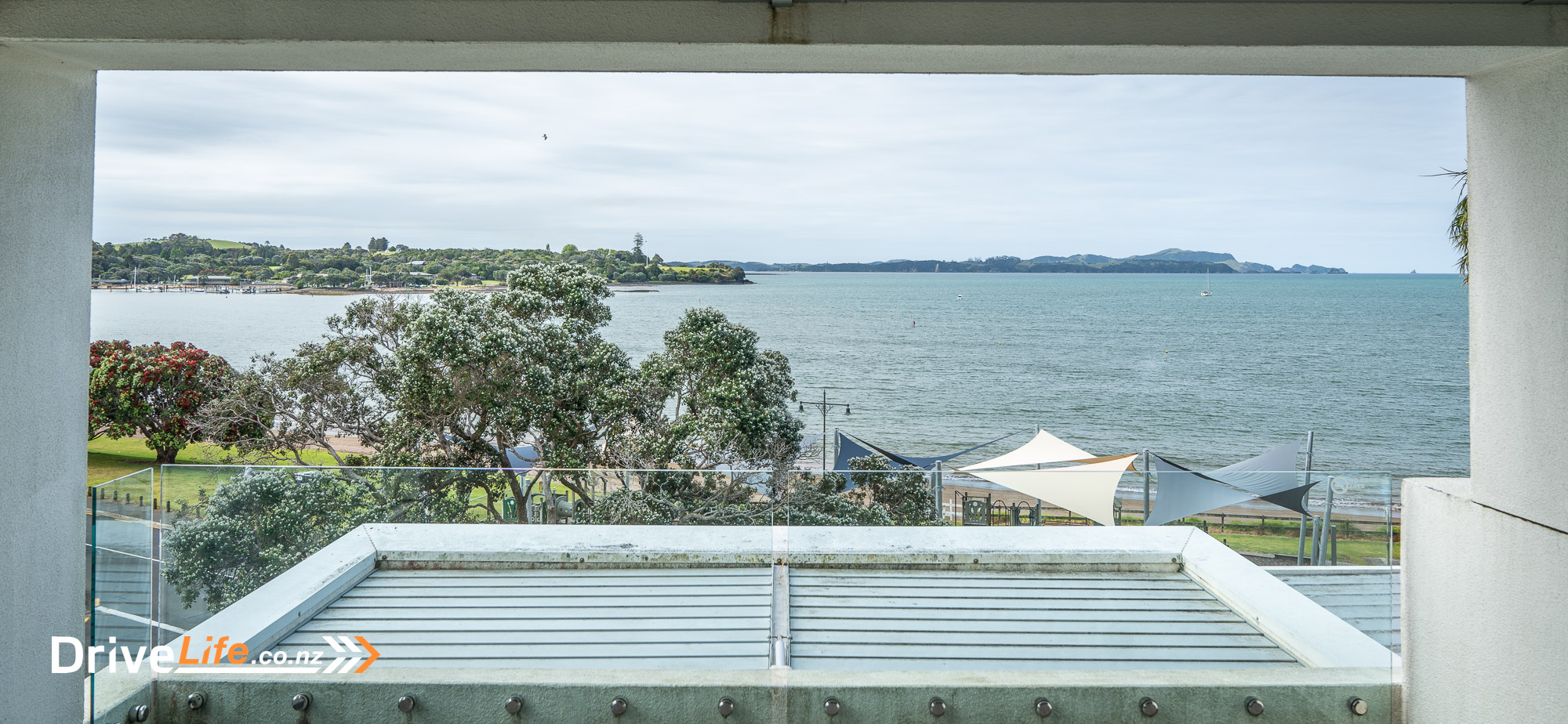
At the end of day one, the iX1 had travelled 276 km, and with a quick charge in between the battery was 60% charged, ready for day two.
Day 2 – Saturday – Cape Reinga / Giant Dunes / Ninety Mile Beach
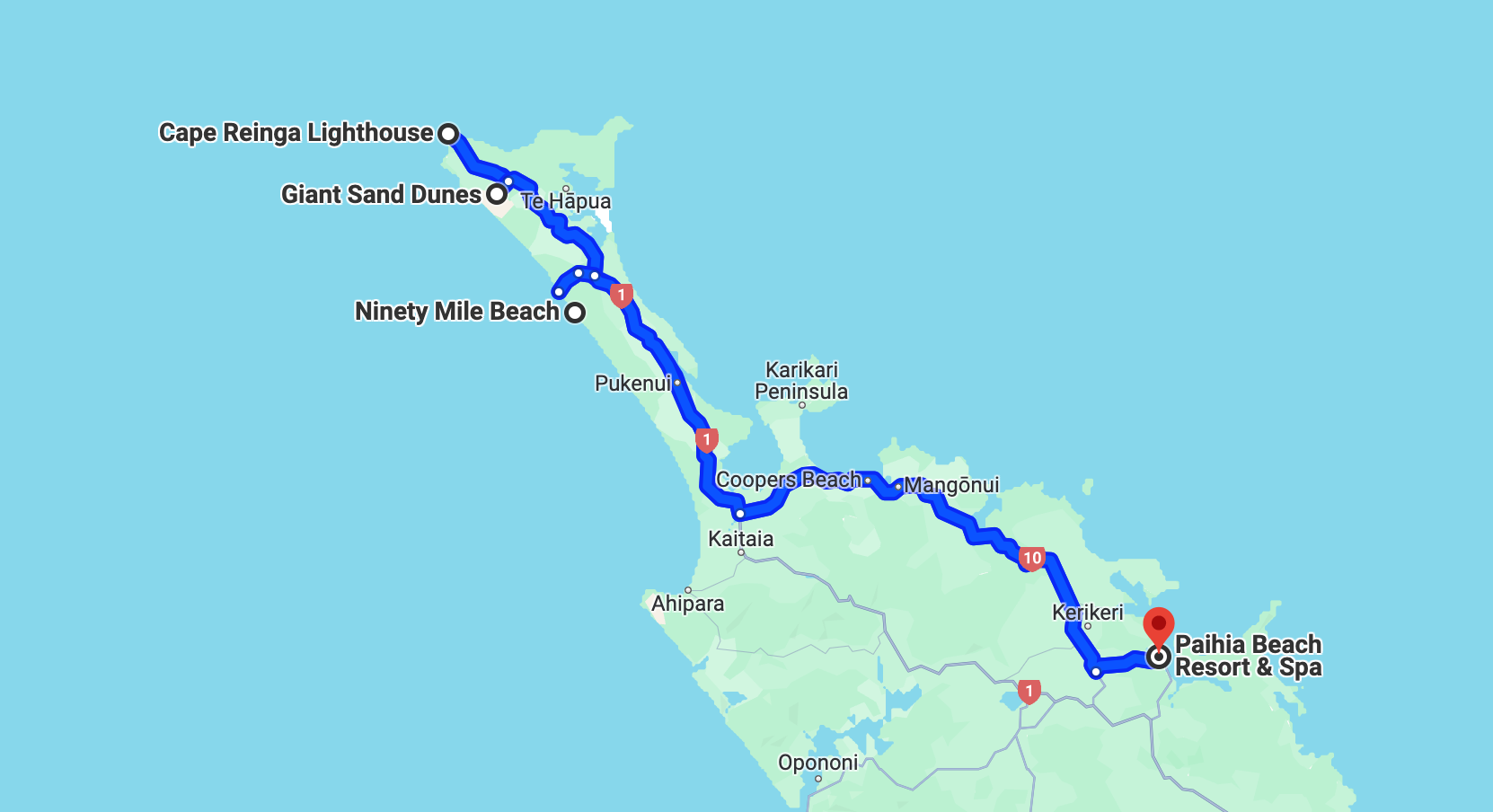
The next morning, we got up early as we knew it would be a big day. The sun was already up, which was a great sign, as we were heading to the very top of the country: Cape Reinga Lighthouse. Unfortunately, the hotel did not have any charging facilities, this meant an early start on State Highway 10 with a stop at Coopers Beach for a morning coffee for us and a morning charge for the iX1. After Coopers Beach, the roads looked no different to anywhere in New Zealand, that is until you reached Awanui, where we rejoined SH1 with a very large and clear sign: this way to the top of New Zealand. And from this point on, the scenery starts to change a lot, as the road sweeps through some of the most beautiful parts of the country.

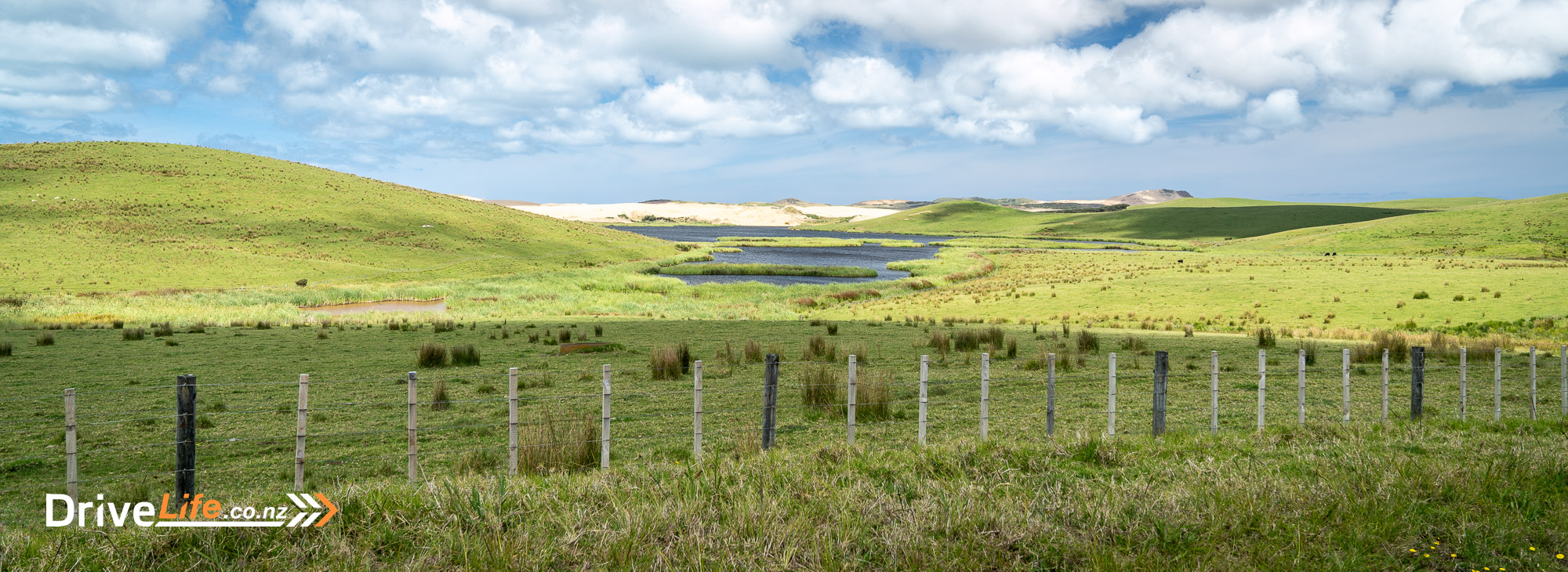
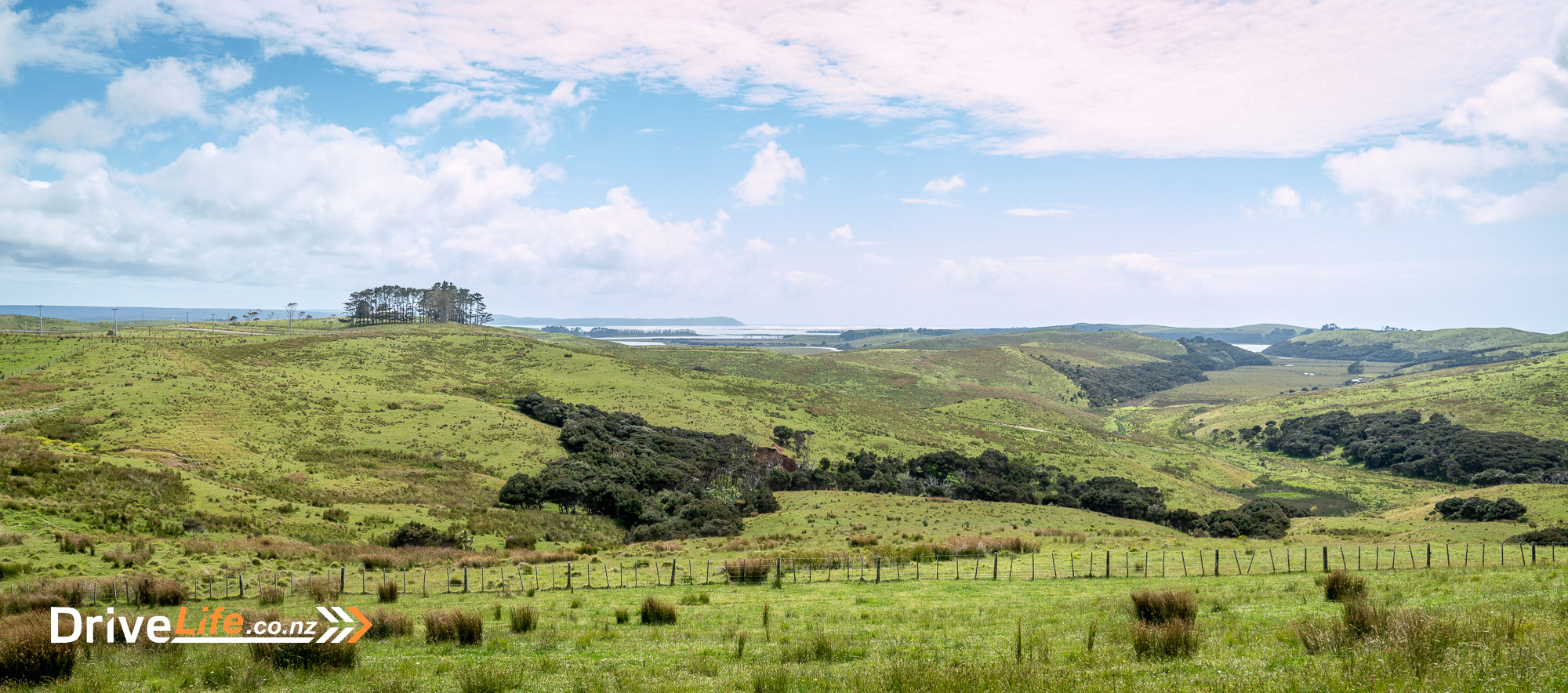
The one thing that I kept seeing and didn’t at first know what it was, were the giant beige hills in the distance right off to the coast. It clicked later, but these were giant sand dunes, which covered large areas of either coastline as we continued to head north. Along this road, there were a few spots where you could see the ocean on both sides, as the land narrowed. The last half hour of the road to the lighthouse is amazing, you will find it hard not to stop and get out just to take it all in.

After the amazing views, we reached the end of the road, which had a large car park. From here we had to walk the last bit to Cape Reinga Lighthouse. The area around the lighthouse is a Department of Conservation area, and it takes about 15 minutes to walk to the lighthouse, down a gentle grade path. The lighthouse is owned and operated by Maritime New Zealand and has become a bit of a New Zealand icon and a popular tourist destination – even though the lighthouse itself is not open to the public. The lighthouse was finished in 1941 and is still working to this day. The tower itself is 10 metres high and 165 metres above sea level. The light flashes every 12 seconds and can be seen up to 35 kilometres away. The view from the lighthouse is breathtaking, and realising that you’re at the end of the country with two oceans on either side (the Tasman Sea and Pacific Ocean) is awe-inspiring. There are many walks around the lighthouse, from the easy 10-30-minute walk up to some day trips down the coastline.
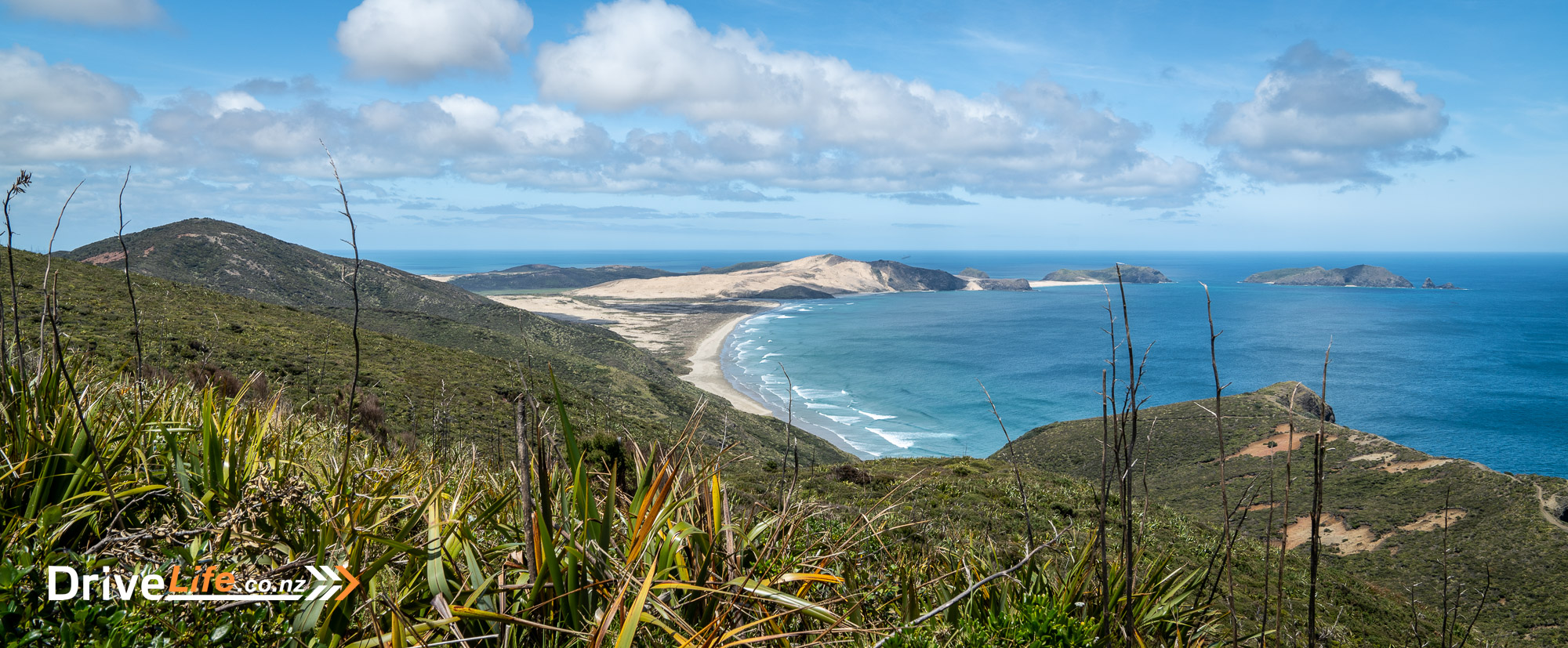
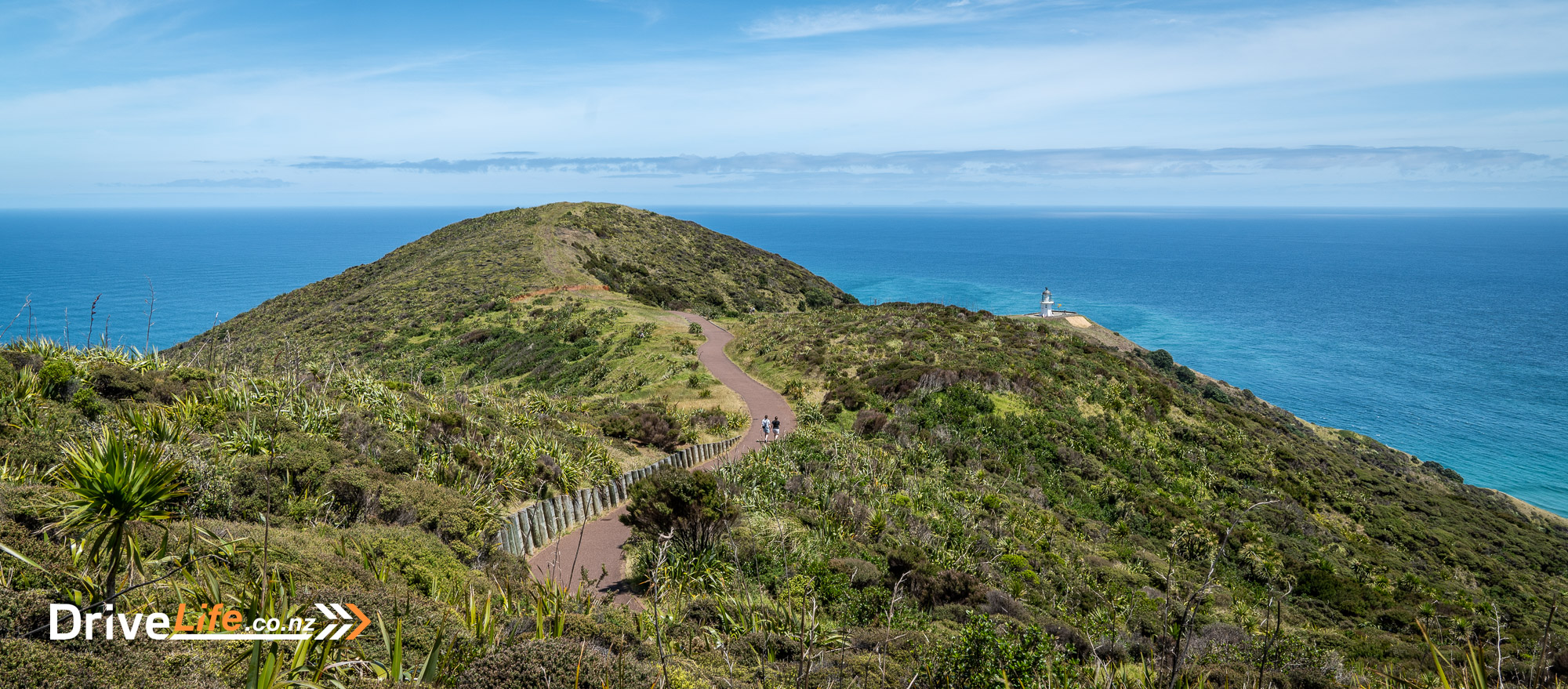
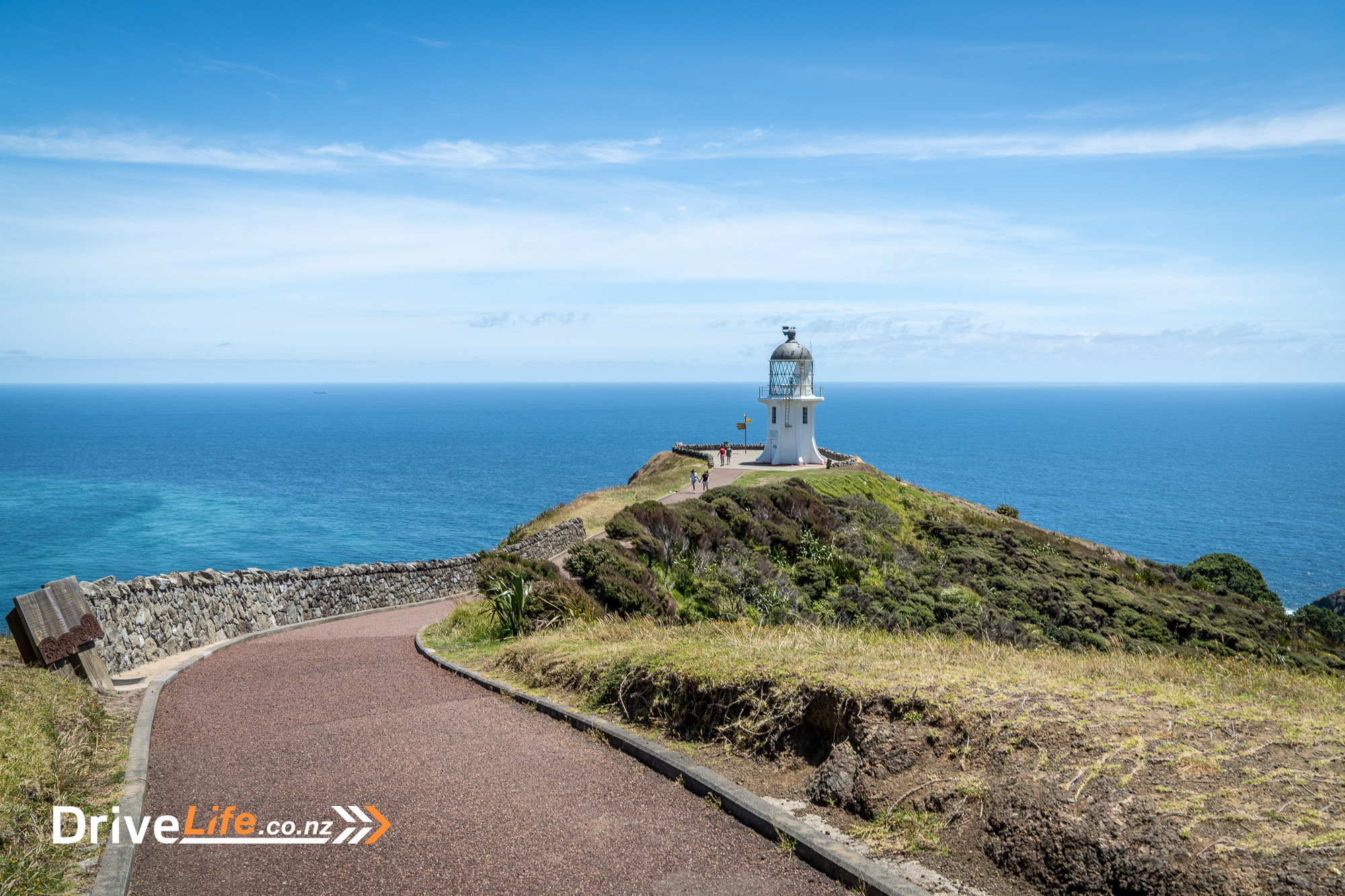
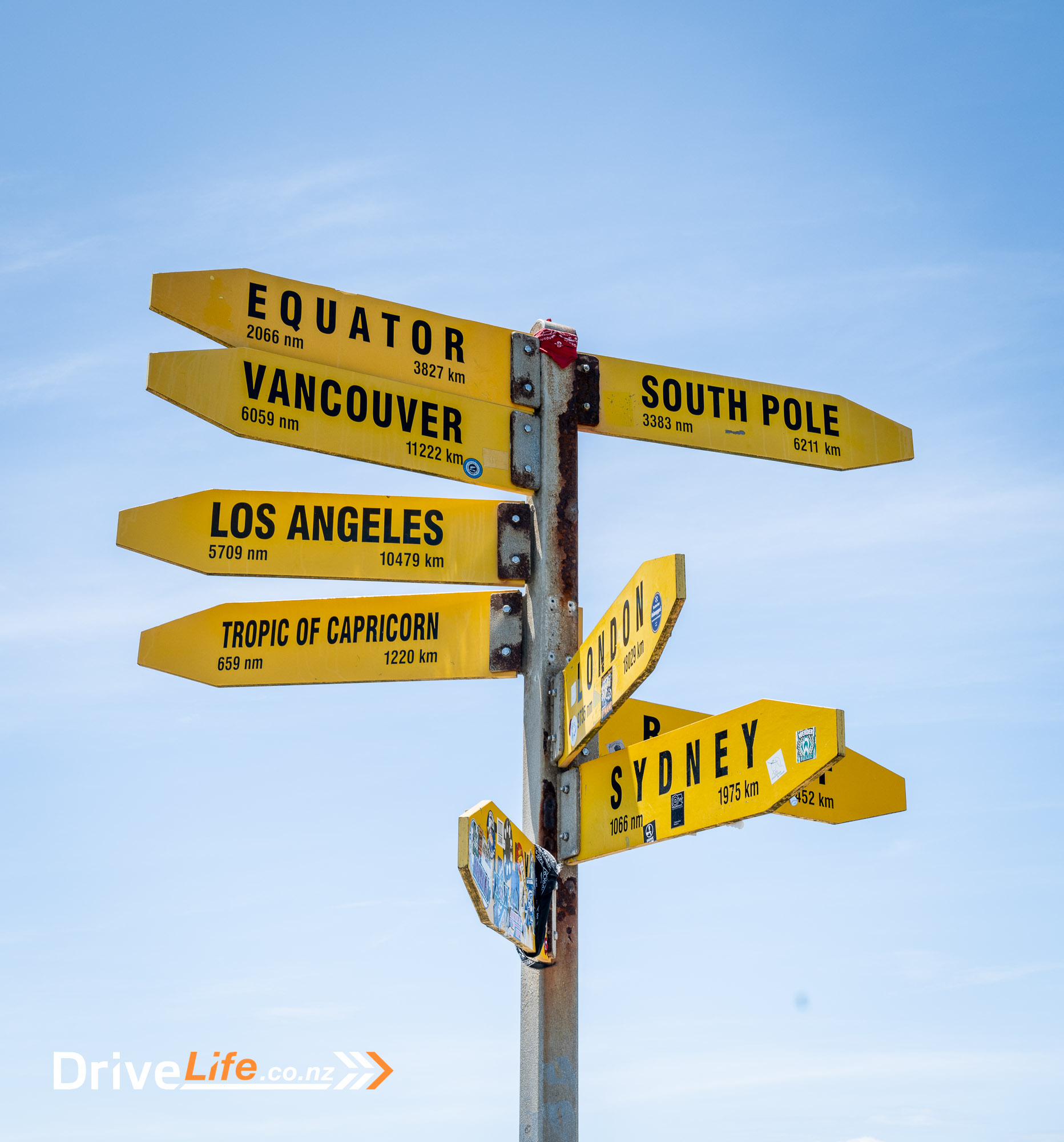
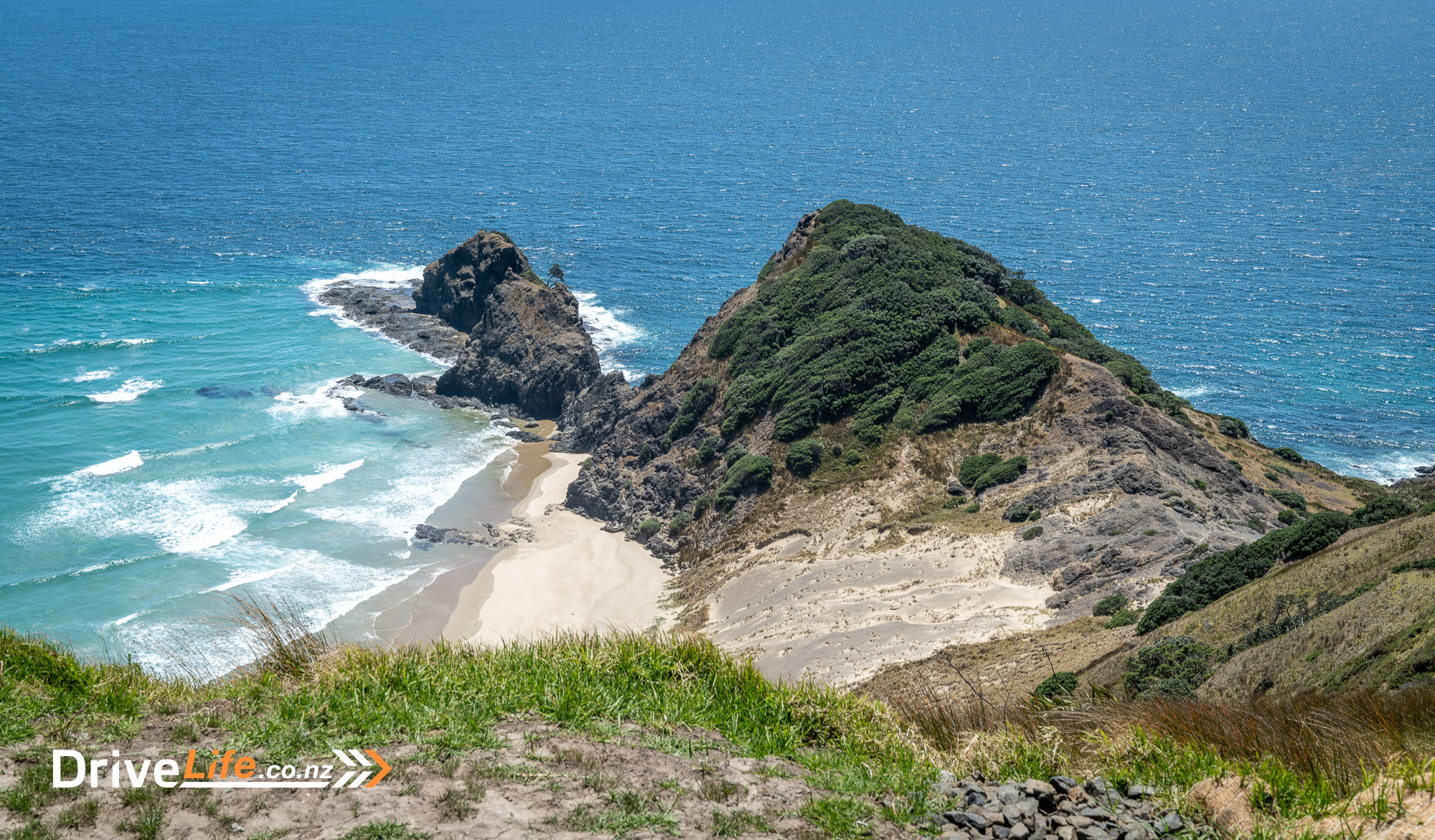
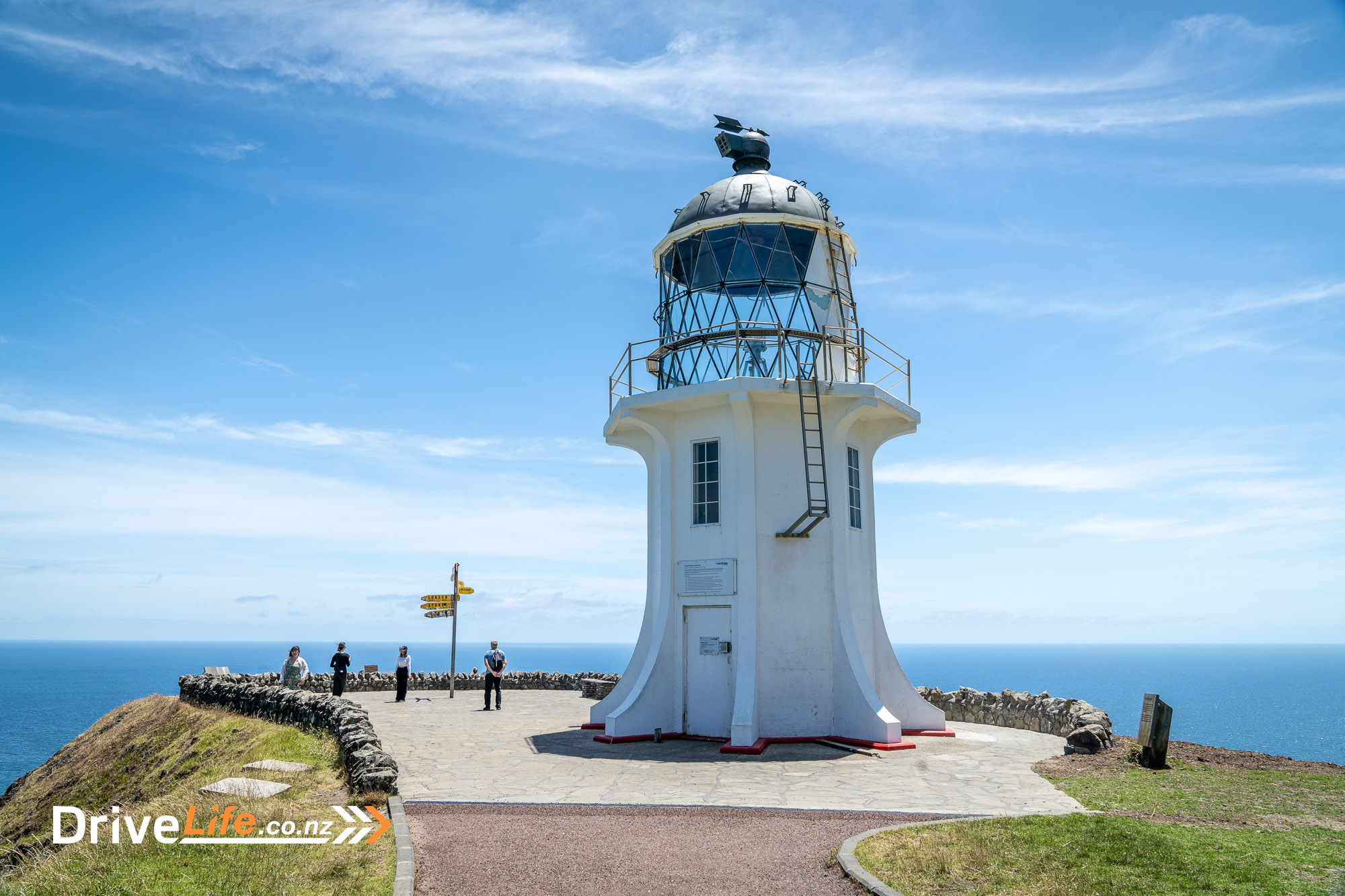
It’s worth noting that charging stations are few and far between up this far, so be aware of your range. The closest charger from the lighthouse is 20km away at Waitiki Landing just across the road from a gas station.
Our next stop was probably the highlight of the trip for me, as it was not what I expected at all. The Giant Sand Dunes are a 25-minute drive from the lighthouse, 4km down Te Paki Stream Road, which is a gravel track. Once on this track, you feel like you’re just heading out through some farmland – that is until you come around a corner and right there behind the tree line is a giant sand dune. Then you see more and more, and they go all the way to the coast. It’s so surreal, as it’s like the farmland just stops, and it turns into a desert. No fade from one to the other, just a hard line, of lush grass and then a desert.
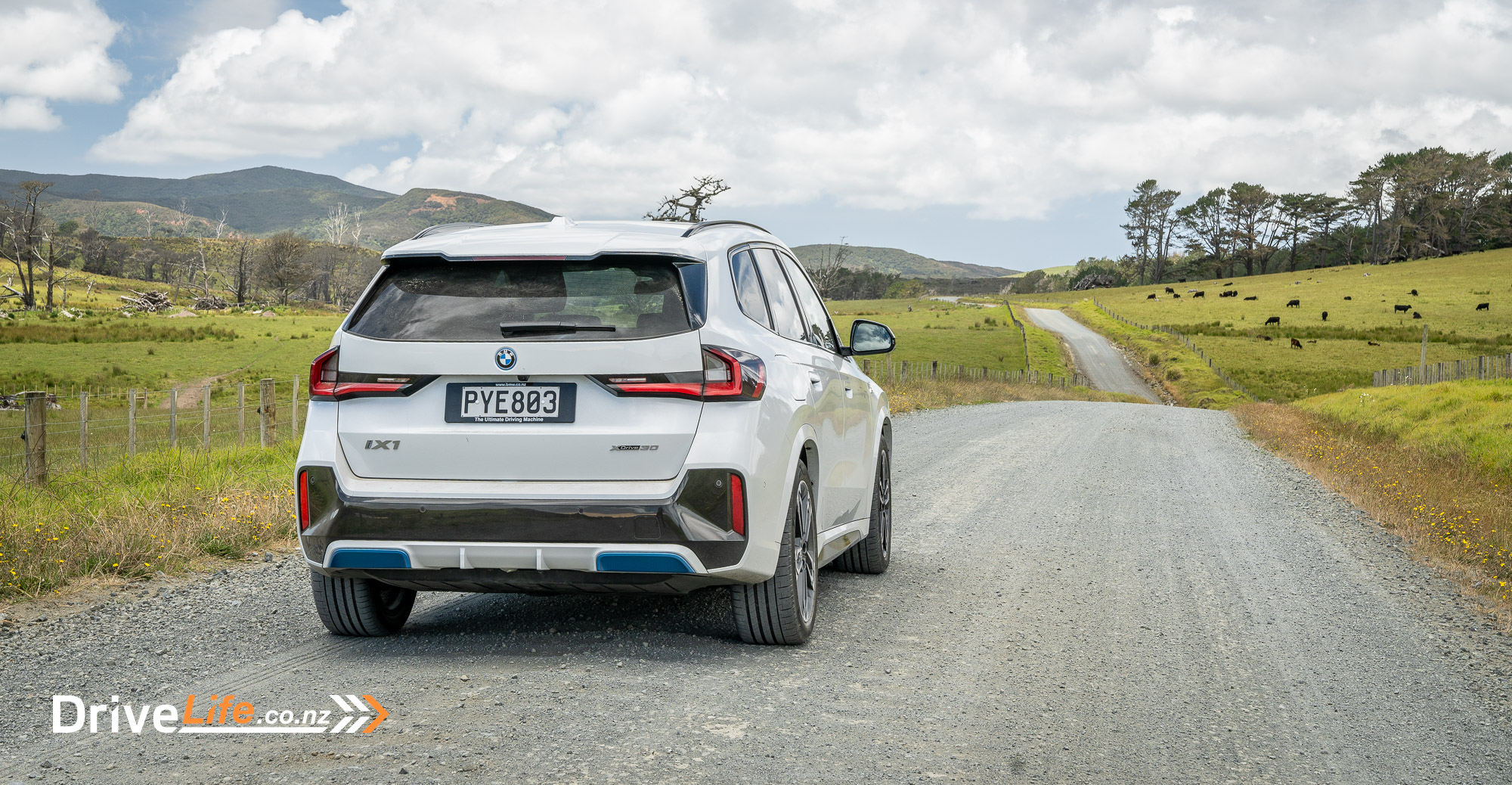
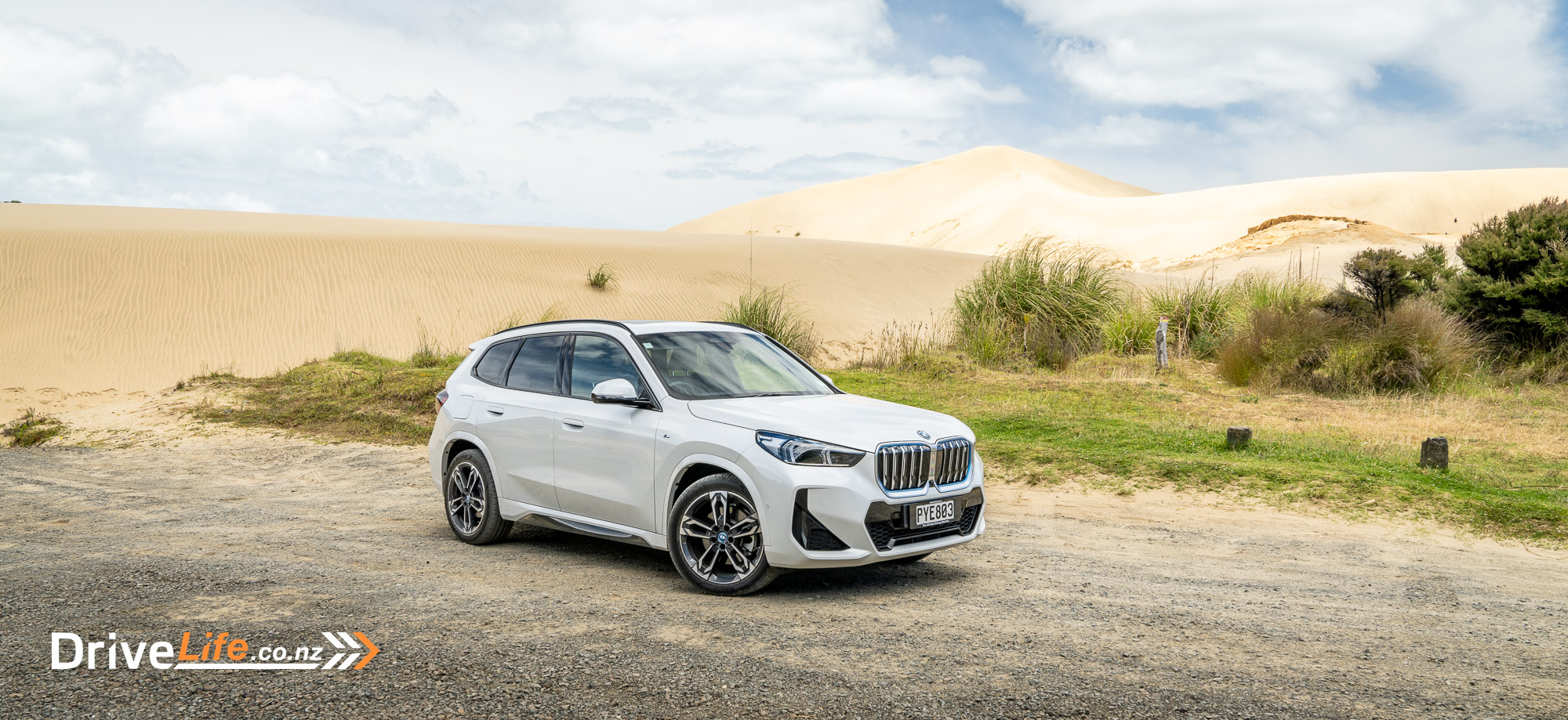
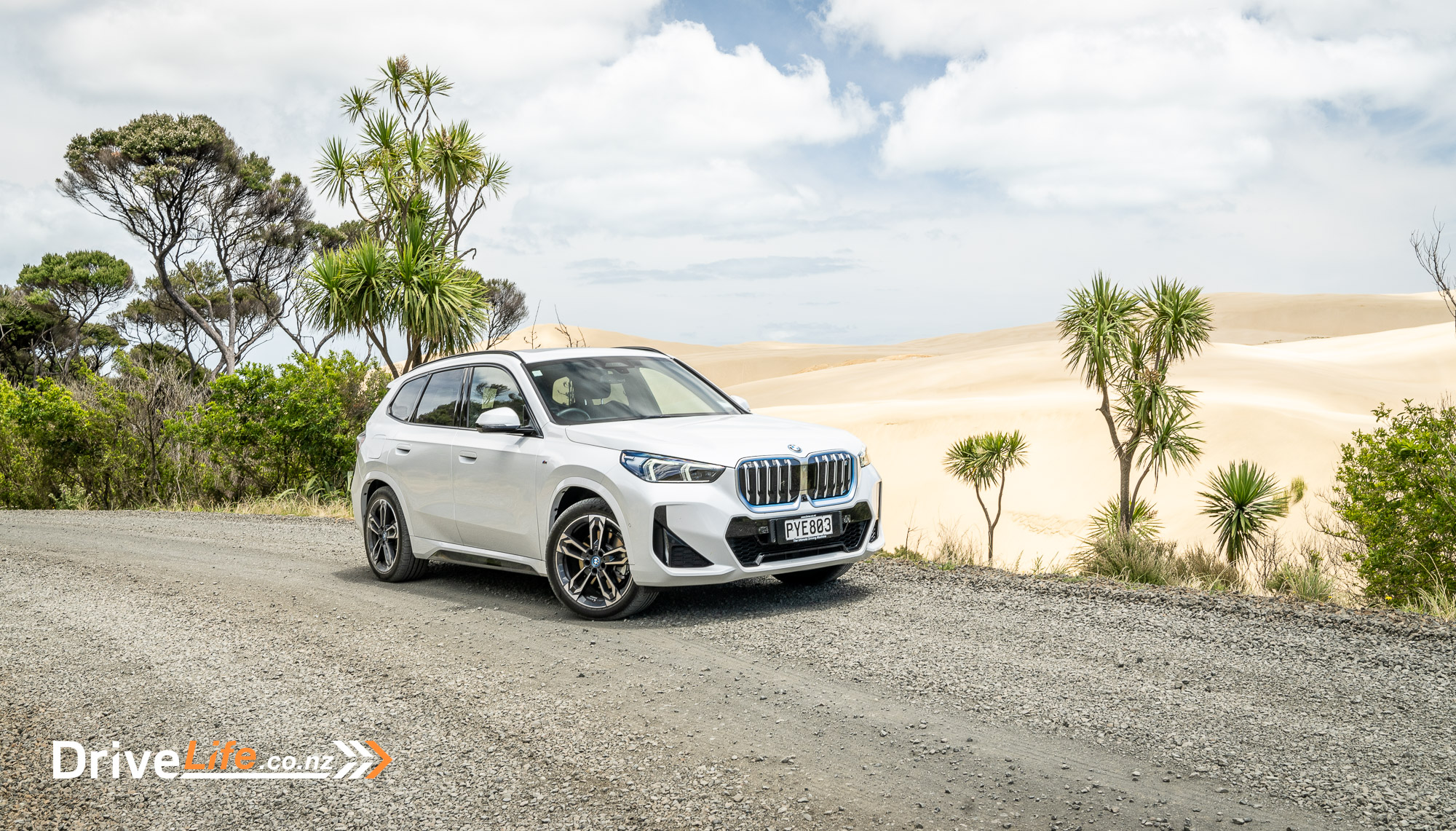
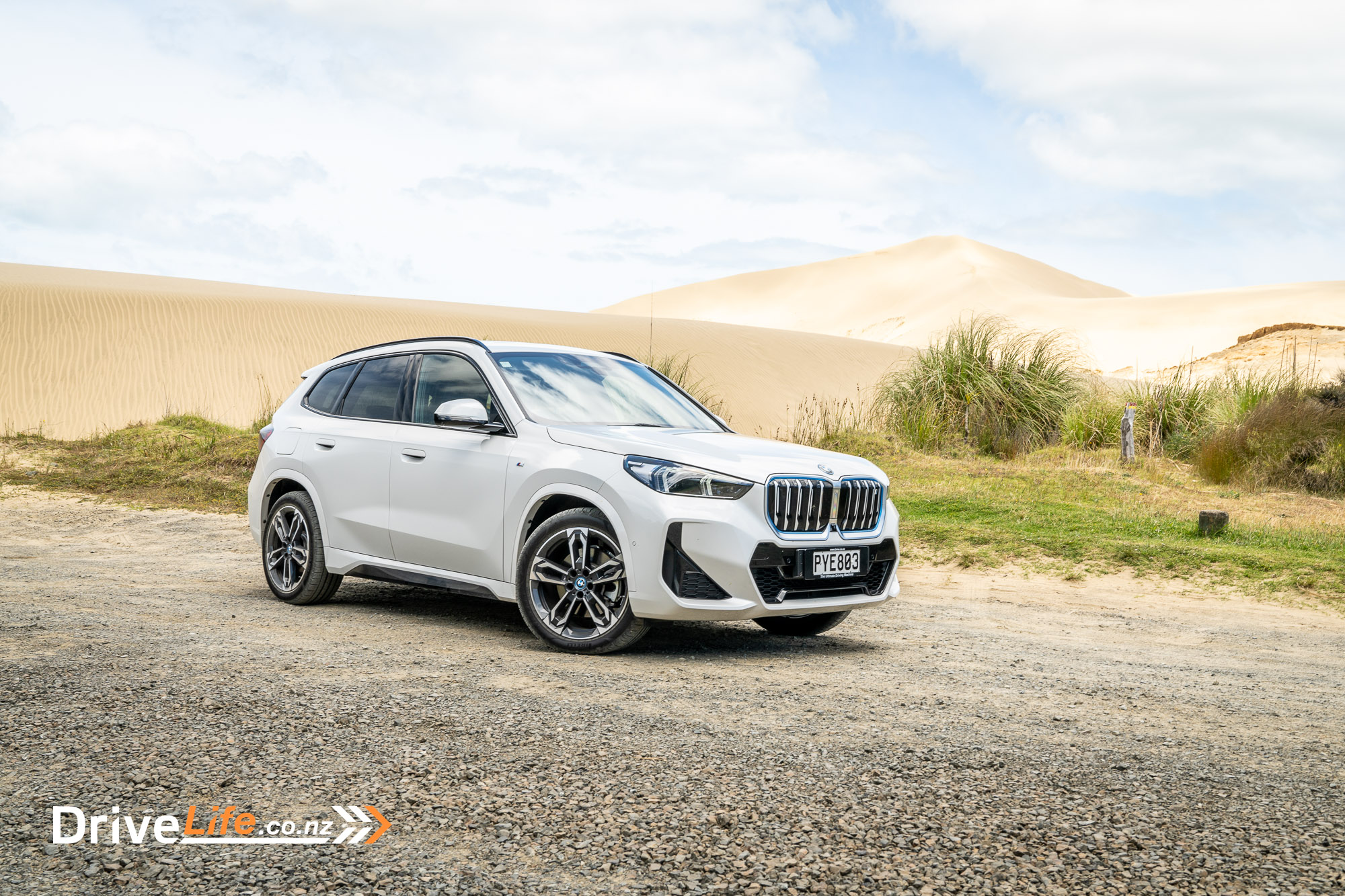
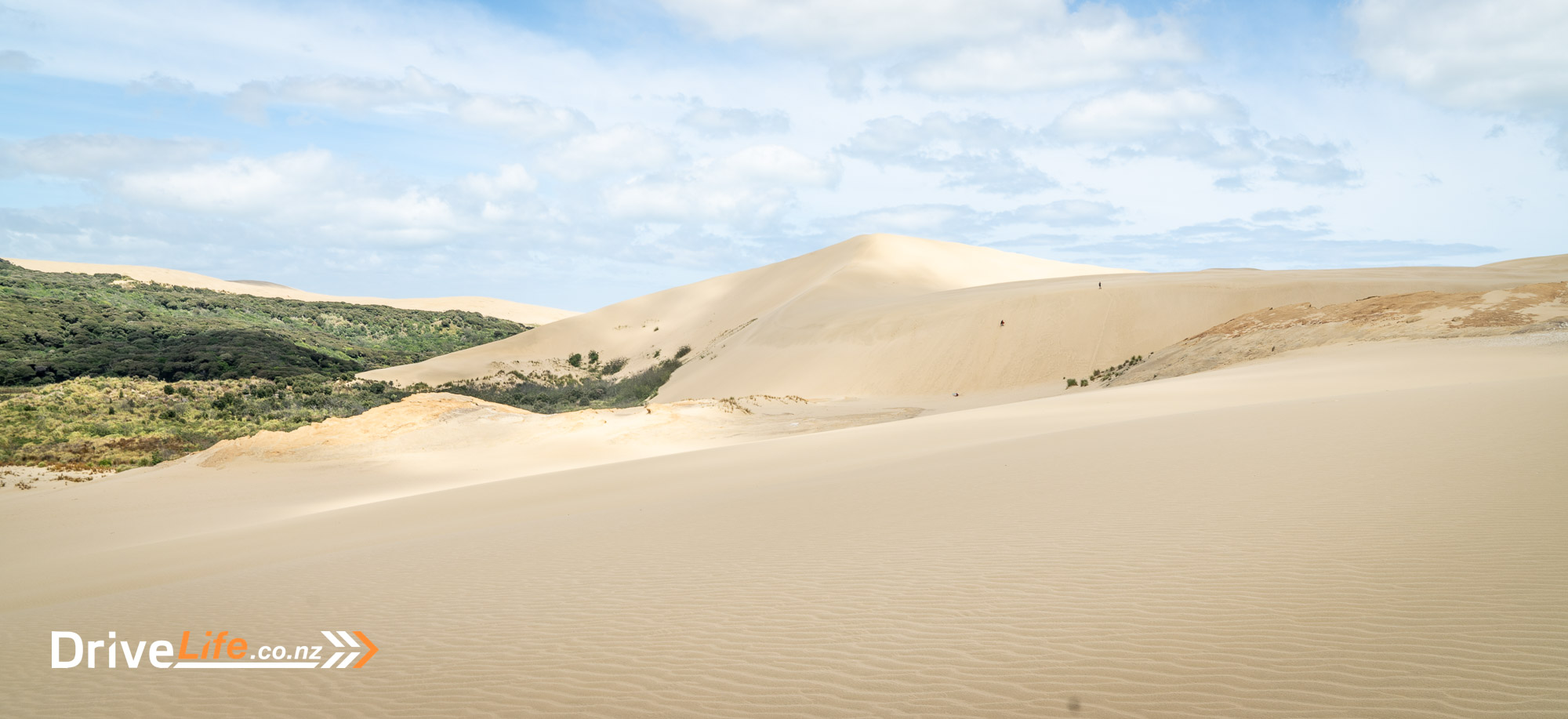
At the end of the road, there is a car park and this is also where you can hire a bodyboard for $15 to surf down the dunes. We walked out to the dunes, which involved crossing a small river by foot, so prepare to get a little wet, and then you are on the sand. The sand is so soft, and it moves just like it does in the movies. Some areas are hard to walk up, but once you get to the top of one of the dunes, you could have easily convinced me that we were in the middle of the Sahara Desert. To complete the feeling, it was 36 degrees that day. Its hard to gauge scale, the black dots on the dune are people climbing up them.
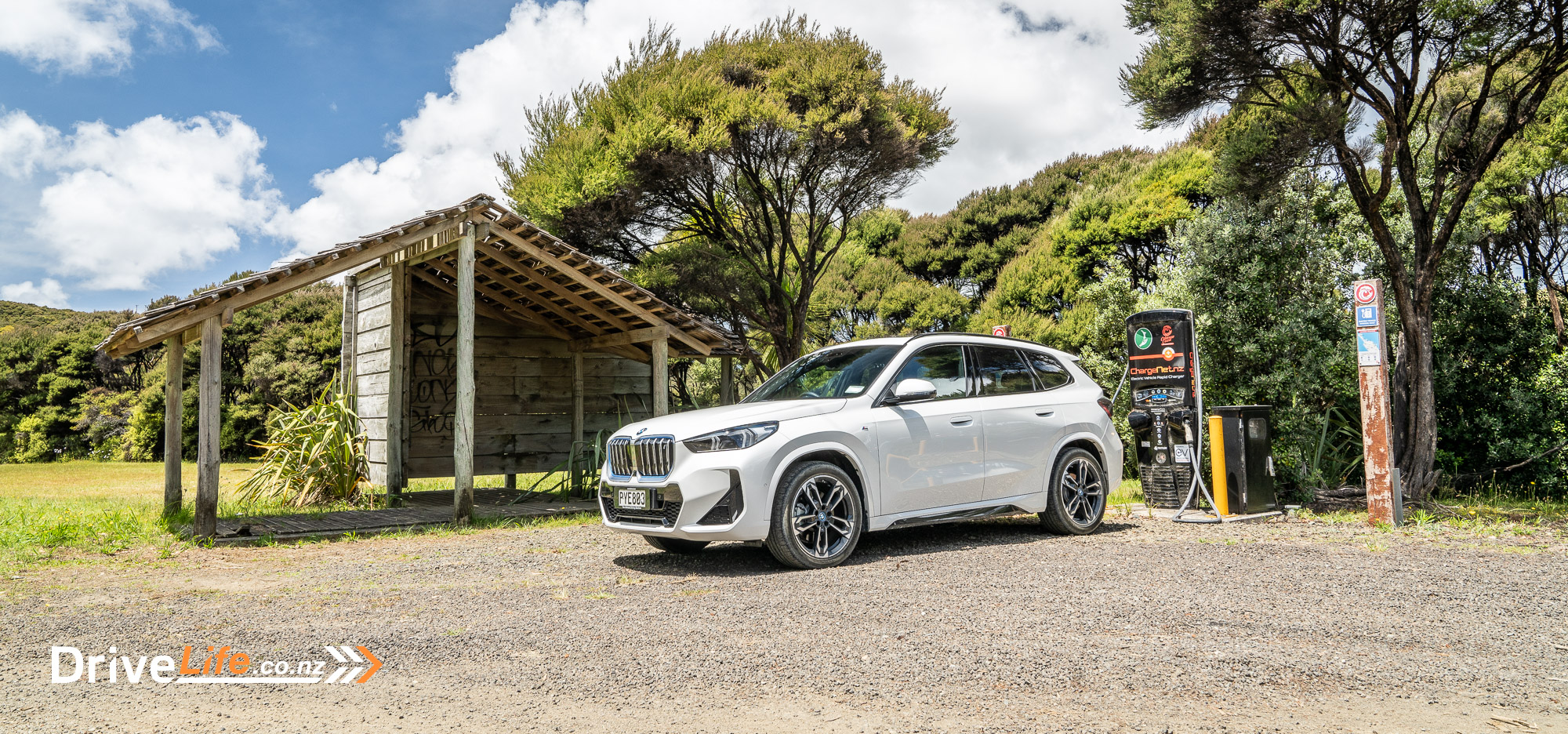
The next stop was a quick charge at Waitiki Landing. It’s right out in the middle of nowhere, so do not expect much to do; there is a shop in the gas station across the road, but the selection is limited. However, I welcomed these breaks as I found they helped and forced me to break up the day’s driving, giving me a bit of time to just stop and rest.
Once topped up with power, we set off for Ninety Mile Beach, another 45-minute drive. The beach is strangely only 88 kilometres long. But I guess they all agreed that ninety had a better ring to it. Once you leave the main road, you have a 9km drive down a very rough gravel road. This road is also used by logging and construction vehicles, so be aware there can be big vehicles coming around the corners, and a lot of dust in the air. As you get closer to the beach there is a forest to pass through, and then the beach.
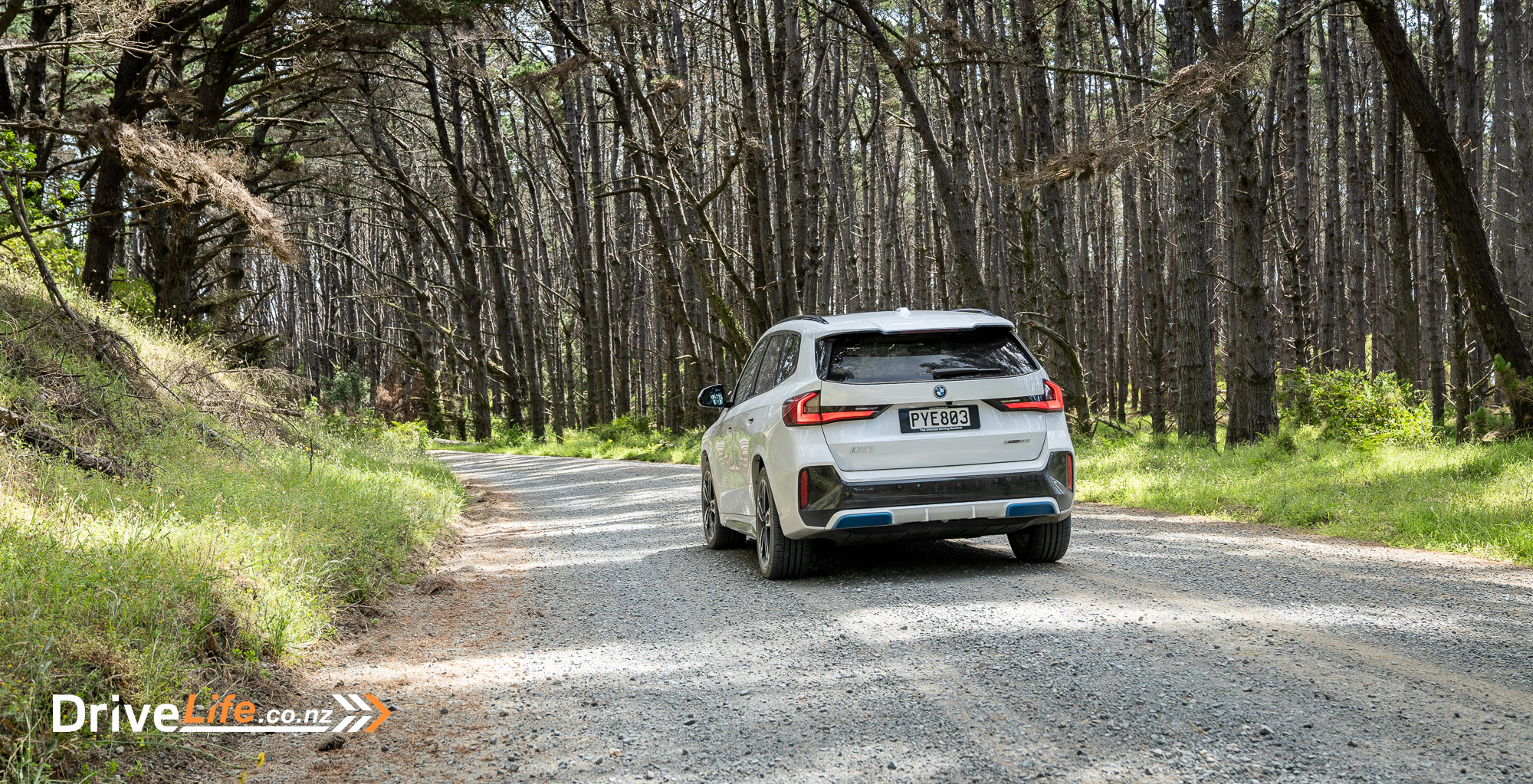
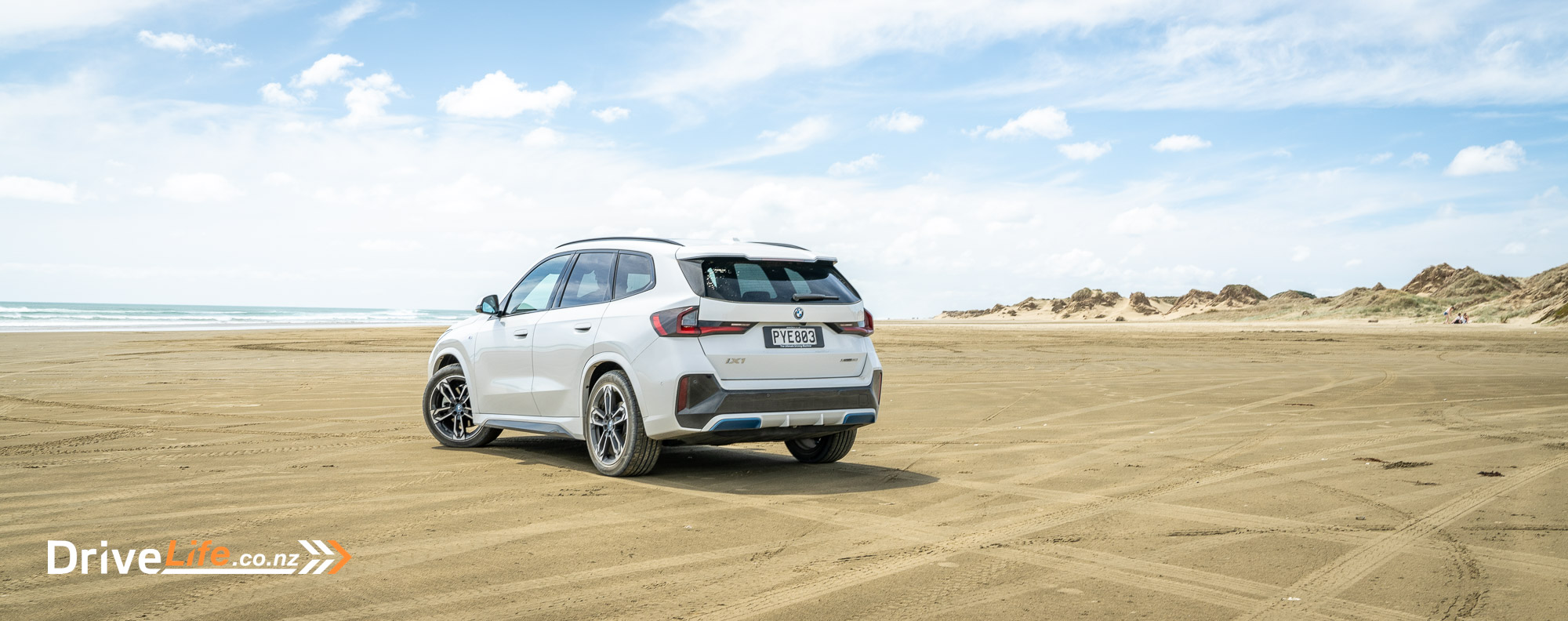
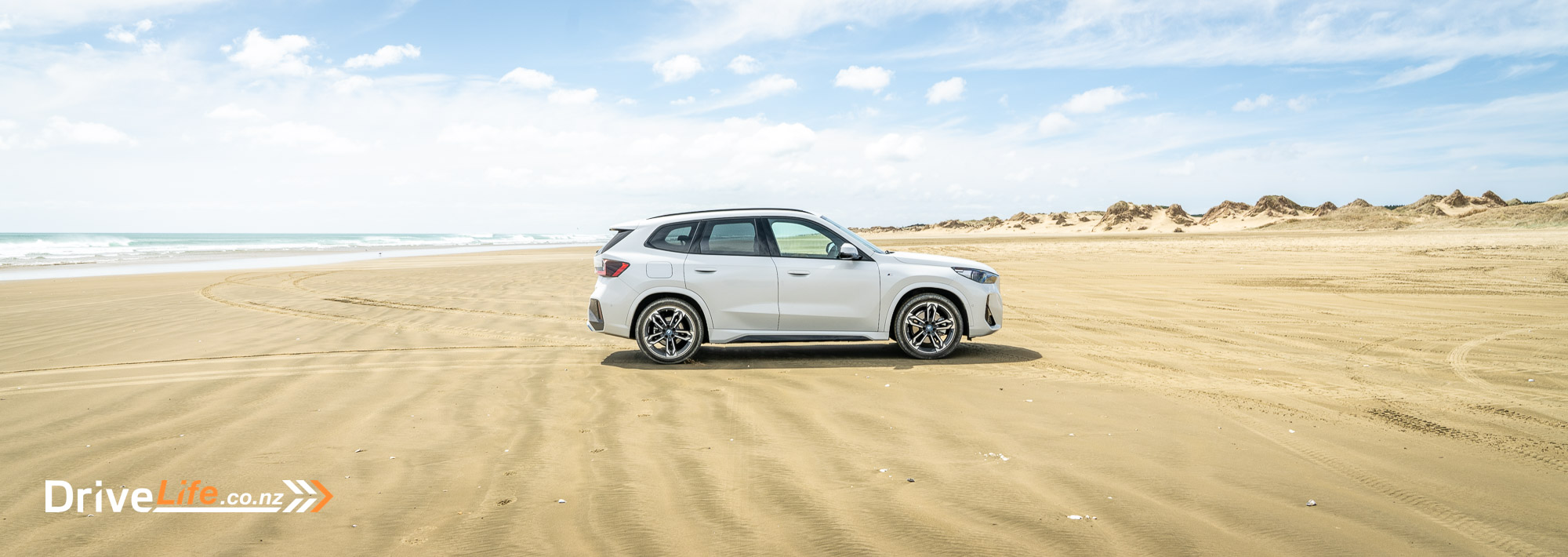
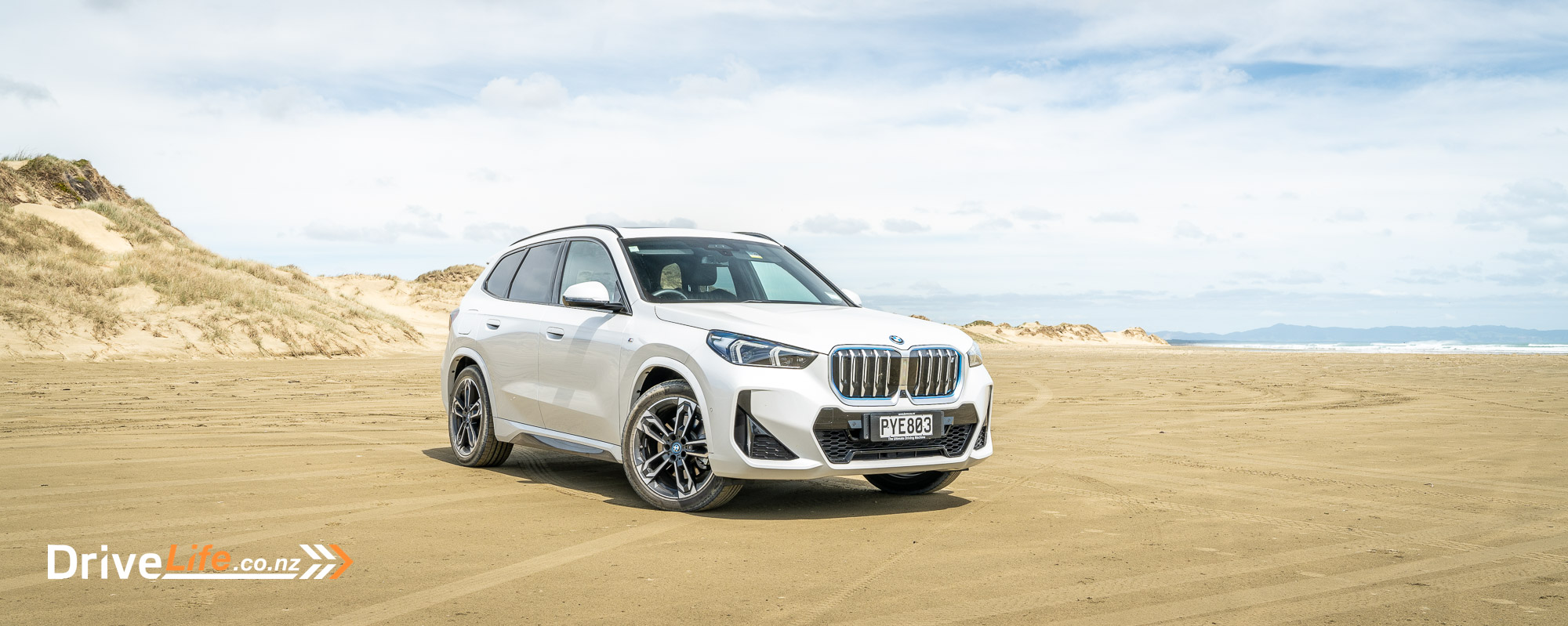
Out on the beach, it’s really hard to grasp the scale of it, as there are not a lot of features and it’s very flat. Once you see a vehicle race up the beach you can see how long it is. The sand is hard and easy to drive on, but keep in mind that it’s still a beach, and you can get stuck if you’re not careful. There are a lot of rental cars buried under the sand of Ninety Mile Beach, cars that were driven by people not used to the conditions.
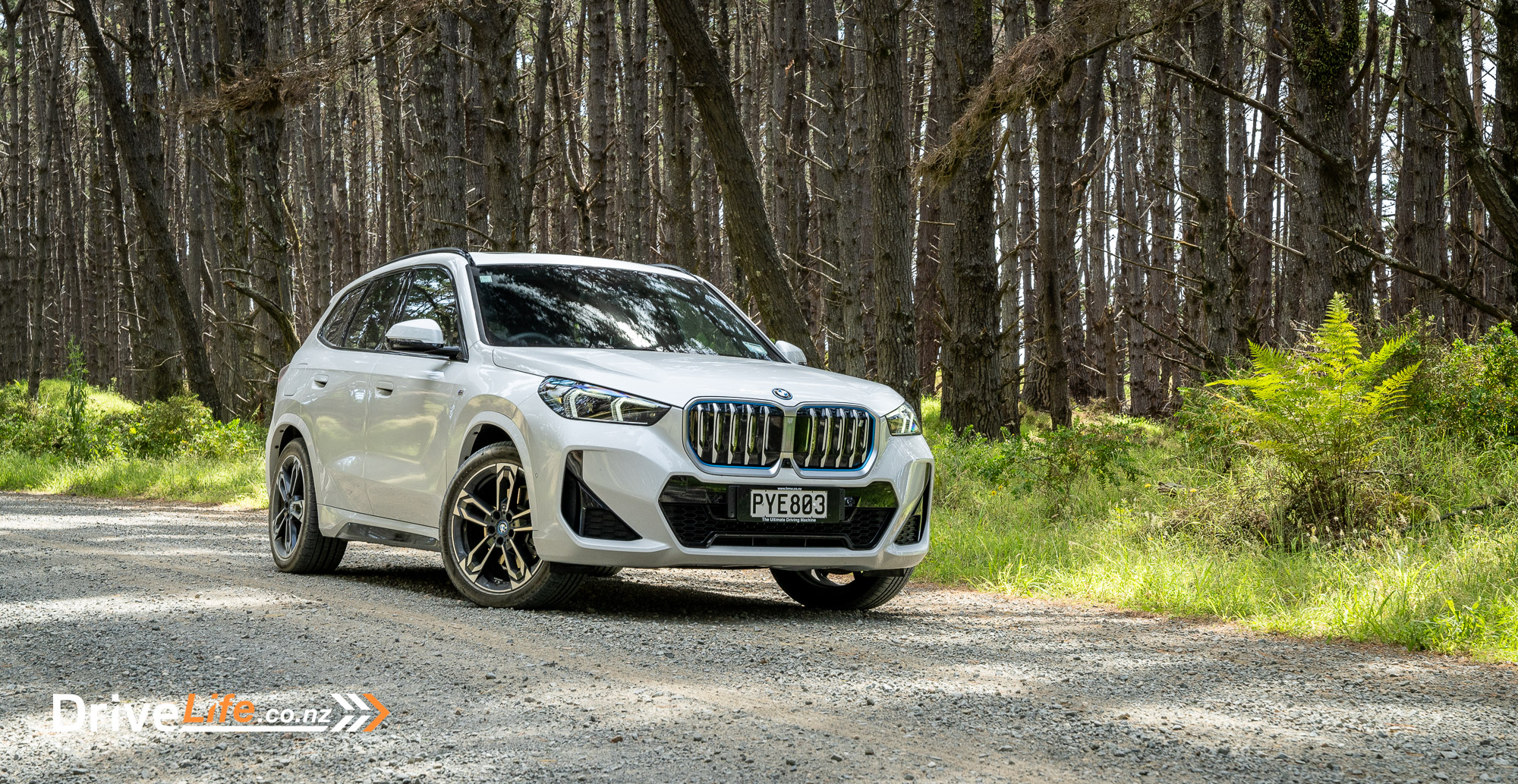
The tip of New Zealand feels like a different country and has such an amazing variety of different environments and ecosystems. Going from a seaside beach to a desert dune and then rich dense forests, it’s hard to understand how it all works in such proximity. After a bit of time at the beach, it was time to head back to Paihaia. Over the course of the day, we covered 448km, and two 30-minute and a 1-hour-long charging stop the BMW iX1 finished the day with 56% battery charge.
Day 3 – Sunday – Russell / Bay of Islands
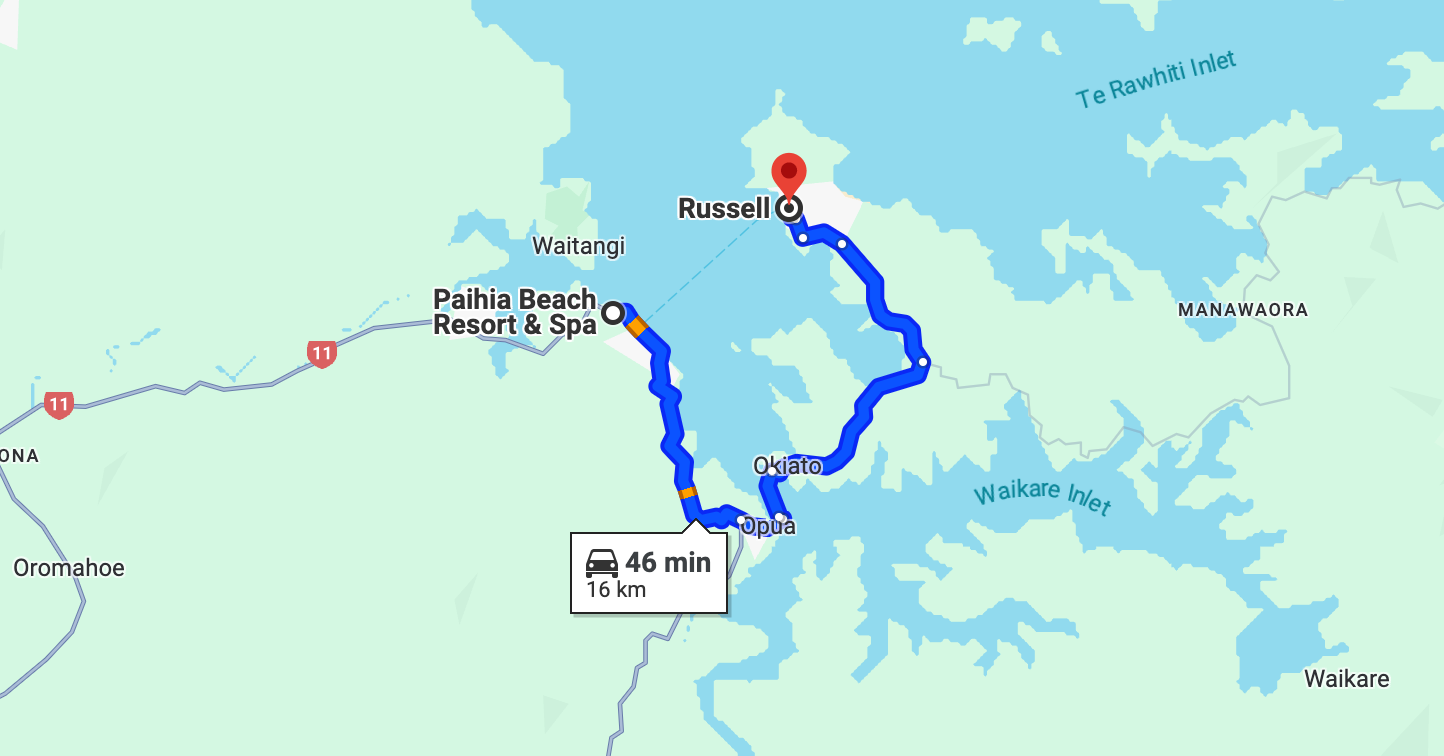
After a big day of driving, it was time to sit back and relax, and what better place to do this than the seaside town of Russell? There are two ways to get to Russell from Paihia; you can take the passenger ferry from Paihia or the vehicle ferry from Opua. We chose to take the vehicle ferry, which takes about an hour in total. The ferry from Opua goes every 10 minutes and takes the same time to cross. This saves a lot of time, as the only alternative route is a 121km round trip which takes about 2 hours.
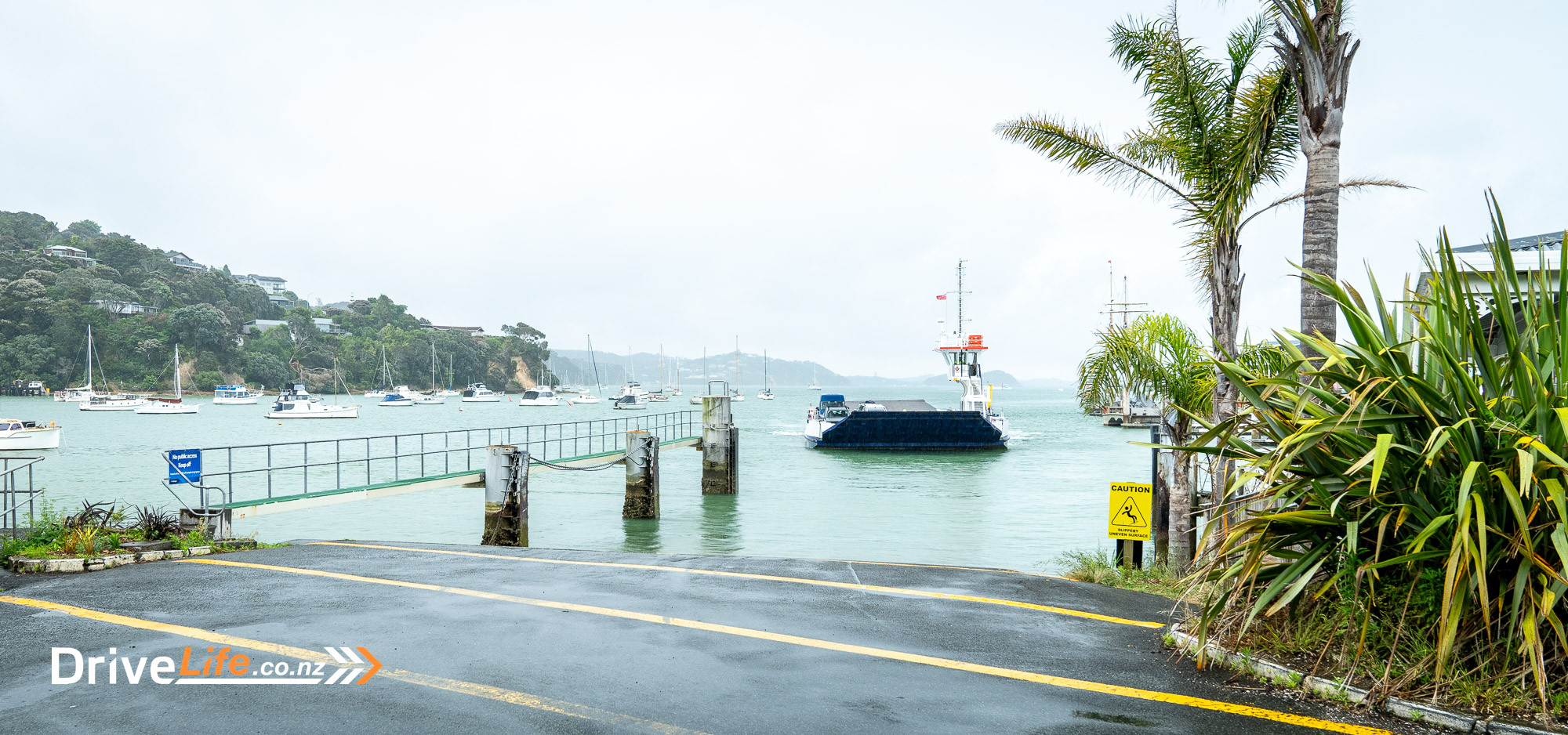
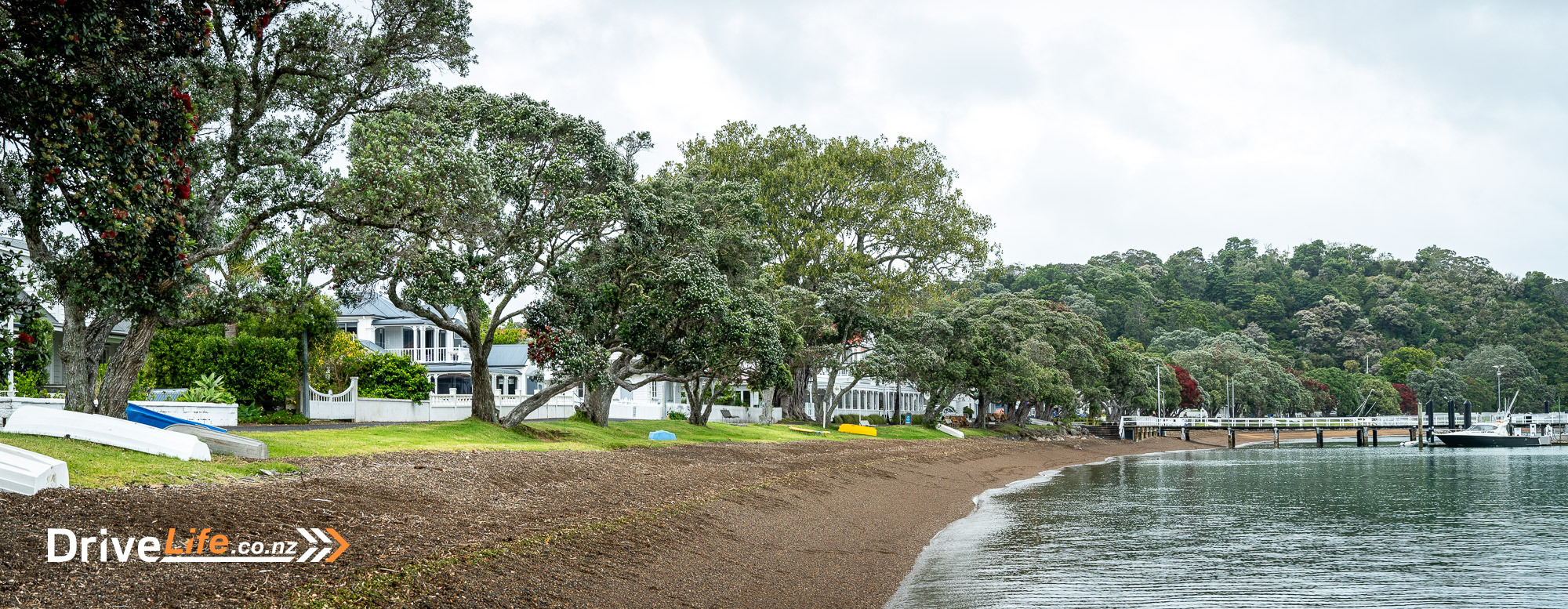
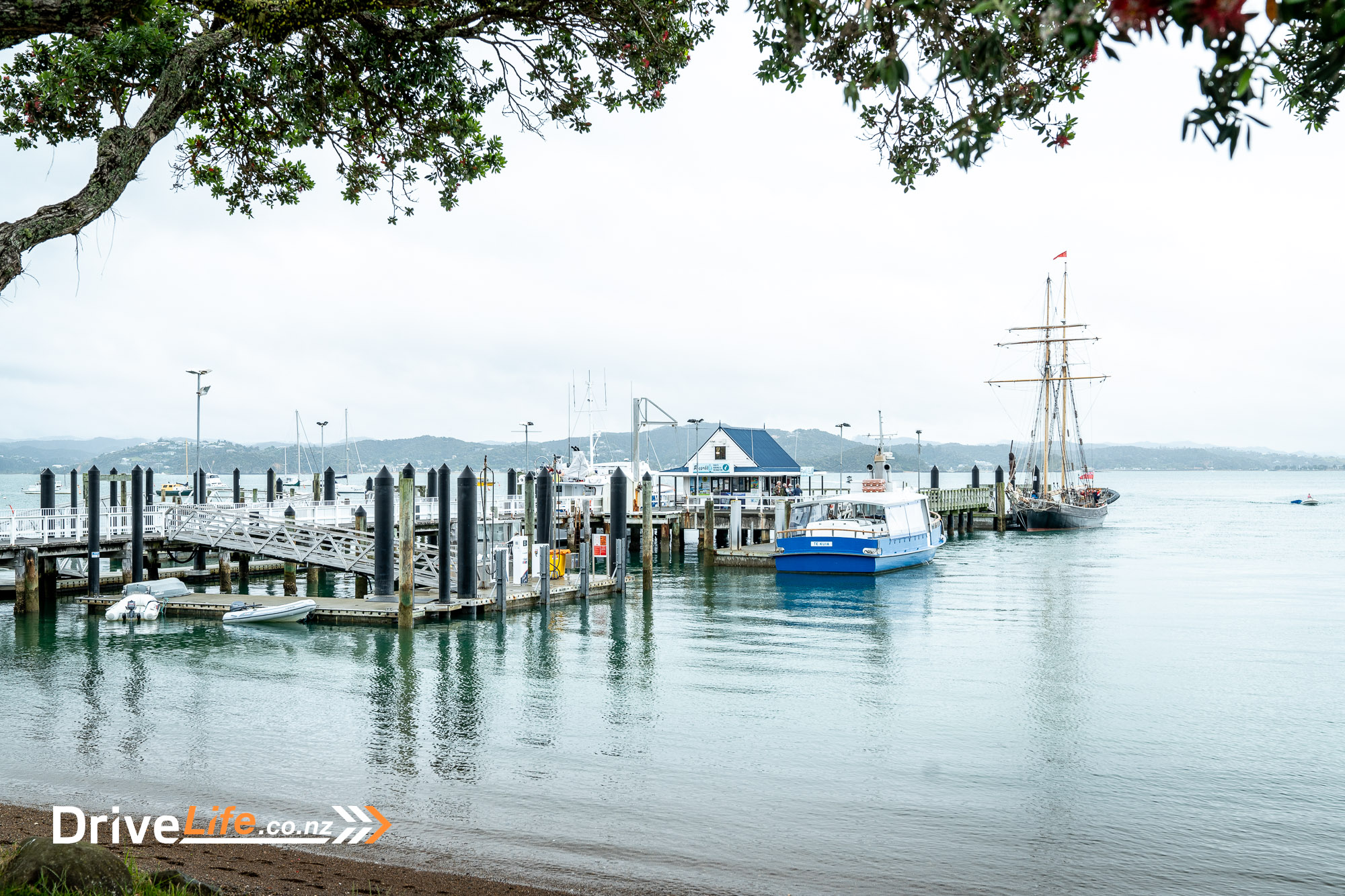
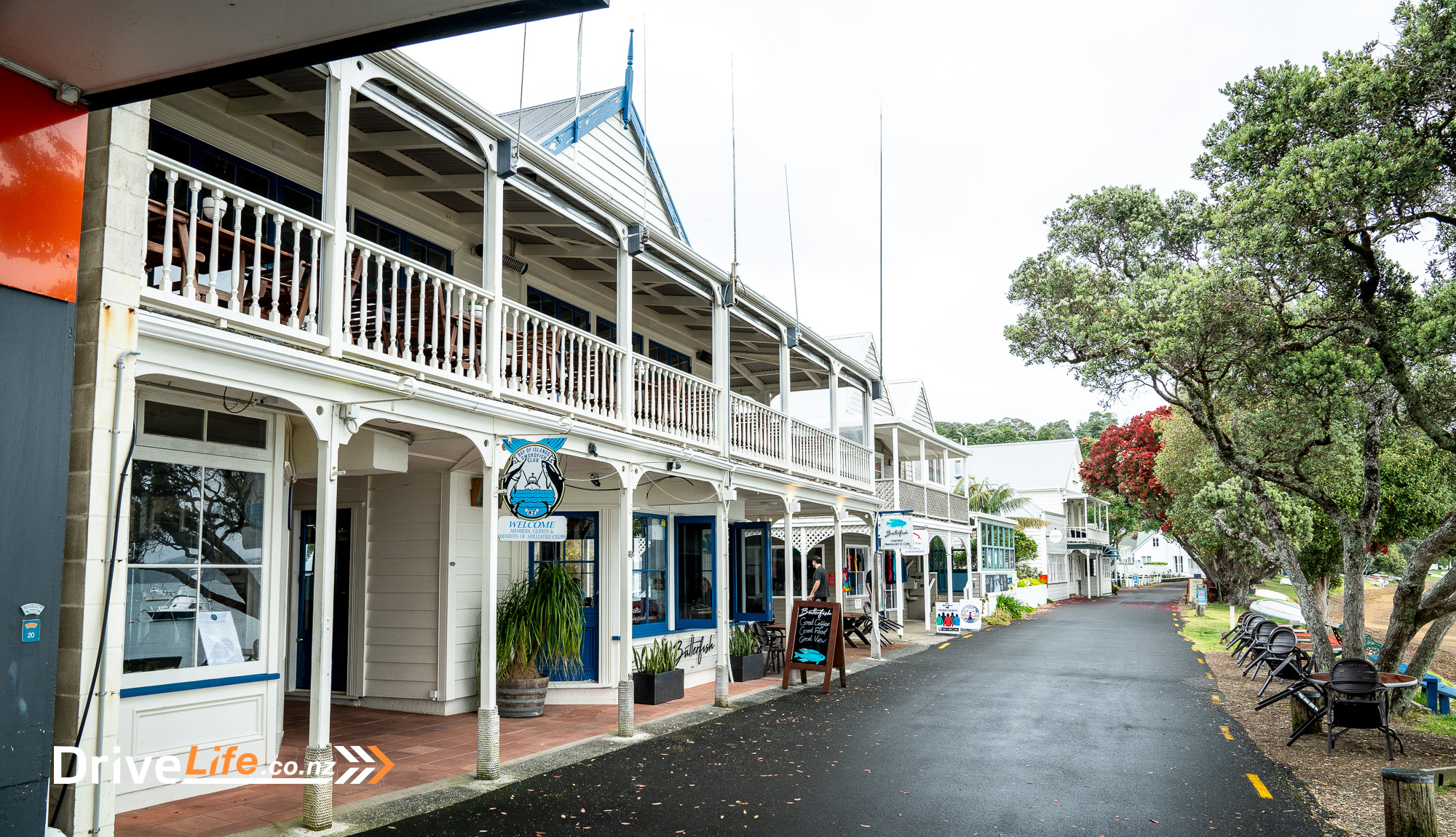
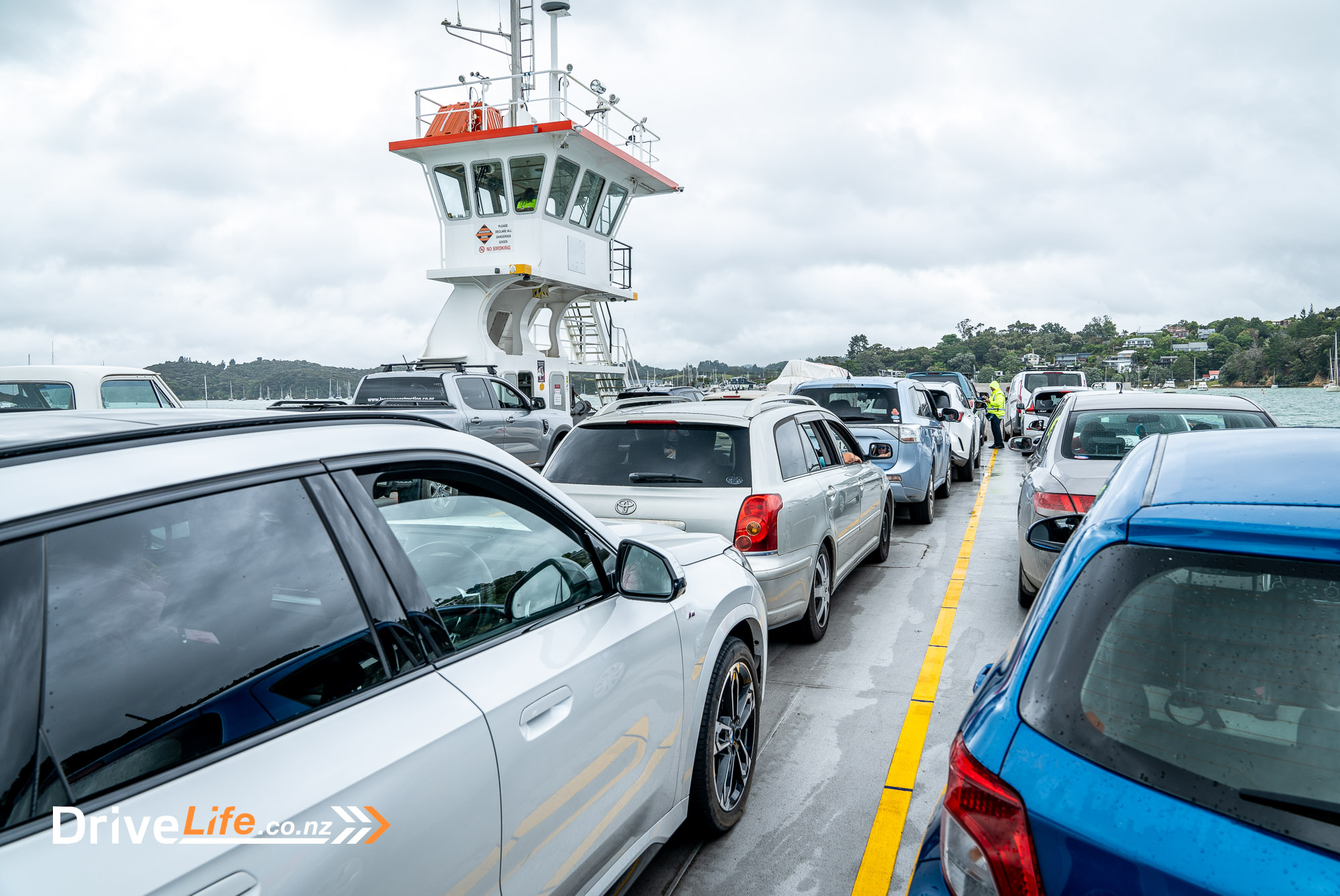
Russell, sometimes referred to as Kororāreka, is a town in the Bay of Islands, in New Zealand’s Far North. It was the first permanent European settlement and seaport in New Zealand. It’s a very picturesque town, which could be in the backdrop of any Hollywood movie. The town is made up of two main streets, with a mixture of local shops and cafes and along the waterfront, there are several hotels and restaurants.
The day passed quickly as we sampled the local restaurants, walked on the beach and just took some time to enjoy the weekend away. It’s a very relaxing place to be, and it feels like time has stopped. If you’re looking to get away from the hustle and bustle of the big city, this is the place to go.
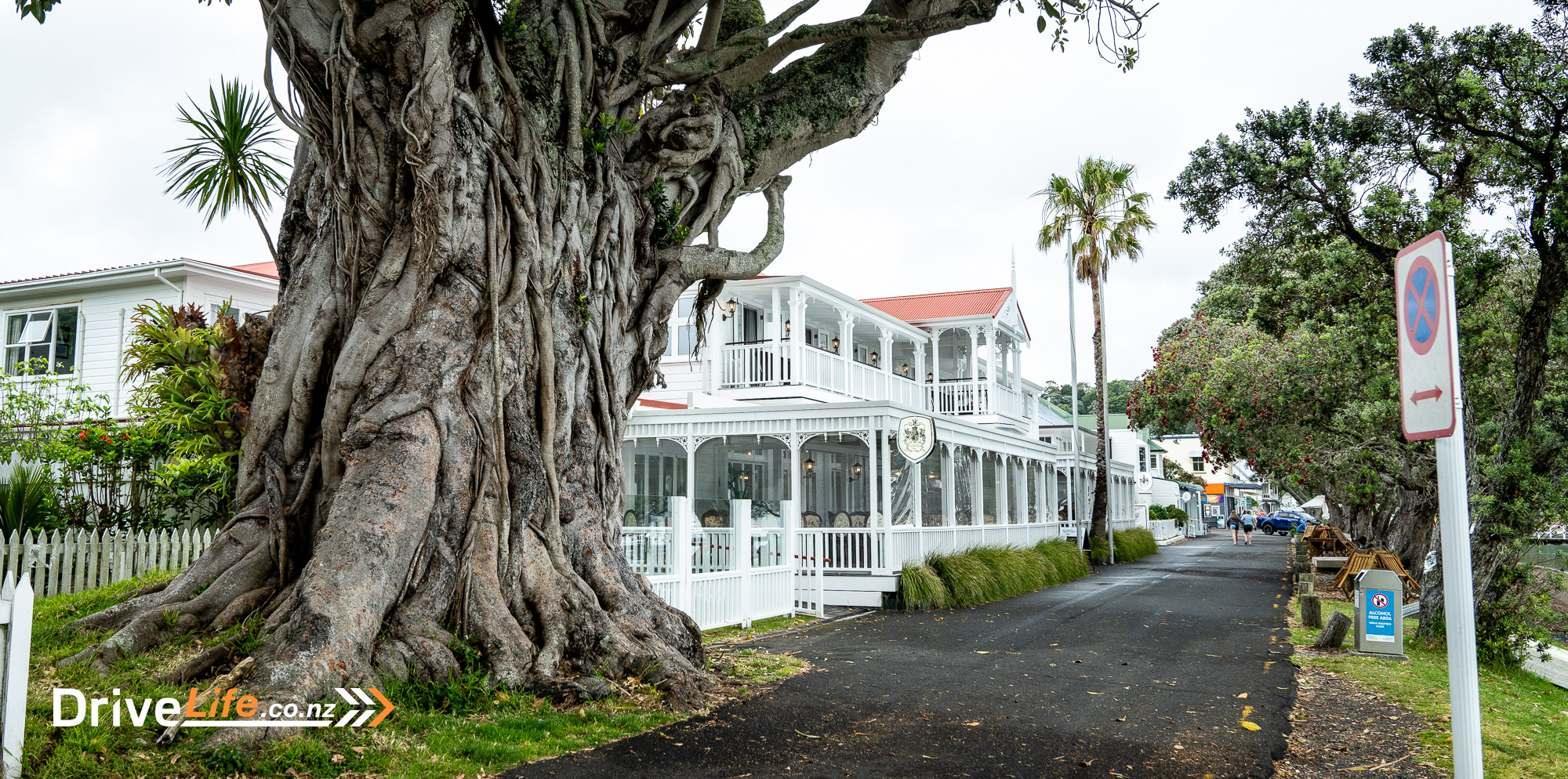
In this region, you should be aware that most charging locations are part of a hotel or motel and are limited to customers only. There were no public charging stations in the town of Russell. There is however a public charging station in Paihia, which I left the car at while we had dinner. This got the battery back up to 87%, ready for the drive back the next day.
Day 4 – Monday – Tane Mahuta / Auckland
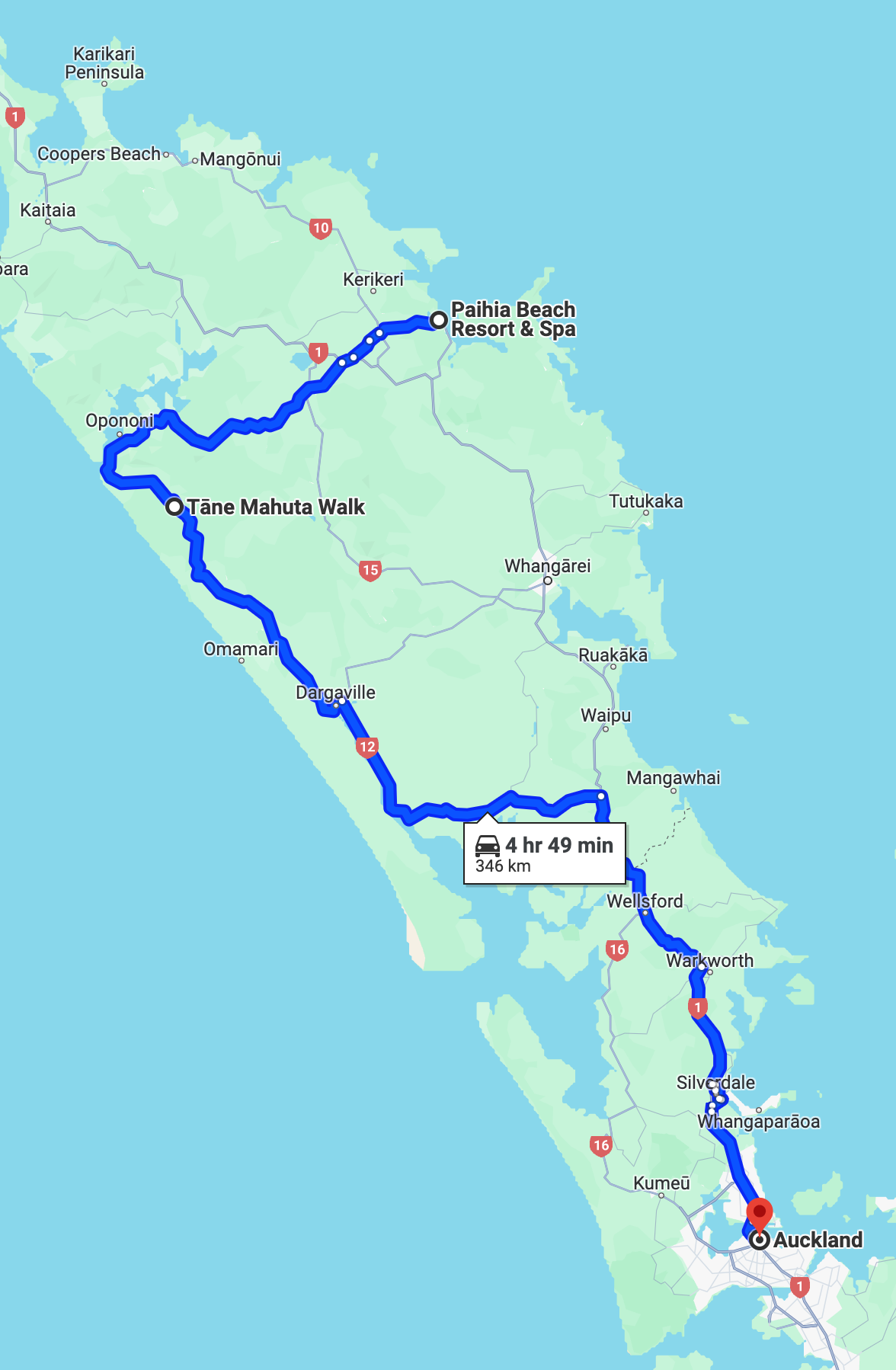
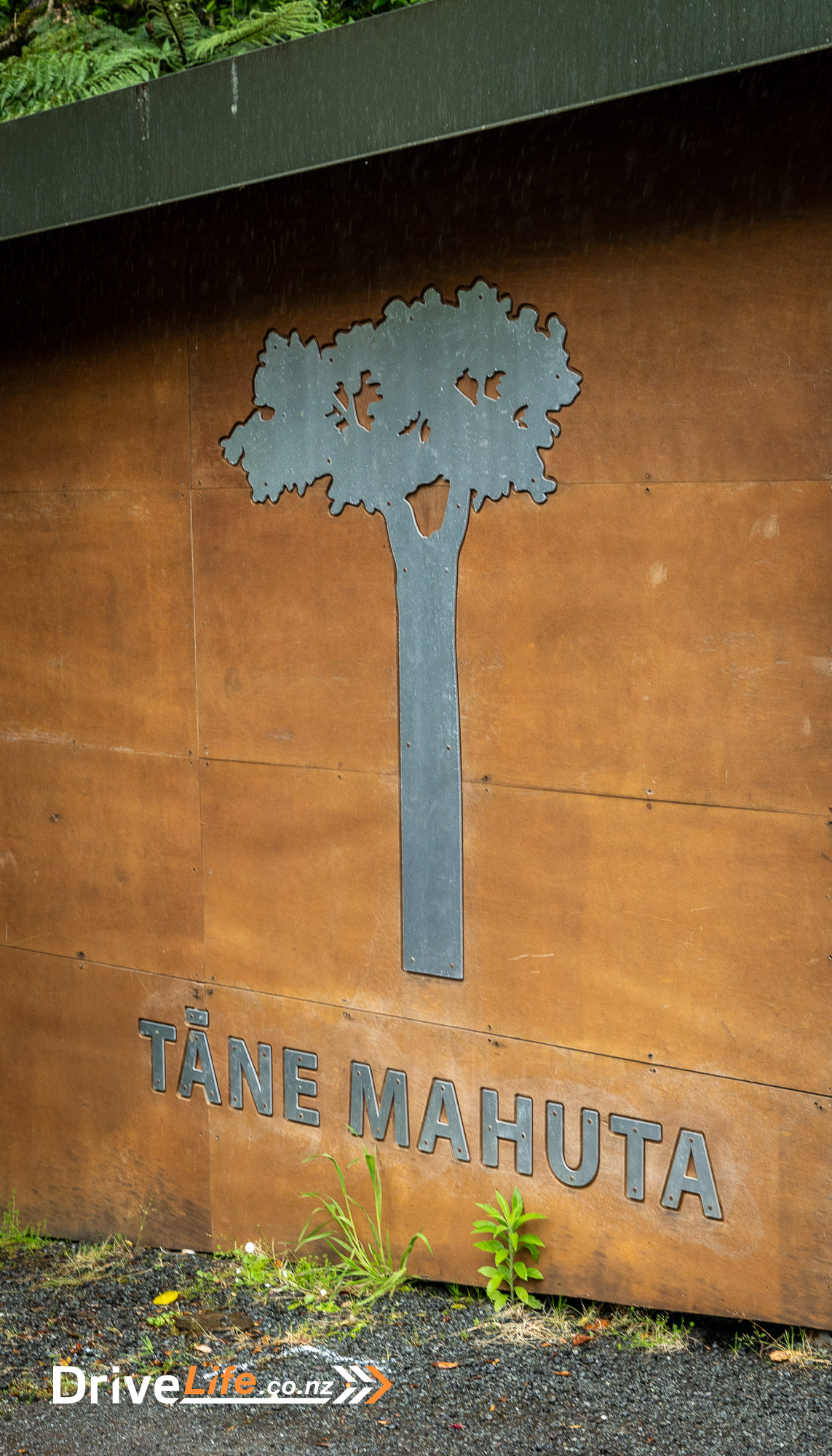
All good trips must come to an end, and being the last day it was time to pack up and head south, back to Auckland. We did not plan to take the direct route, as we wanted to go and check out Tane Mahuta, the giant kauri tree.
Leaving Paihai, we took SH11 and then SH12 across Northland to the opposite coast. The further we went from the east to the west, the wetter it got. This was not at all surprising, as this side of the coast is covered in rich, dense forests.
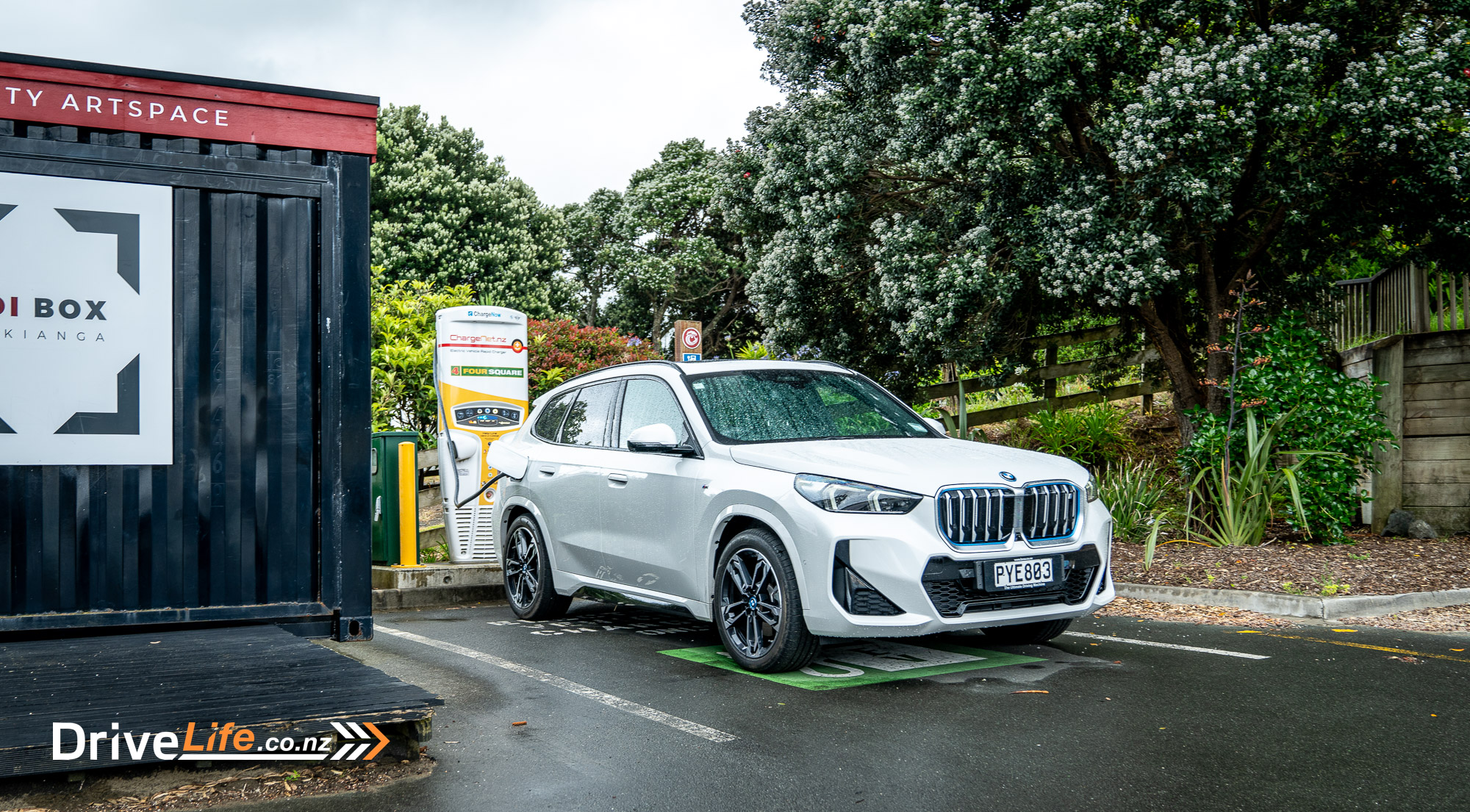
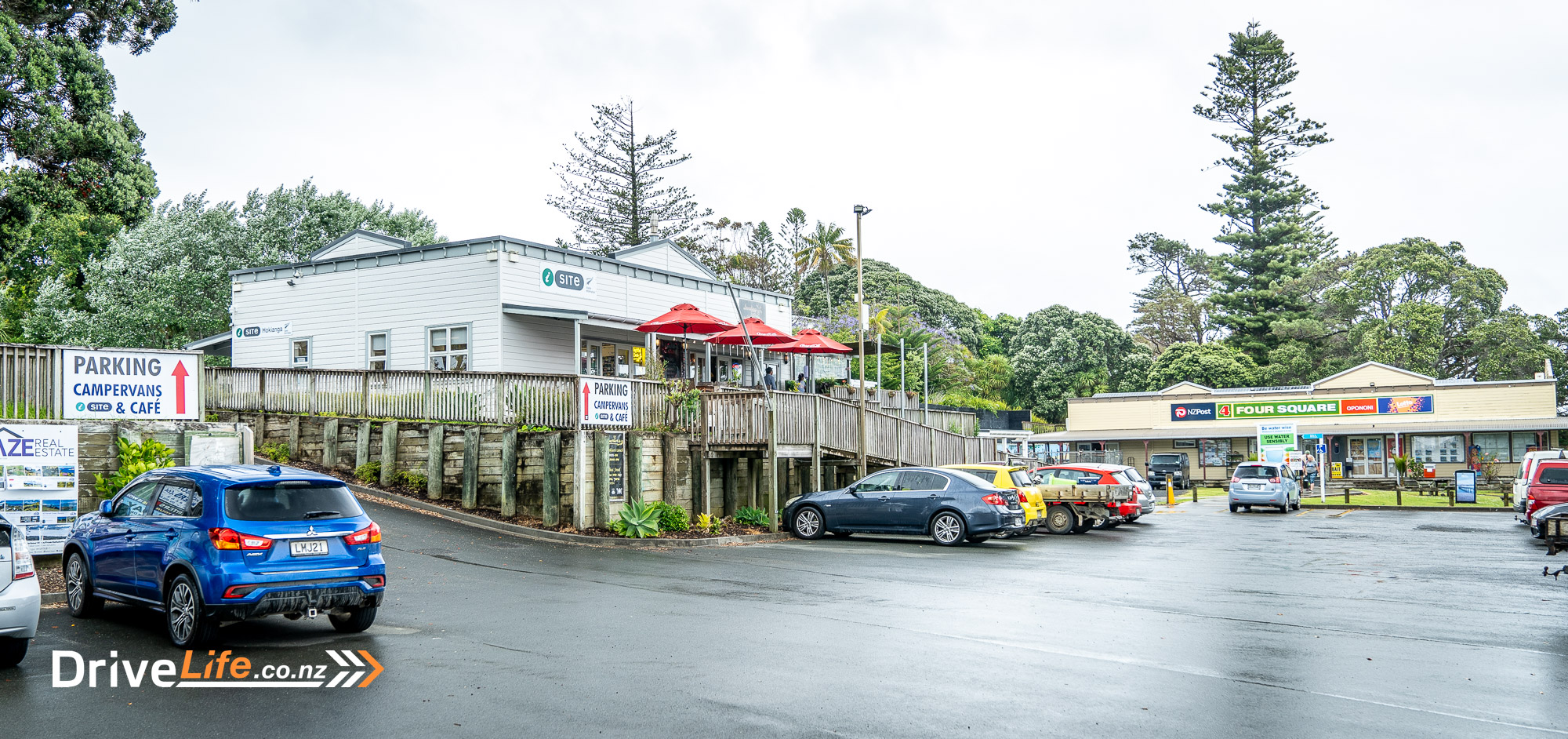
Along this route, the only public charging station was at the Four Square in Opononi, where there is one 50kW charger. I must admit I judged this place before I had even seen it, thinking it would be some middle-of-nowhere stop with nothing to do or anywhere to eat. But I was wrong, there is a huge Four Square and a cafe called the Landing Thai Cafe. If you do this trip, you need to stop here, as the service and food were the best we had all weekend. With both our tummies and vehicle full, we set off to see the mighty king of the forest.
When we reached the stop to see Tane Mahuta, there was not much there – if you blinked you might drive by. There are a couple of car parks and a gate into the forest.
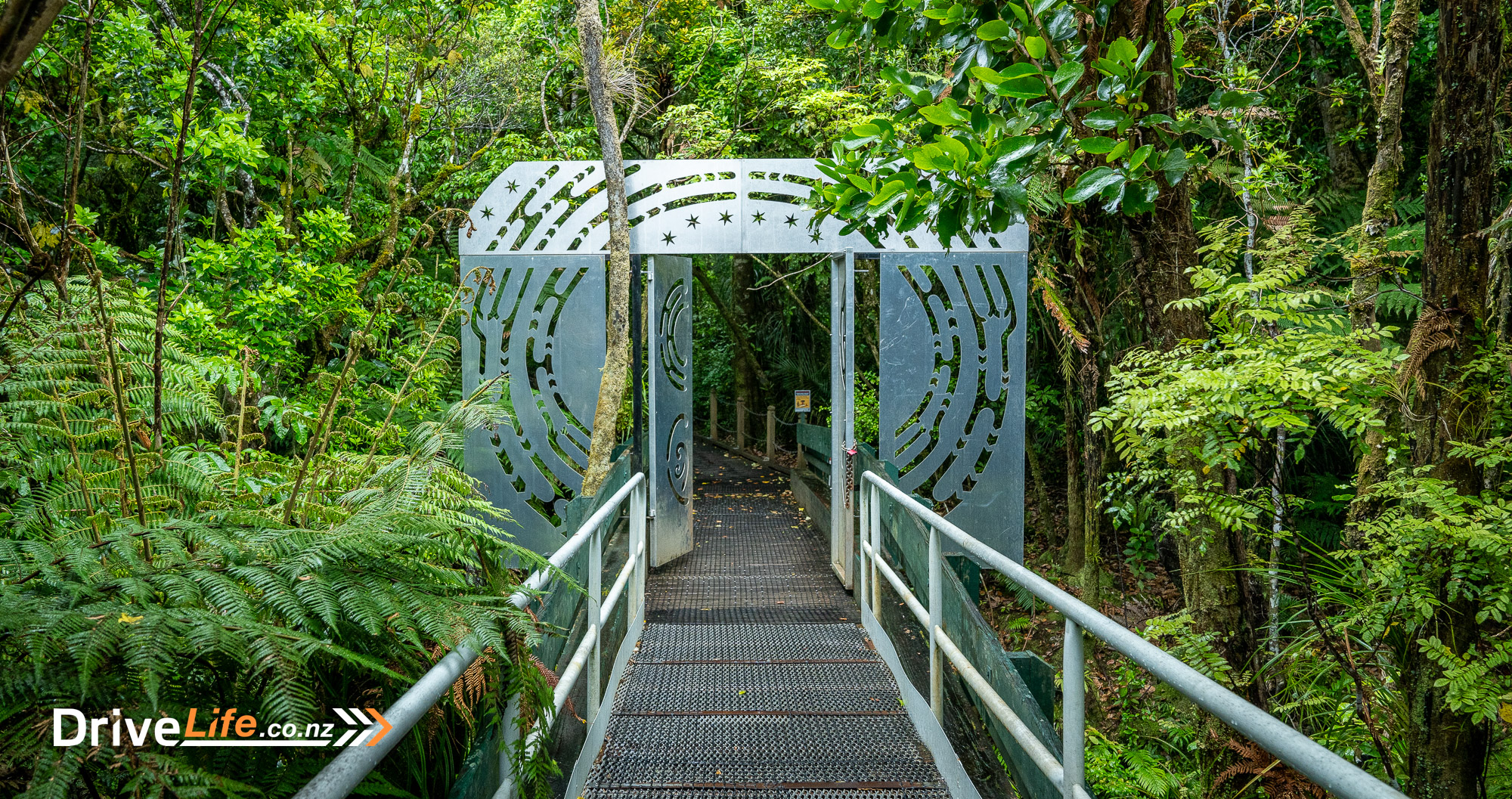
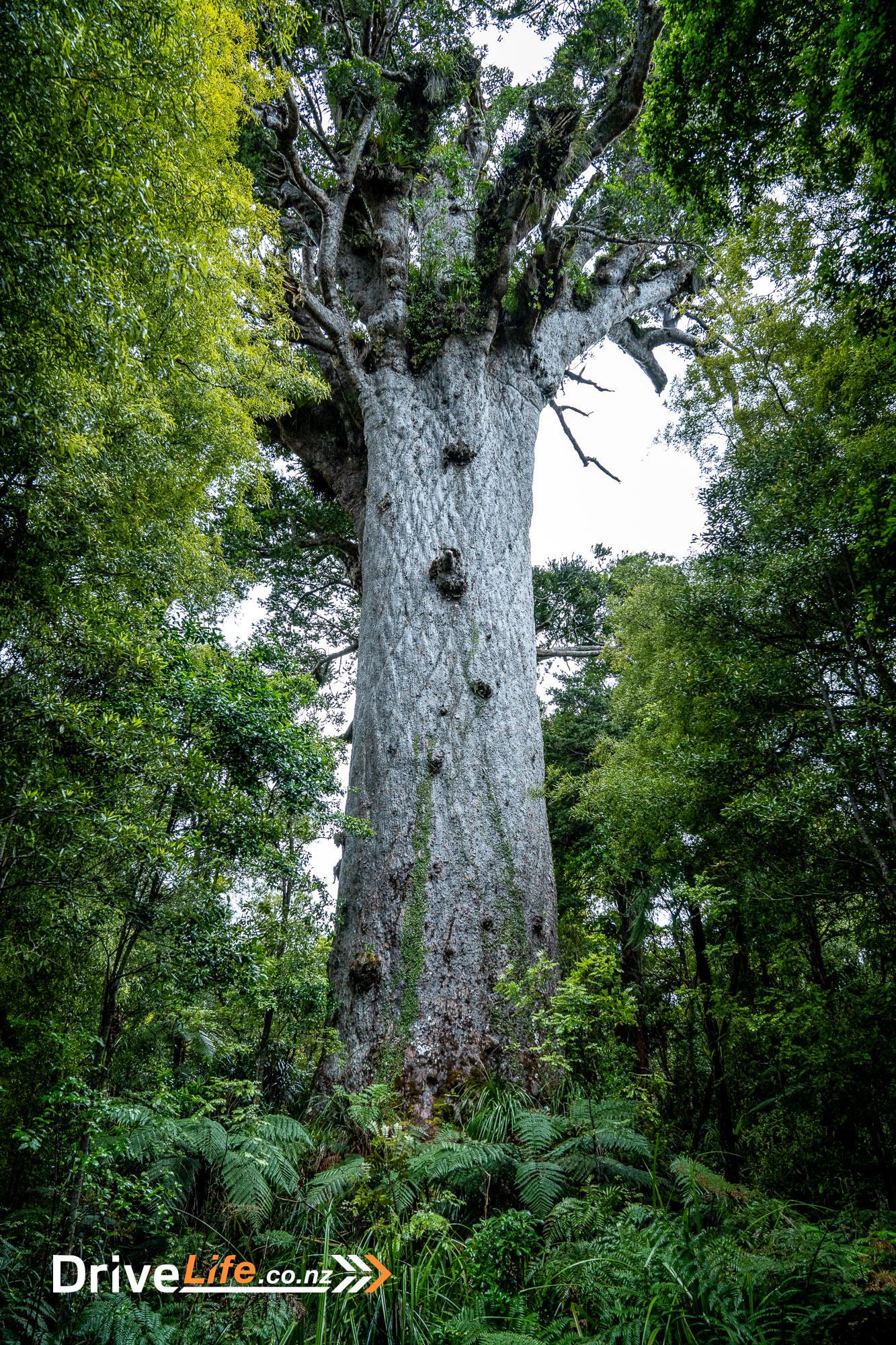
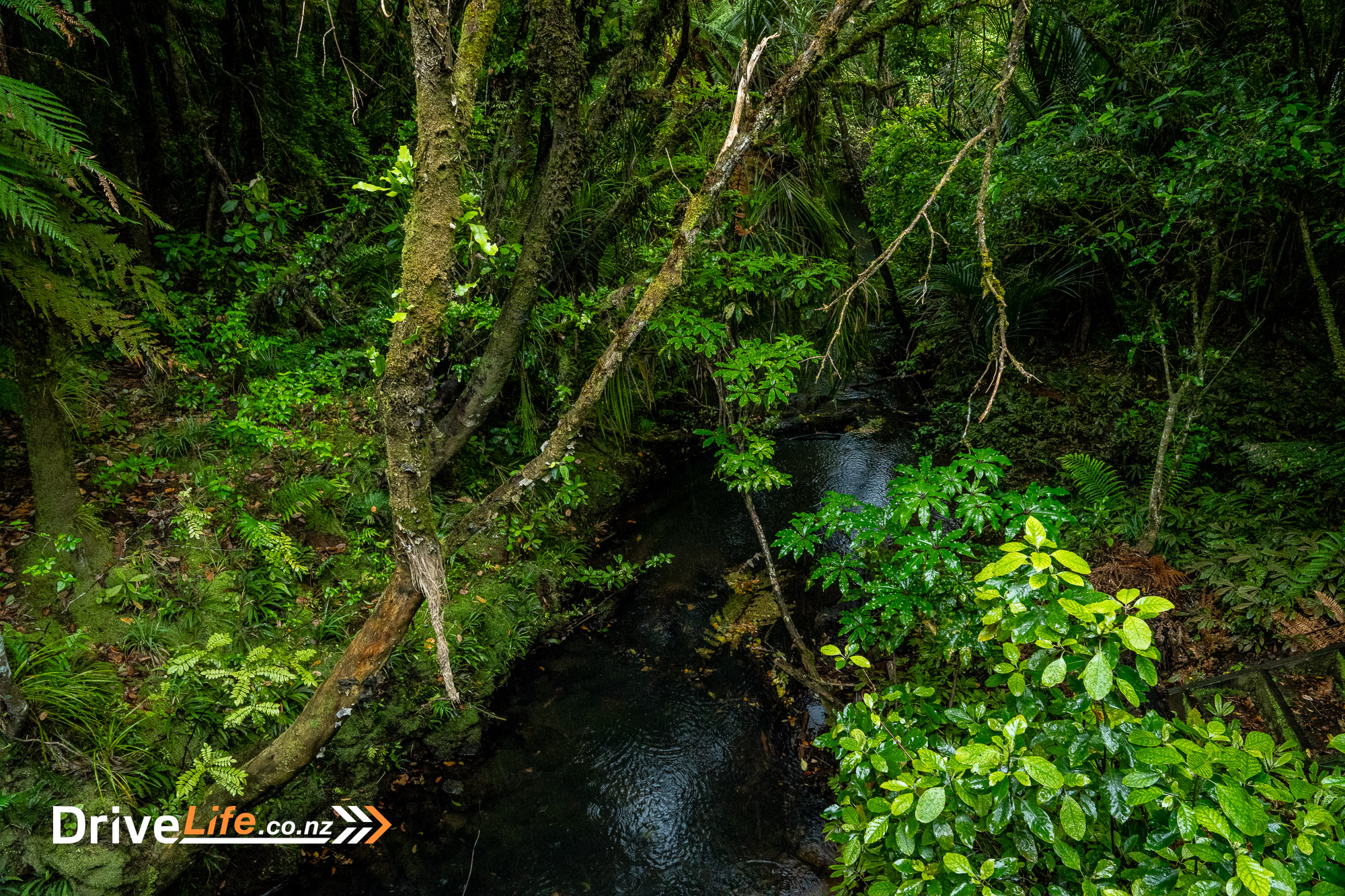
Tāne Mahuta, also called “God of the Forest”, is a giant kauri tree in the Waipoua Forest in the Northland Region. The age of this immense tree is unknown but is estimated to be between 1,250 and 2,500 years. It is named for Tāne, the Māori god of forests and birds.
Photos of this tree do not do it justice. It’s massive, and for any nature lovers, this is a must-see tick box as it is the largest living kauri tree in the world known to stand today.
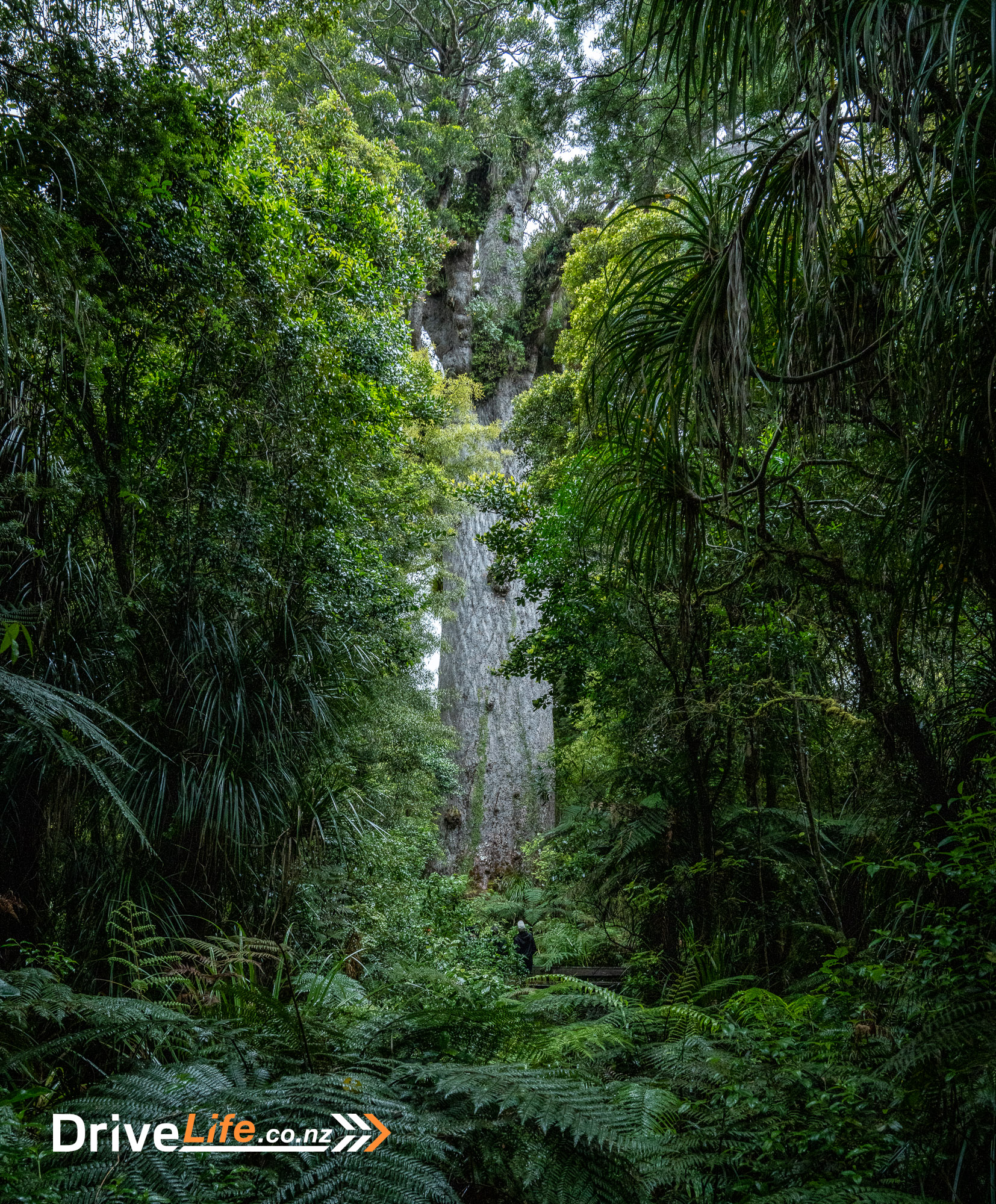
The rain kept on for the rest of the day which made the drive back feel a bit longer than we wanted, however, SH12 is the road less travelled, so there was not much traffic until we joined SH1 at Brynderwyn.
Back in Auckland, the mighty BMW iX1 had 26% of its battery left. This was the lowest it had run over the whole weekend, which shows that charging short times often helped to keep it topped up and avoided any range anxiety issues.
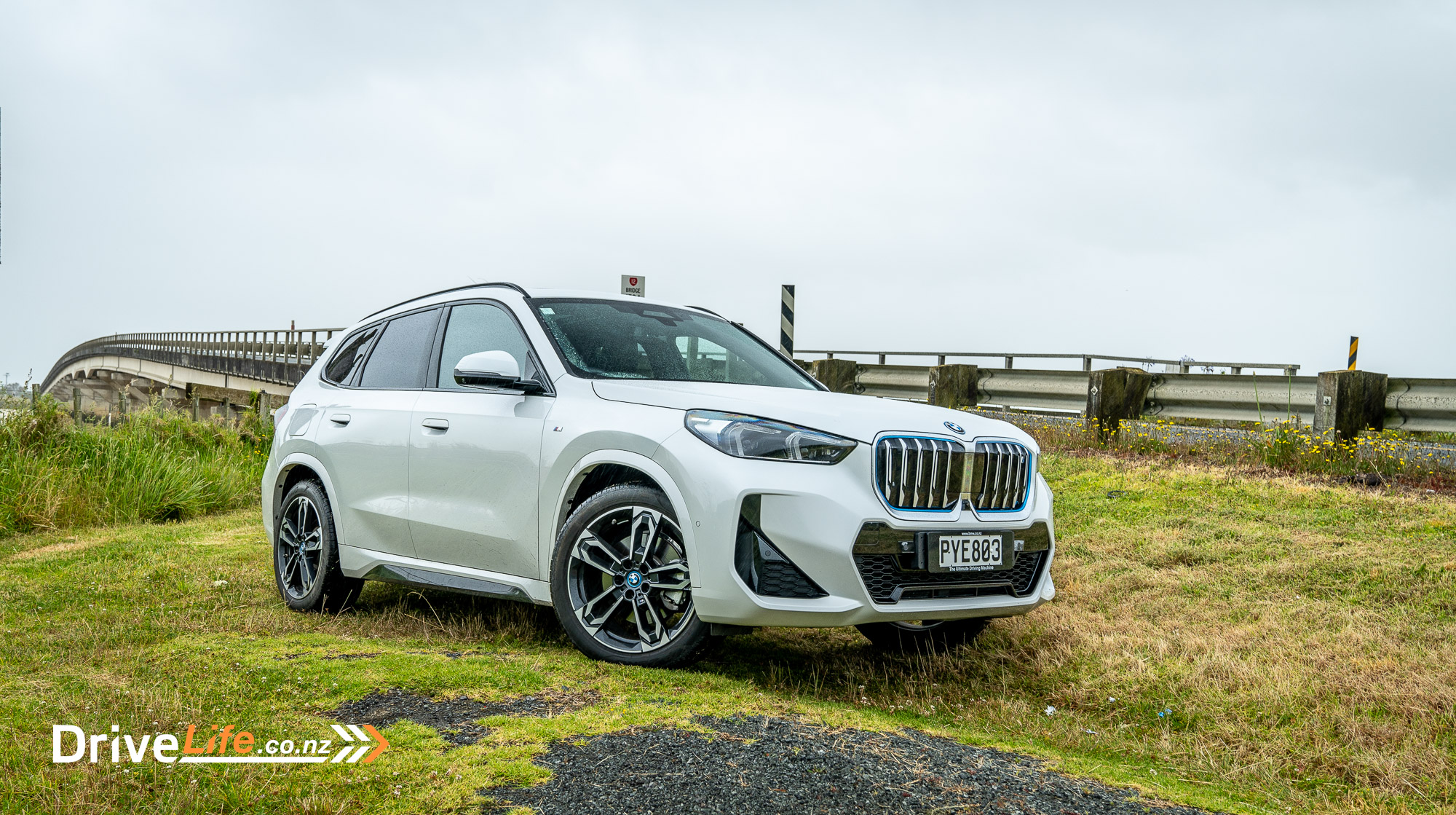
BMW iX1 xDrive30 – Our Thoughts
The BMW iX1 handled itself very well over the weekend. Even for a tall driver I found the iX1 to be great on long drives, and I never felt cramped or uncomfortable. The spec level of the iX1 ticks all the boxes for a great long weekend road trip.
As an electric vehicle, it always kept me informed on our remaining range so that I could plan out the top-up stops. There was loads of room for bags and I think we would have had no problem in getting two more people in with luggage for the weekend too.
This trip covered more kilometres than the other weekends; 1,220km in 4 days. During this weekend, one thing that struck me about road trips in fully electric vehicles, is that you have to stop often to recharge. It seems obvious but to the driver, this is a bit of a blessing, as each stop is at least 30 minutes to an hour. This is a nice length of time to be out of the driver’s seat, allowing the mind and body to take a break. This is something we do not always do with ICE vehicles, as the refuelling stop can be as quick as 5 minutes, and then you are back on the road again. I know I have done that several times whilst travelling, which made me appreciate the breaks while charging multiple times during each day.
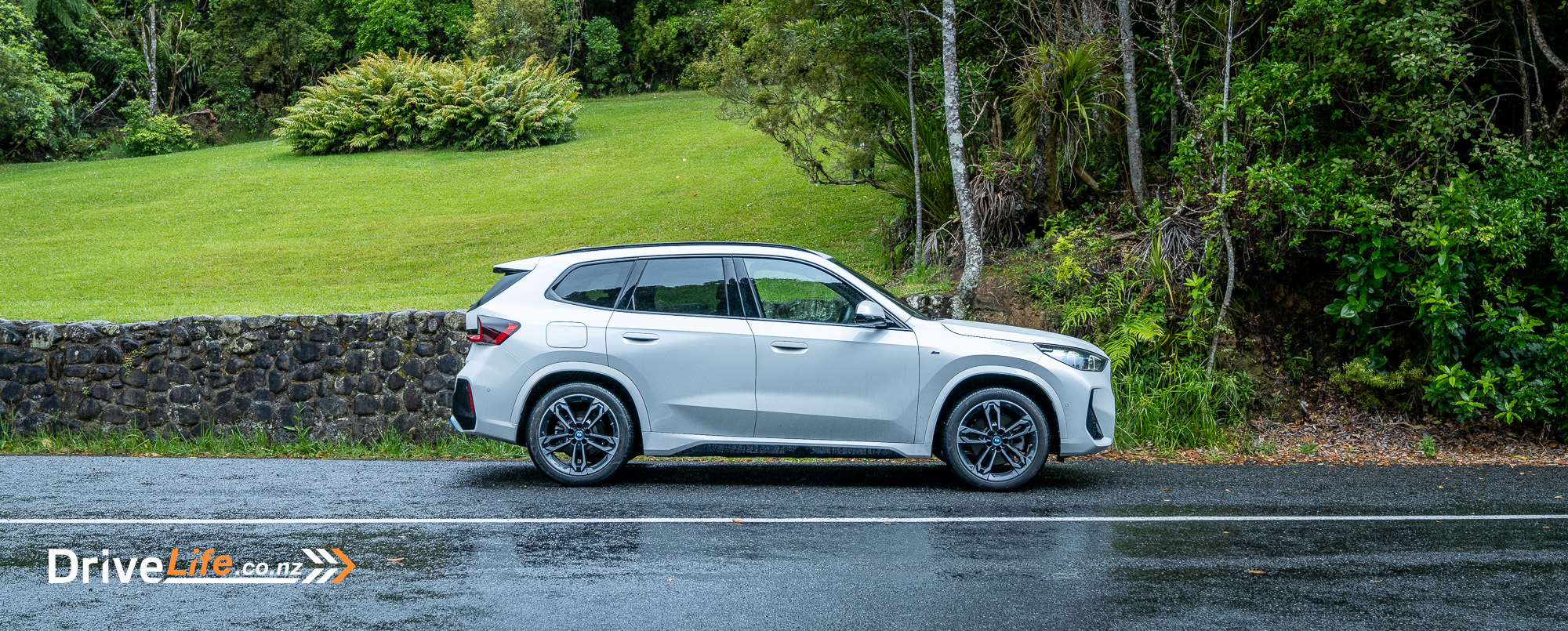
BMW anticipates rapid growth for its fully electric vehicle line-up and future volume. In 2024, at least one in five of its vehicles should have a fully electric drivetrain. By 2025, one in four new vehicles should be fully electric, and by 2026, one in three. Over the next decade or so, the BMW Group plans to release a total of about 10 million fully electric vehicles onto the roads.
Keep on the lookout for the final DriveLife X-Factor Weekend in the coming weeks, where we will take the BMW X7 to Milford Sound in the South Island.
Previous X-Factor Weekends
